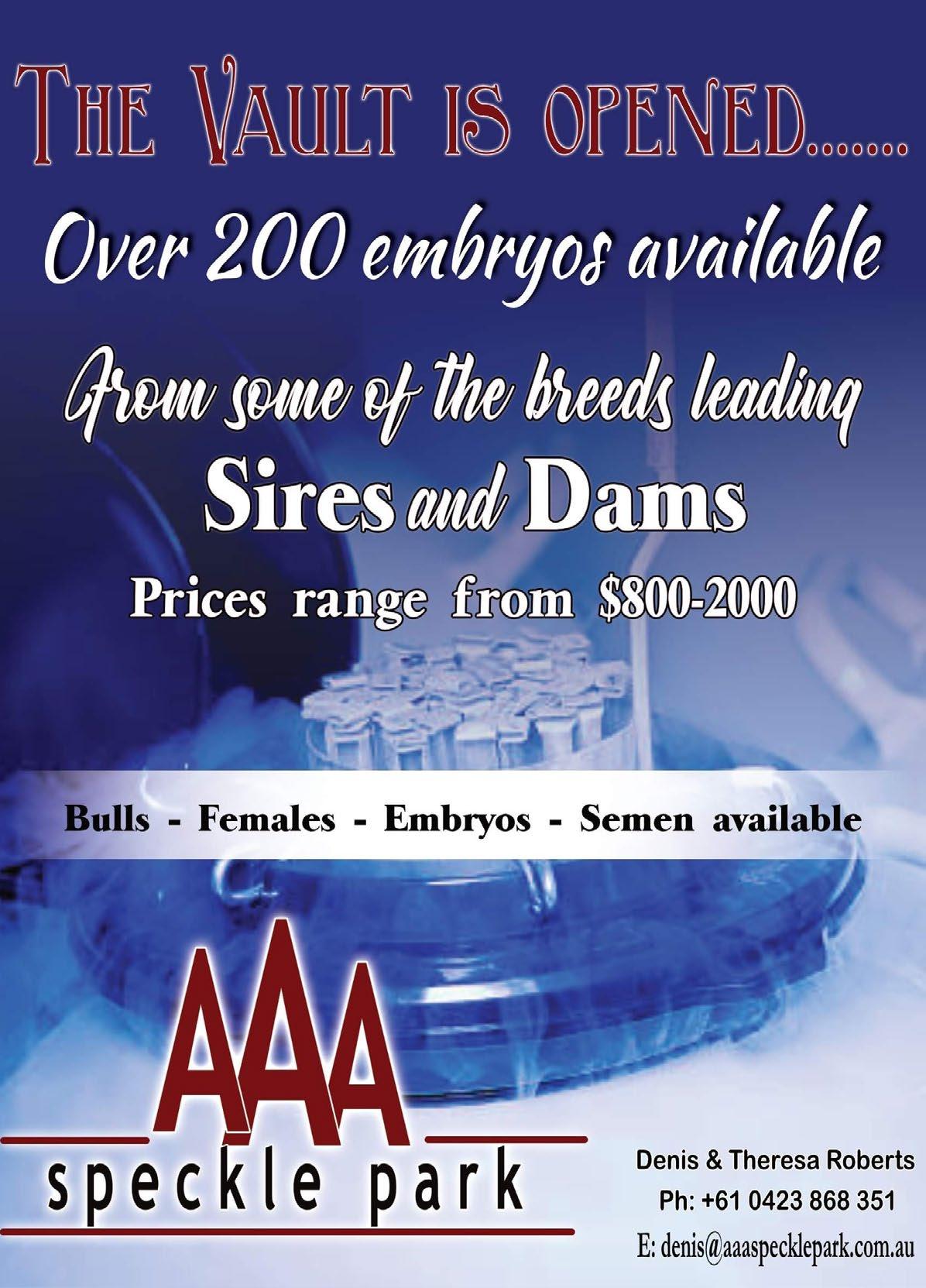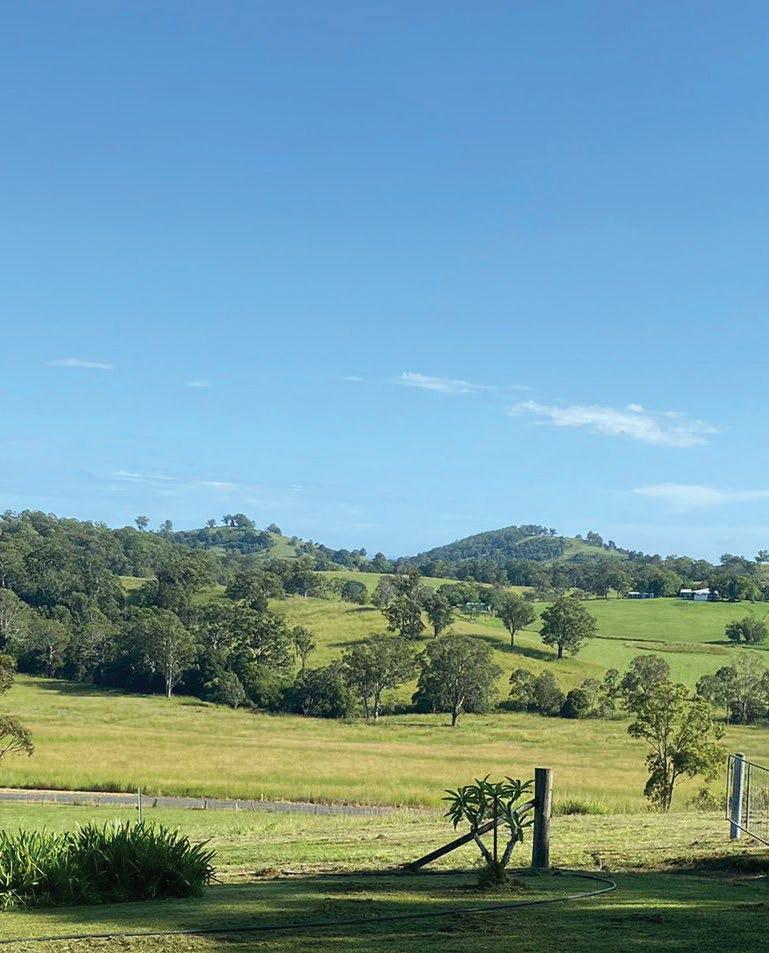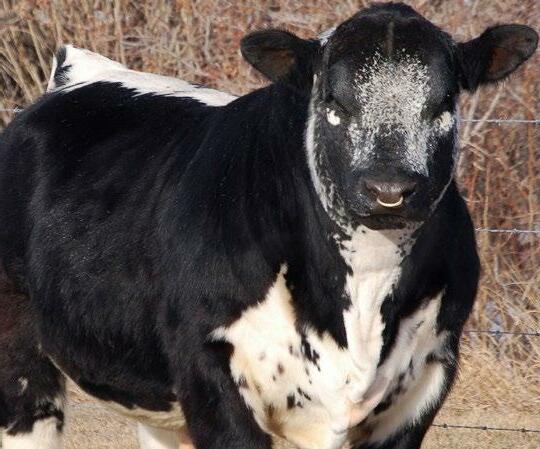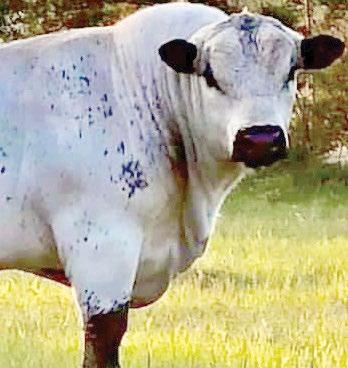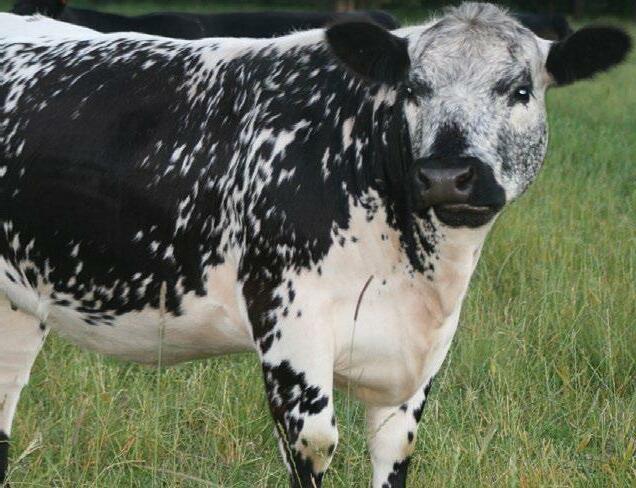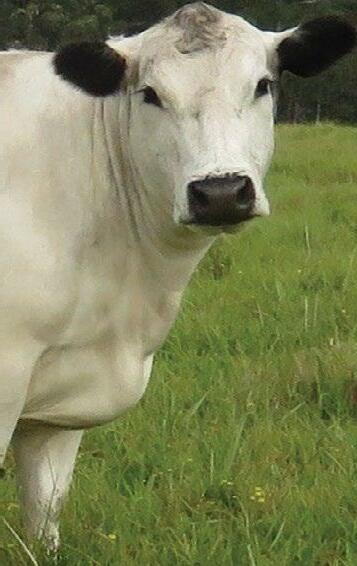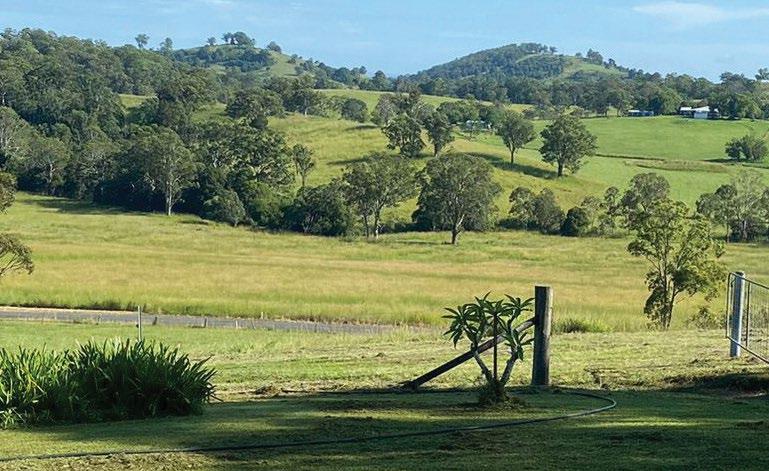






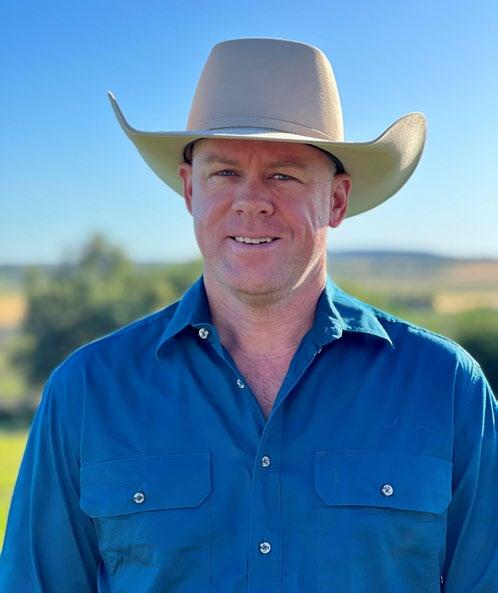

is underpinned by the commercial relevance of our breed, which is founded on product quality.
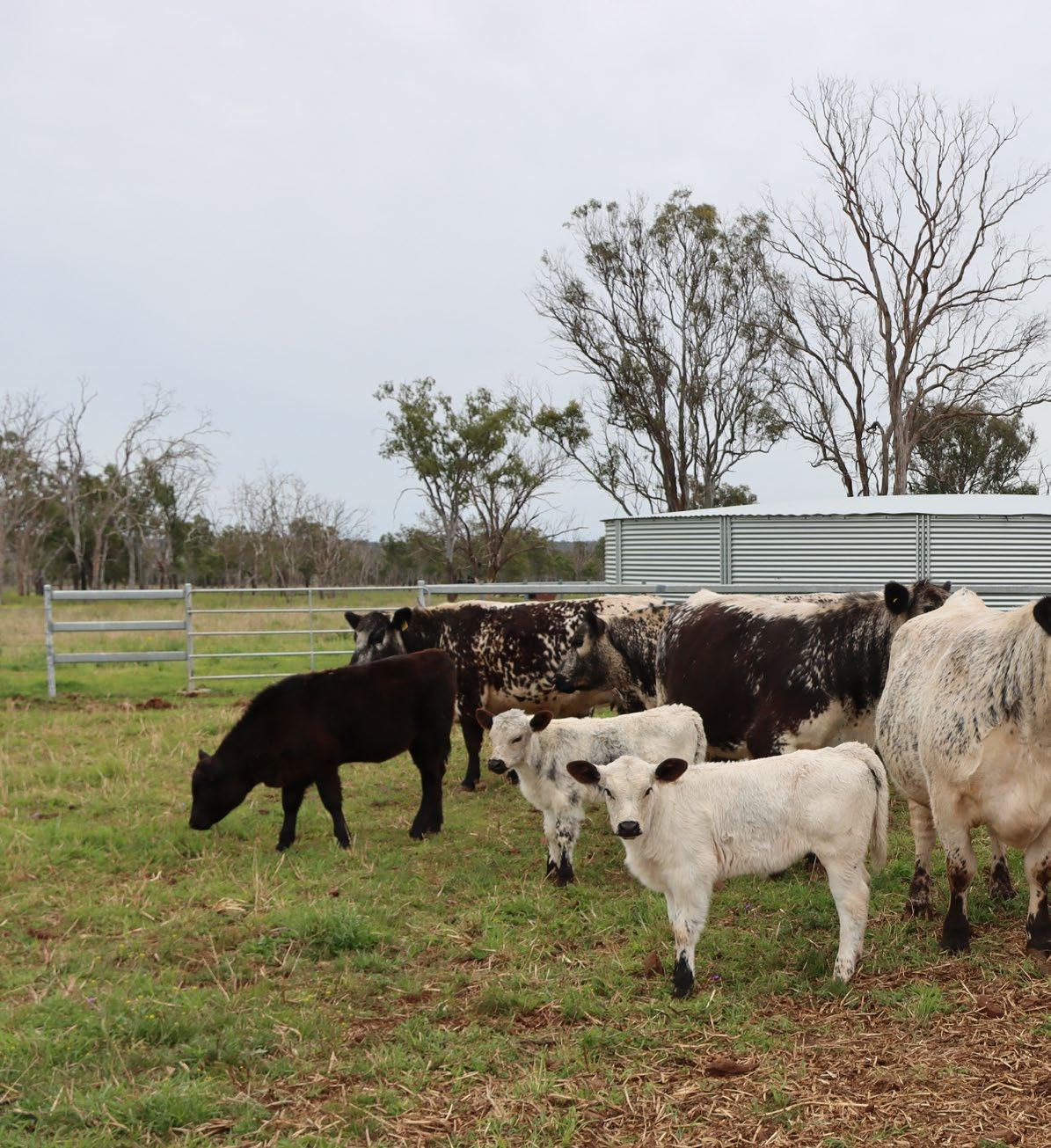
Showing our breed excellence though facts and figures will remain forever critical, including the local benefits to breeding selection and external marketing benefits for downstream end-users.
This magazine is testament to the wonderful work of the Marketing & Events Sub-Committee. The committee was recently formed and in a short amount of time has published two Newsletters, sought corporate sponsorship, published show agendas and results, hosted charity auctions and published this magazine, with no more than five members. We salute you team!
It’s what’s under the coat that counts they say! Well, that is true, and the Sydney RAS Sub-Committee will showcase the Hook, Hoof, and take control of the main arena next year for what will be the largest ever display of Speckle Park cattle Australasia has ever seen. This will be big! Our team, led by Tim Bell, will not rest between now and Easter 2023 to ensure the world takes notice of our breed at the Sydney Royal Easter Show. Please register your interest to get involved as we need supporters to make this great event even greater.
As we turn the page on 2022, I take the opportunity to recognise the strong and positive collaboration experienced between the Canadian Speckle Park Association, American Speckle Park, and Irish Speckle Park. The success of the breed is not limited to a continent, but a global movement of producers who actively champion the breed to greater heights.
We look forward to building on these relationships in 2023 and beyond for the greater good of the breed.
Our next horizon is the end of 2023, and the landscape is positive. We will be establishing a sub-committee for Beef 2024, supporting regional and royal shows at which Speckle Park is the feature breed, conducting further trials and enhancing our commercial market focus. The Speckle Park community shares a sense of positivity towards the future, and we continue to look for new and exciting ways to advance.
We expect to be establishing new relationships with research centres, participating in leading edge environmental trials, and exploring new technologies to equip our members wherever possible with tools to stimulate their programs. Our unwavering commitment to the continued and enduring growth of Speckle Park as a leading beef breed globally will be evermore solidified throughout 2023.
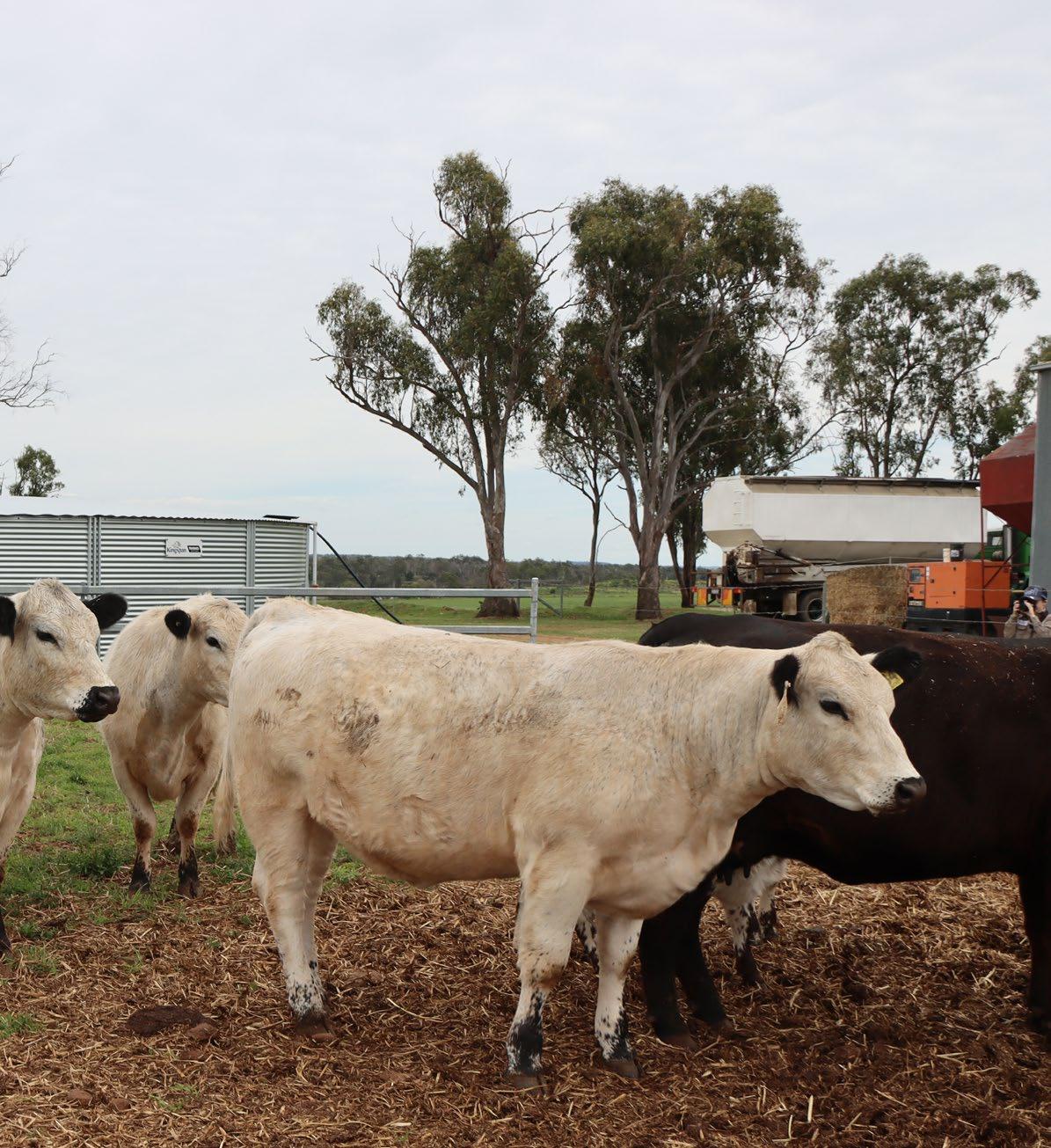
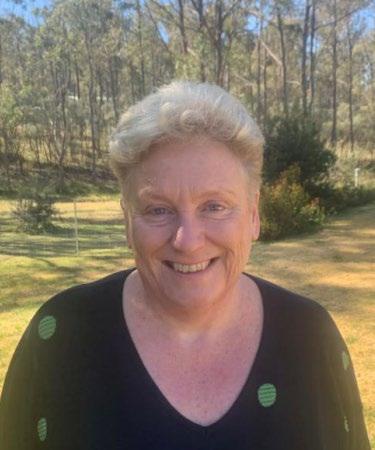
In reading this magazine we trust that our passion for Speckle Park cattle is imparted to you, as we seek to raise greater awareness and share personal testimonials where a variety of people and businesses are benefiting from Speckle Park.
Mitch Warrener Chairman

Board of Directors
Speckle Park International Limited
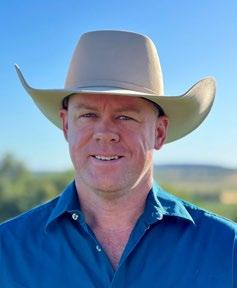
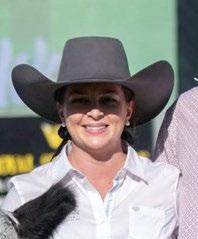
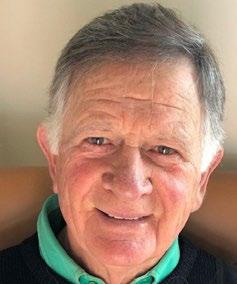
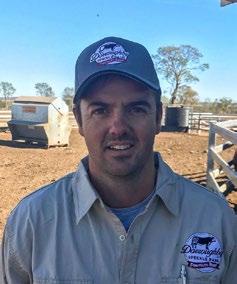

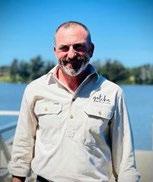
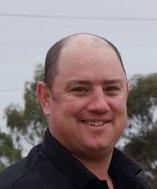
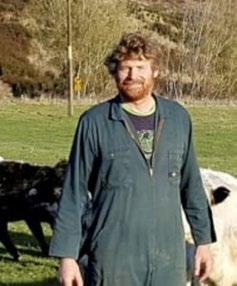
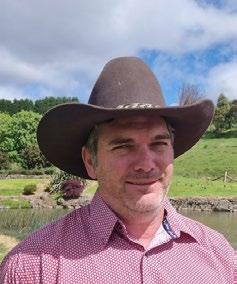


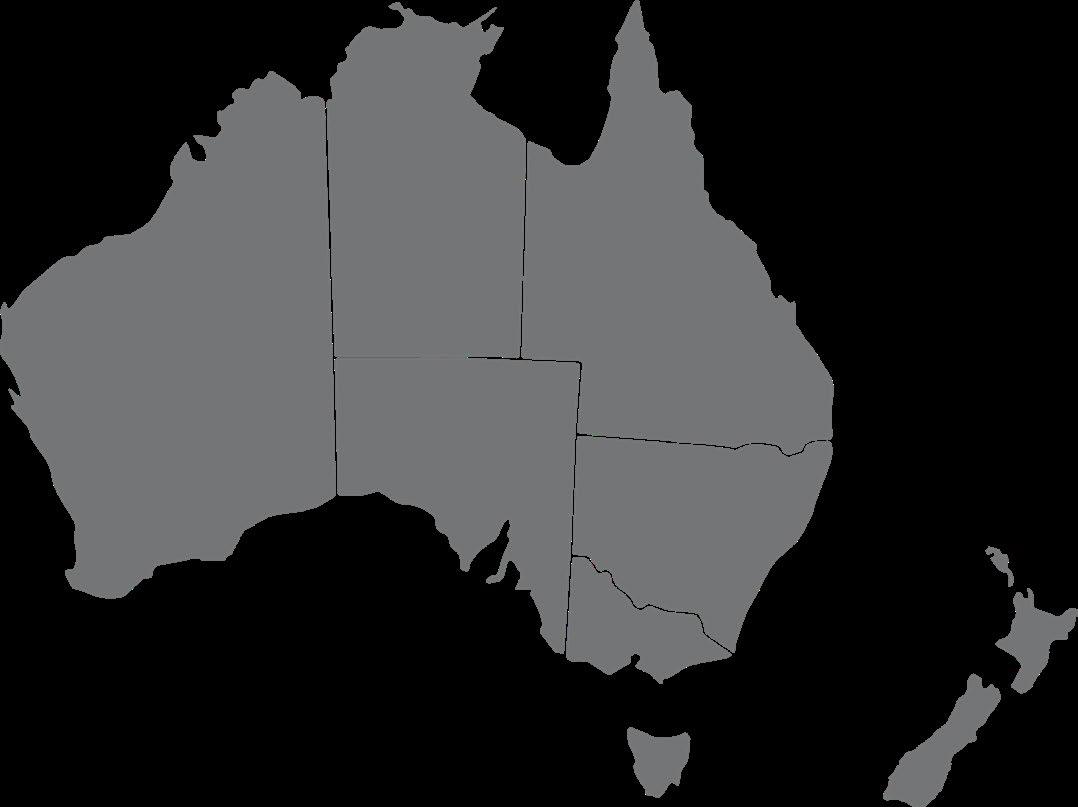
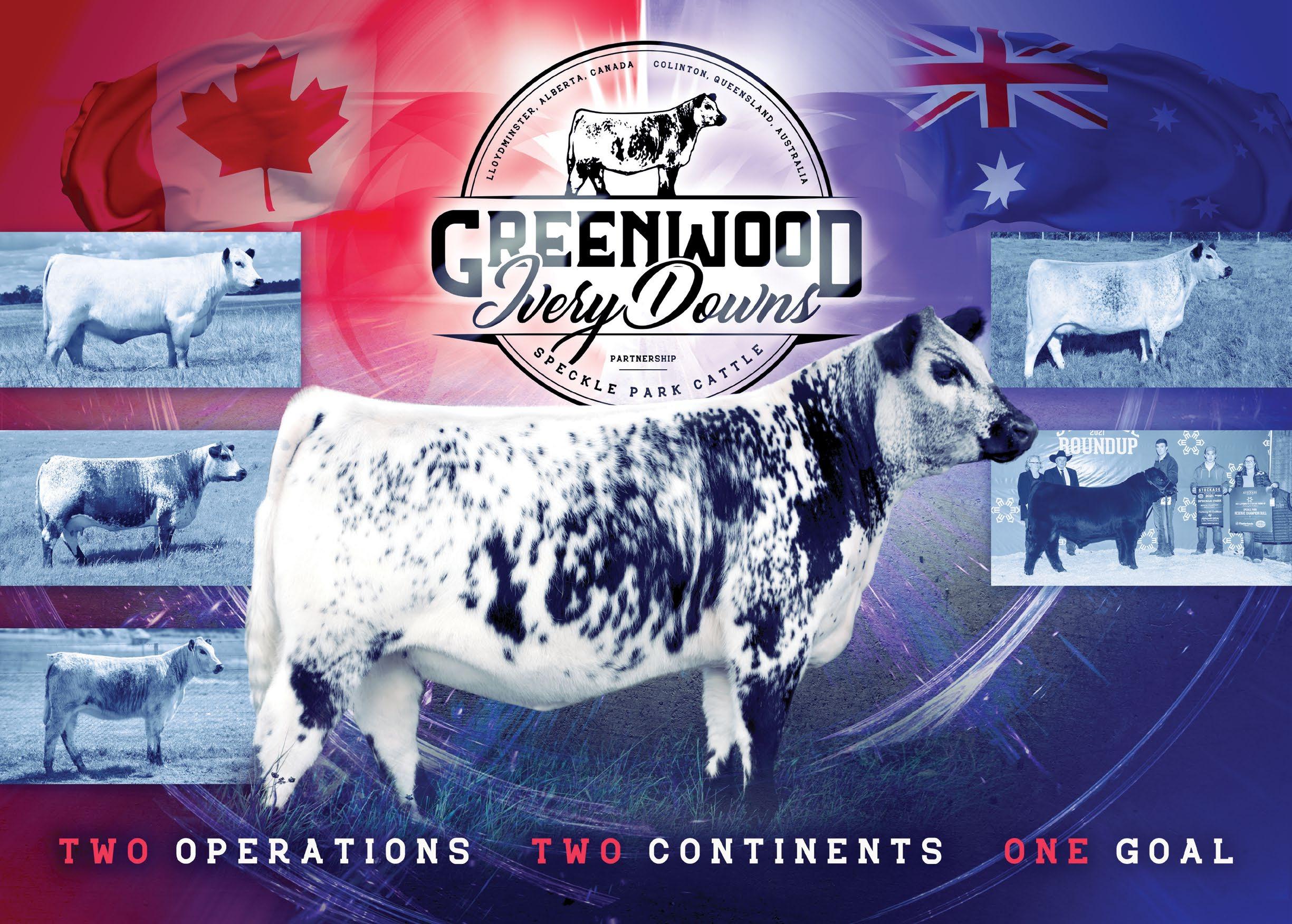
The partnership between Greenwood and Ivery Downs brings forth the commitment and means to make a marked contribution to the Speckle Park breed BY securing the finest genetics that are true to breed character, resulting in superior quality and performance

A brief history of the Speckle Park breed and its’ growth across the globe.
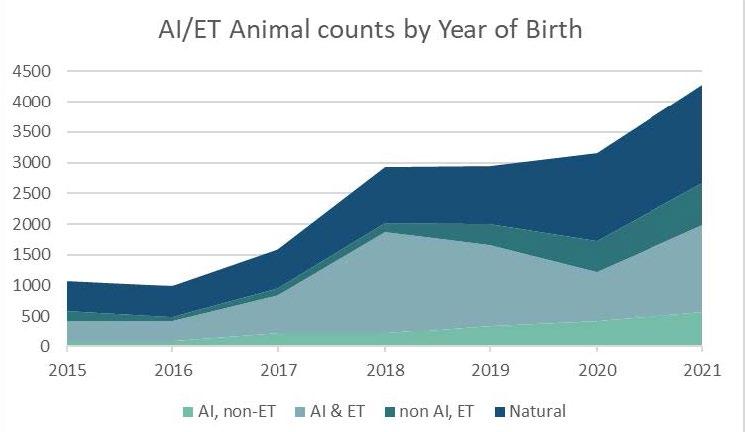
People will tell you without hesitation that the Speckle Park Breed is derived from Angus, Teeswater Shorthorn and White Park cattle, but in reality this is only partially the truth. In a breed that has so very much to offer, you will come to find out why through understanding the thought processes and careful selection of traits that were bred for specifically in a myriad combination of genetics and breeds, all bringing the best that each had to offer, to combine into what we now know as the wonderful Speckle Park breed of beef cattle. Here is an outline of how it all came to be…
In 1939 Mary Lindsay purchased a pregnant Shorthorn like cow (roan but with more distinct spotting and a white line back stripe) from her father. This cow produced a white heifer with black points, who Mary kept. Both the cow (and later) her white heifer were bred to a Highland bull. The resultant bull from this joining was bred to a herd of Jersey cows. The offspring by this bull were “yellow” roan linebacks and were excellent milkers. The heifers from this combination were kept and bred to an Angus bull with resulting calves being black and white spotted. These heifers were then retained and crossed with other Angus bulls and Galloway bulls. Mary noted that the early day Shorthorn could have included a bit of wild white cattle blood from the Park cattle in Britain.
From the Shorthorn came fast growth habits, good marbling throughout the meat and some of the coat colour patterns. From the Highland came a genuine hardiness and ability to
thrive in extreme conditions, sound beef qualities and docile natures. The Angus contributed excellent feed conversion, good beef eating qualities and influenced polled heads on the cattle. The Jersey enriched with their high fertility traits, creamy, high quality milk and tender and tasty meat qualities and the Galloway increased hardiness and the ability to thrive on low grade feed, and maintained good beef qualities and good temperaments. You can see in our modern-day Speckle Park cattle, the influences that have derived from each breed.
In early 1963, Bill and Eileen Lamont acquired a heifer from Mary Lindsay, a white with black spots, who would later become recorded as Cow #1. Throughout the later part of the 1960’s, the Lamonts’ purchased several more spotted lineback cattle from Mary, and bred them to their Angus bulls. In the late 1970’s, Mary wanted to retire and sell her cattle. This distributed these spotted lineback cattle to several other parties who took quite a fancy to breeding these good-looking and uniquely coloured cattle. In 1973, 3 steers showed at Toronto Royal, quite possibly the first public showing of what were to become Speckle Park, as at this stage these “fancycoloured cattle” didn’t even have a name. These 3 steers sure got people talking.

In 1974 the Lamonts’ sold their Angus herd and kept their spotted ones, and in the October of 1976 Bill and Eileen decided to contact the Canadian Department of Agriculture to enquire about the creation of a new breed, to become known as Speckle Park. What a historical Decision! By this stage local butchers knew they were onto something special… beef with extra flavour and tenderness, from animals fed basic feed with no overblown rations.
On August the 23rd 1985 it was time to start an Association for the breed. In these fledgling times there was not much money and no big corporation backing, only the enthusiasm of breeders and butchers who believed in the cattle and the meat quality. 1986-1988 saw the first official Feedlot Tests against other breeds. The Speckle Park steers were the youngest in the project, yet scored in the top ranks for feed to gain ratio and rib eye measurements. Since these initial Feedlot tests, Speckle Park consistently Score the highest for Yield percentages, Ribeye measurements and IMF and are regularly grading AAA.
At the 1989 Alberta Bull Congress Steak Challenge, Speckle Park were winners in ALL categories and set a new standard. Since 2001 at the prestigious Calgary Stampede Carcass Classic, Speckle Park have been the breed to try to beat. In 1993 Speckle Park was declared an “Evolving Breed” by Agriculture Canada.
In 2006 Speckle Park became a Recognised Breed with distinct breed status. The Canadian Speckle Park Association (CSPA) became a member of the Canadian Beef Breeds Council in 2007. Also in 2007, the first frozen embryos and semen were imported into Australia. Speckle Park International Inc. was first incorporated in Feb 2008 and became a company in 2019. Speckle Park Cattle in Australia have gone from strength to strength proving they can survive and thrive in temperatures from minus 40 degrees Celsius in Canadian winters, to plus 40 degrees Celsius in Australian summers.

The 2020 Australian Beef Cattle Registrations by Breed Society shows the increase of Speckle Park purebreds registered since 2011, even with numbers increasing exponentially during the height of the worst drought in living history (2017-2020), whilst other breeds declined dramatically.
The graphs below show the surge of increasing Speckle Park calf registrations from 2015 to 2021 (with many more expected in 2022 and beyond) and Speckle Park International memberships from 2019 through to 2022.
With many breeders resorting to more embryo transfer techniques recently anticipated projections for 2022/2023 are predicted to launch Speckle Park cattle amongst the fastest growing cattle breeds in Australia, and firmly cement our breed as a force to be reckoned with in the Beef cattle Industry.
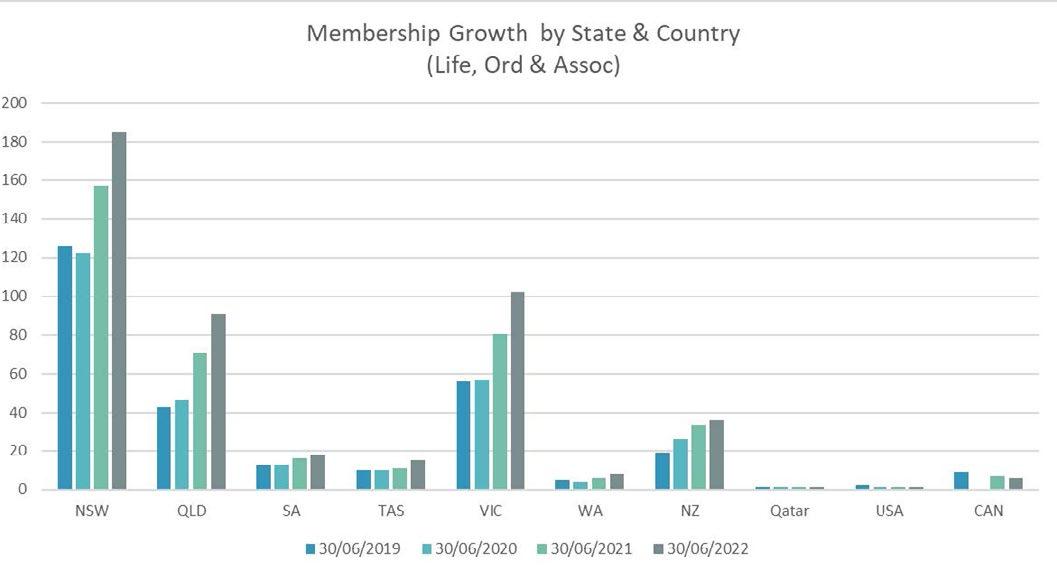
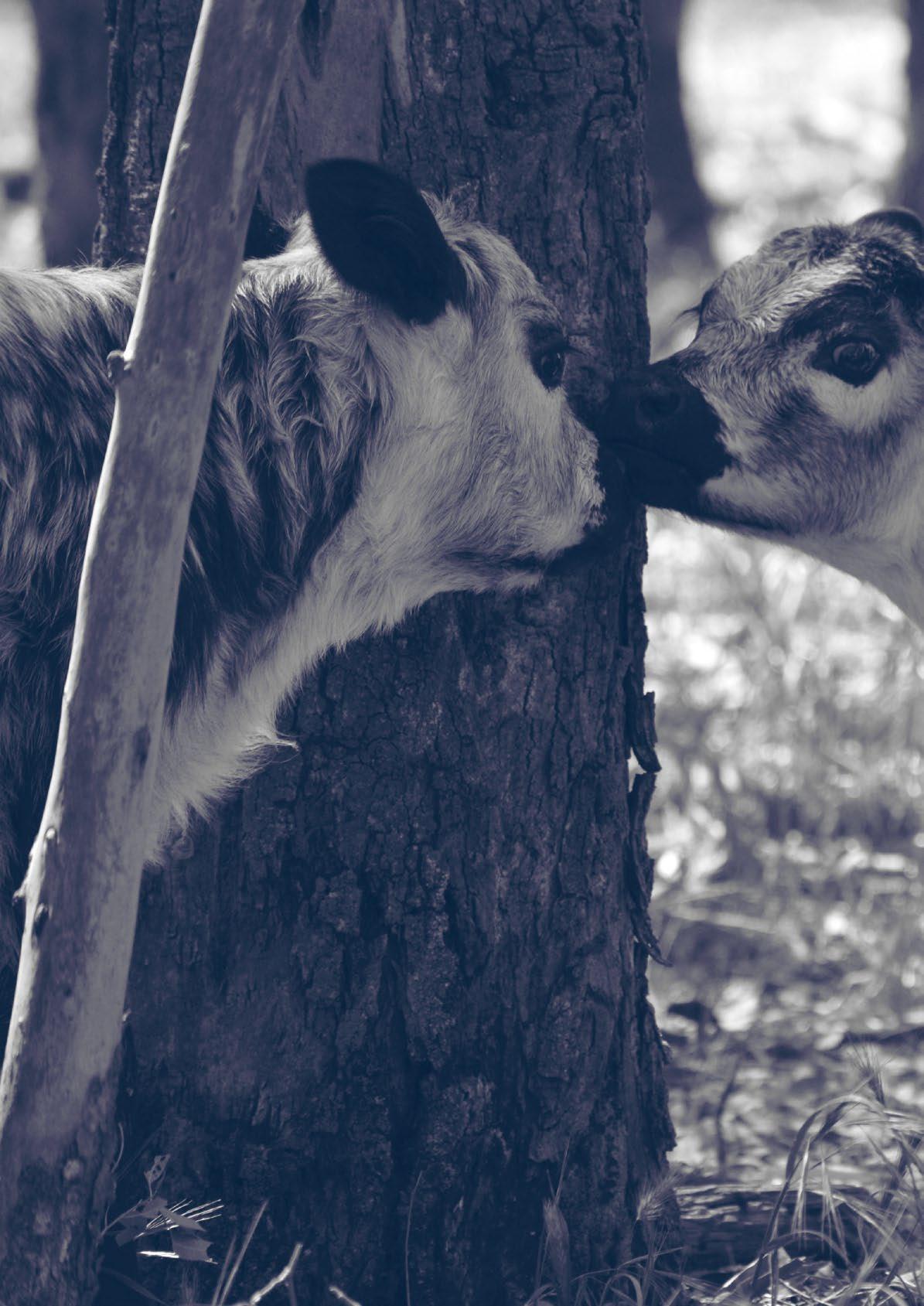
The Speckle Park Youth Committee... a team dedicated to engaging, educating and retaining young people in Australian Agriculture and Speckle Park. Throughout the course of 2022 the Youth Sub-Committee have run two successful education days with another one planned in NSW as well as the annual calendar competition. Their monthly zoom meetings have been very busy planning the events for this year, as well as looking into next year toward the Speckle Park Feature Show in Sydney in April.
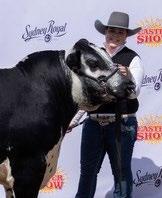
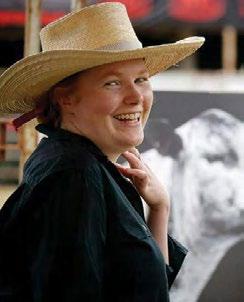
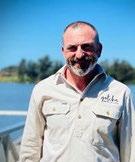
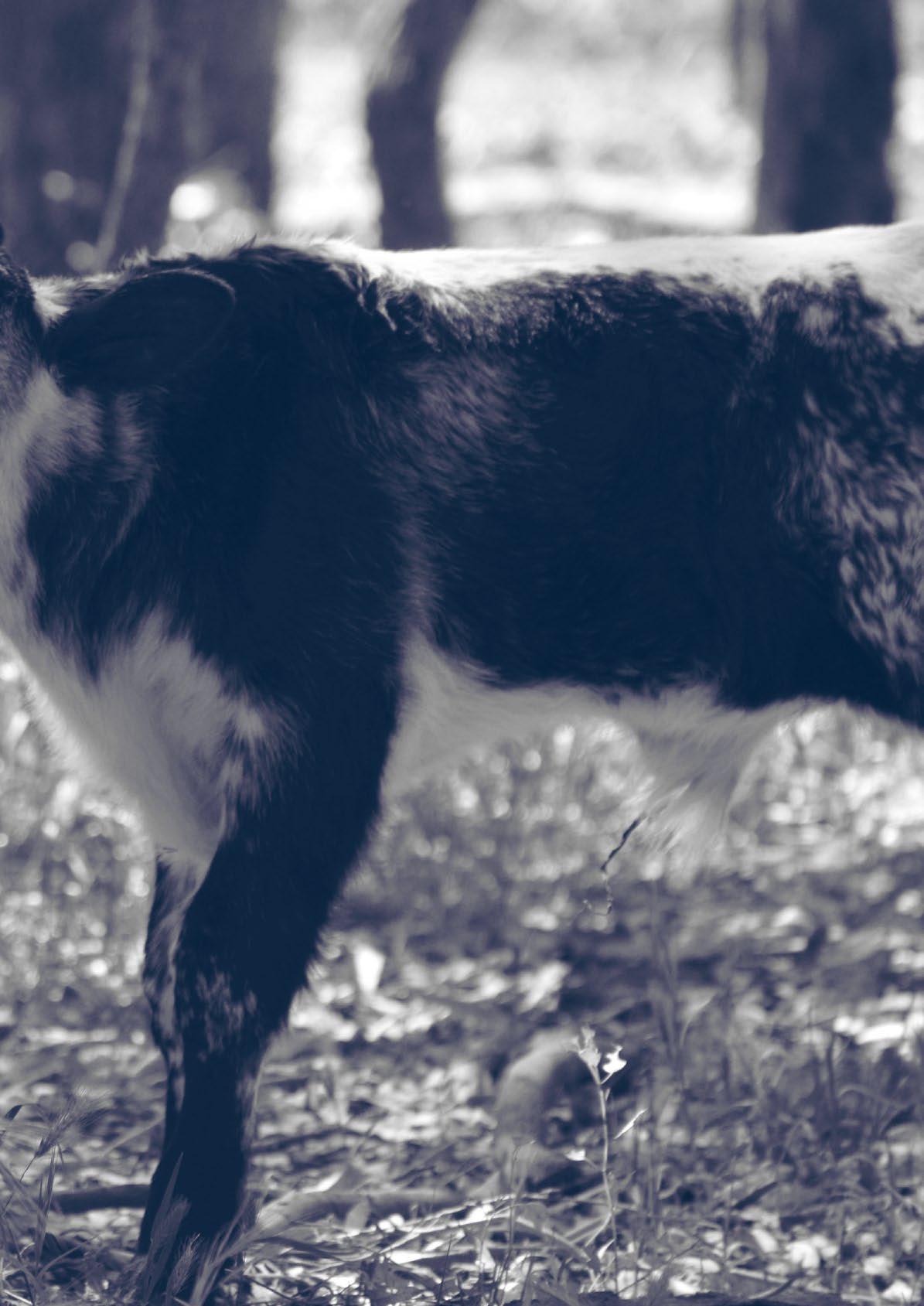
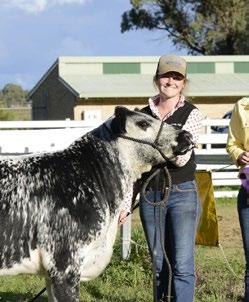

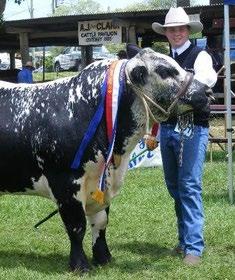
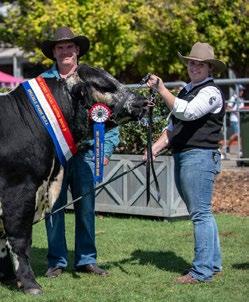
The Sub-Committee is looking forward to bringing Speckle Park Youth many more exciting and engaging programs and events in 2023.
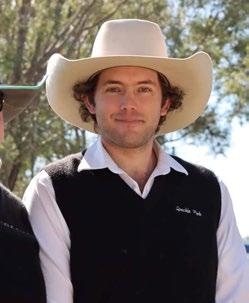
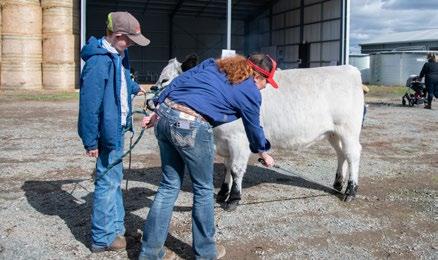
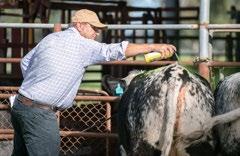
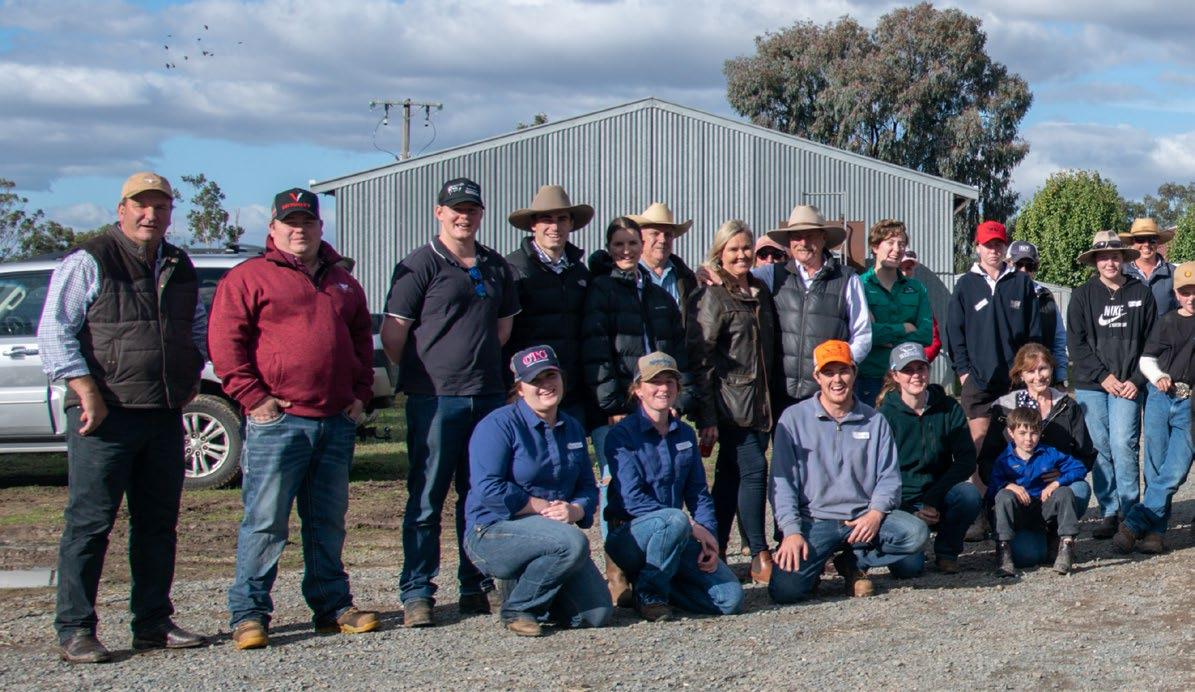
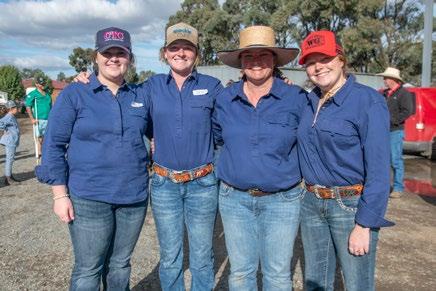

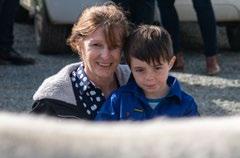
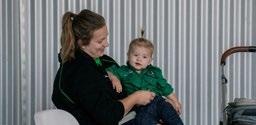
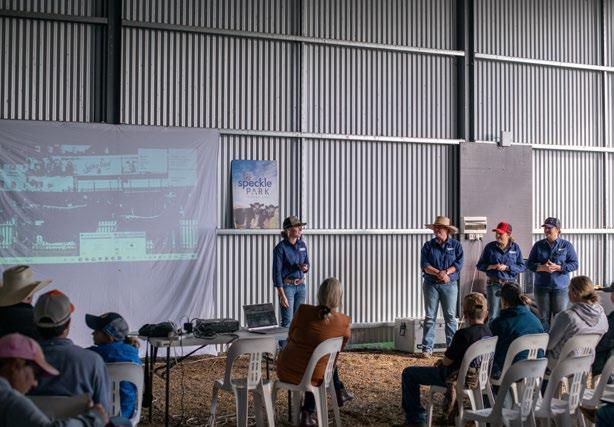
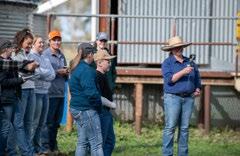
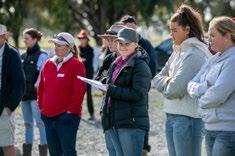
On the 30th of April this year the first ever Speckle Park Education Day occurred. This fun-filled and informative event saw over 40 enthusiastic attendees travel from around Victoria and New South Wales to Jackungah Speckle Park Stud at Pine Lodge, Victoria.
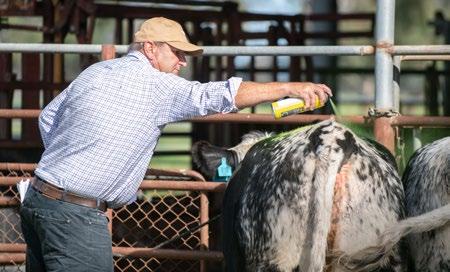
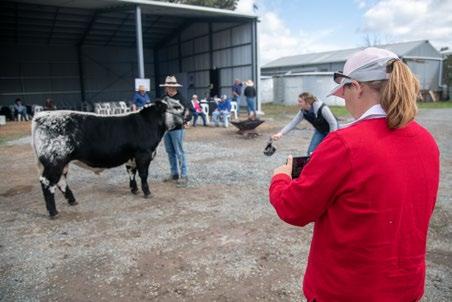

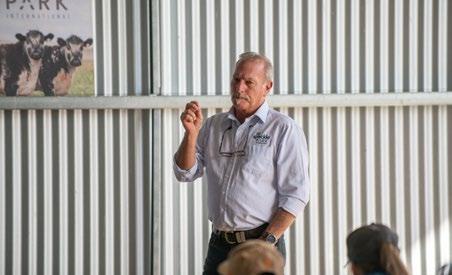
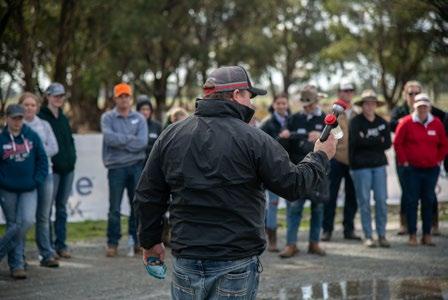
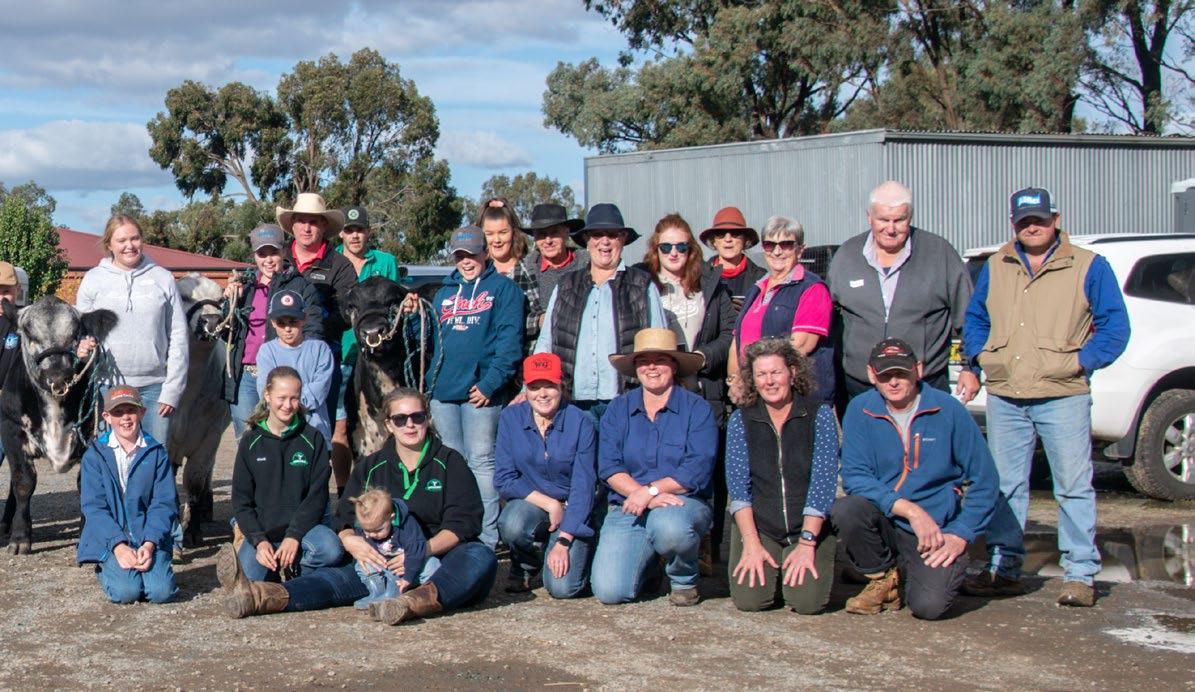
We had a wide range of ages and experience levels attend the day and we were pleased to receive many great compliments following this occasion. The topics explored were the History of Speckle Park, Speckle Park Beef, Marketing, Hair Care & Show Prep and Photography & Parading.
A special thank you must go out to our presenters, helpers and committee members for working tirelessly together to create such a successful event!

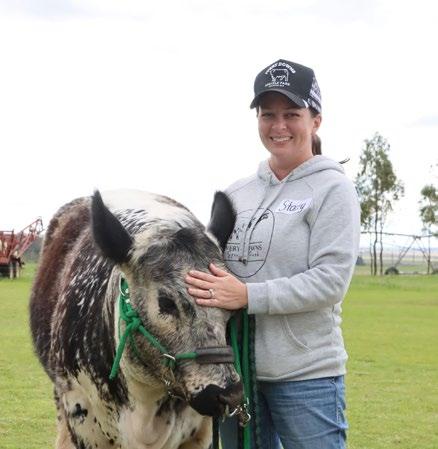
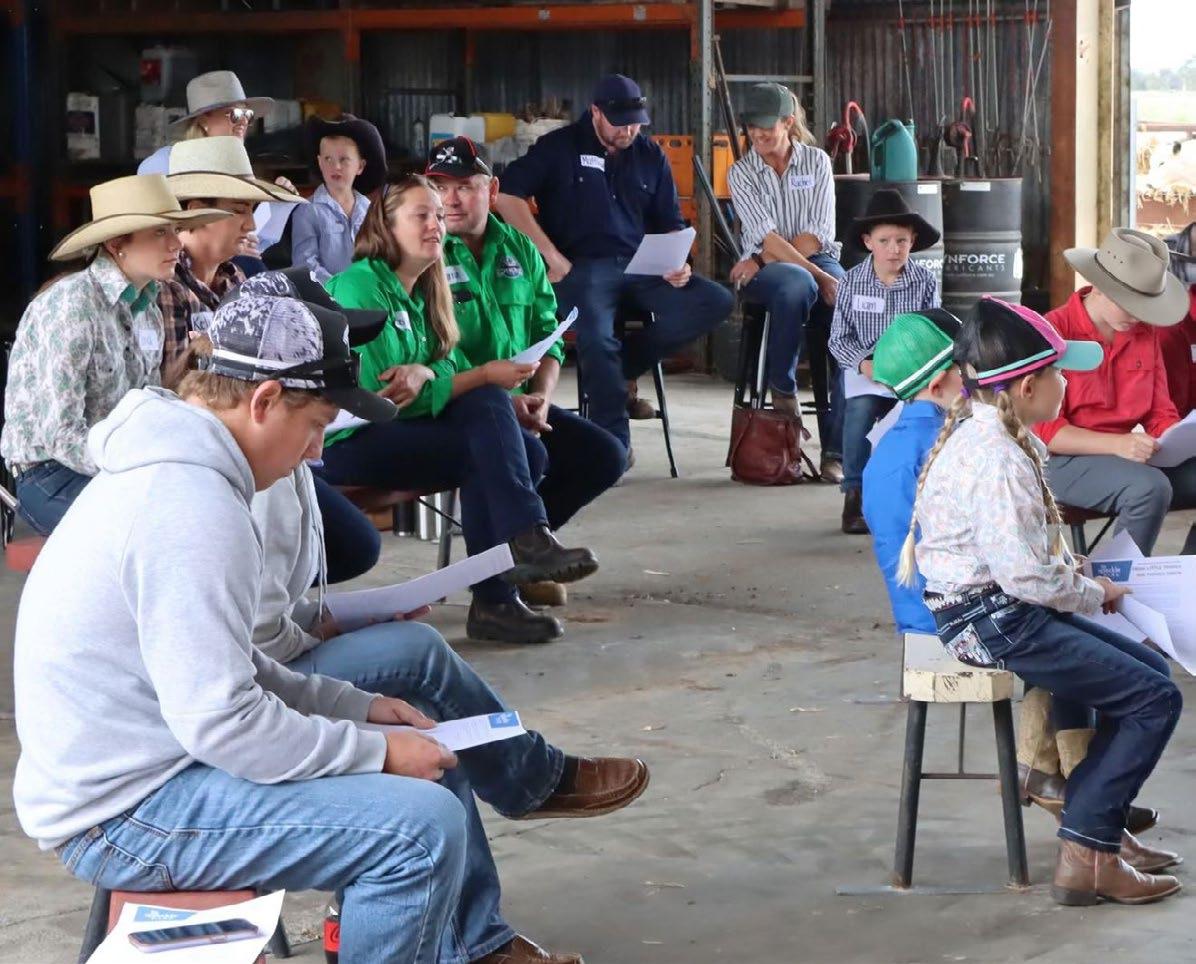
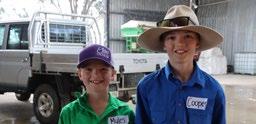
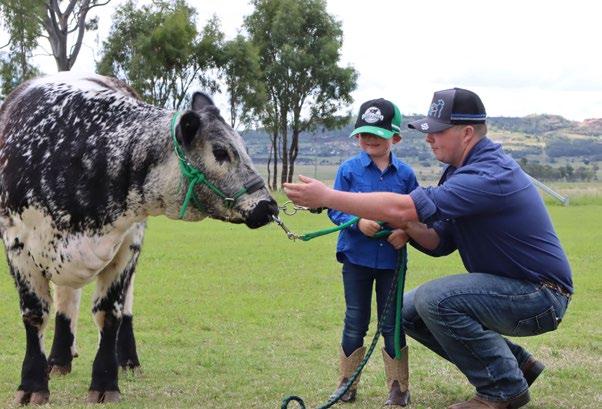

On the 1st of October 2022, the Speckle Park Youth Sub-Committee held their second Education Day for the year. The event was held at Dorroughby Speckle Park in Toowoomba QLD with the day being a huge success! We had over 30 people in attendance of all ages and experience levels.
The day started off with Tania Paget from Pinnacle Park Speckles talking all things Speckle Park, followed by a Q and A session with the Youth Sub-Committee members.
For the middle session of the day, we were lucky enough to have Kim and Glen Waldron from Elite Cattle Co talk all things veterinary, show prep and show day fitting. The demonstration was fantastic and really hands on, allowing attendees to get genuine insight into what show preparation looks like.
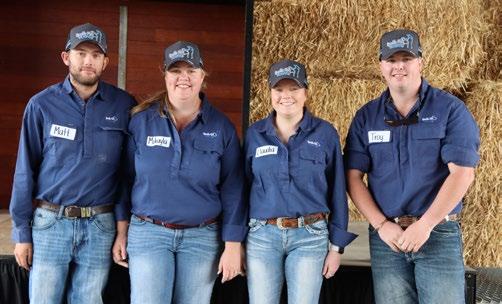
The afternoon session was jam packed, starting off with Travis Deans talking about Body Condition Scoring as well as cattle assessment. This was followed by a presentation by Rob Ashton, a local butcher. He provided valuable insight into the carcase aspects including cuts of beef and where they come from on the animal. The attendees were also able to look at two live steers provided by Dorroughby and take part in a Guess the Weight Competition.
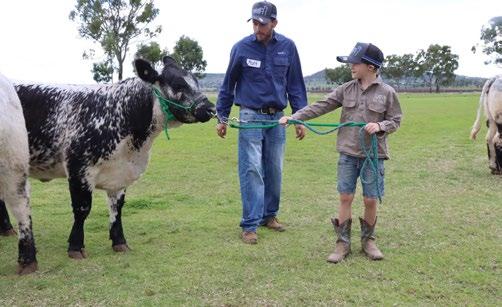
To finish off the day we held a parading clinic with Speckle Park Youth Sub-Committee members as most of our members show cattle all year round. This was great for people who had never shown or led cattle before to get a hands-on experience and learn some great tips.
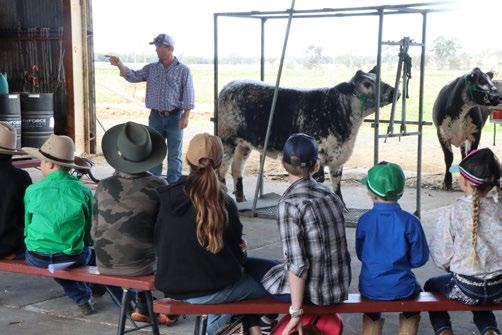
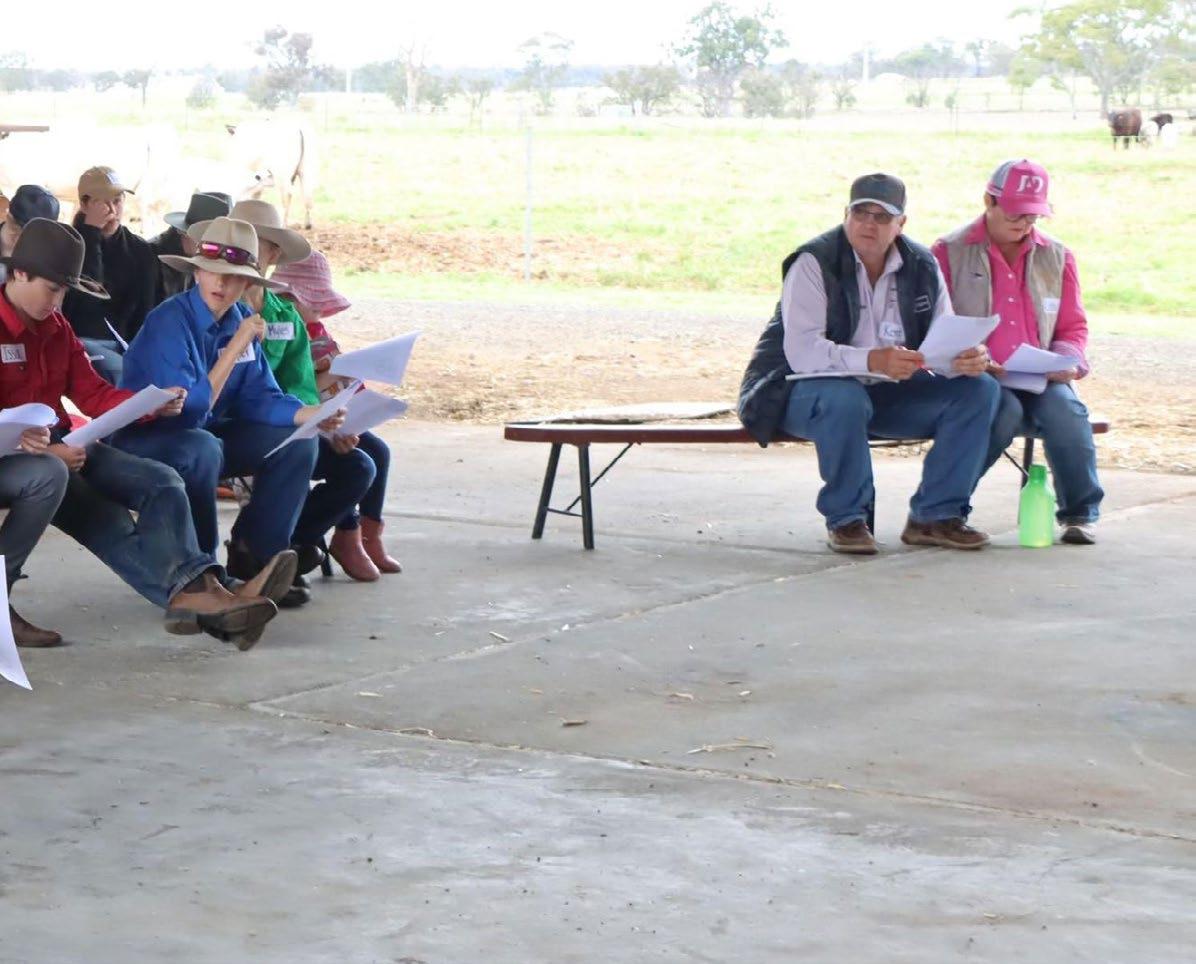
The day was a huge success with everyone gaining something out of the day. Feedback was very positive, and we look forward to holding our next Education Day on the 26th of November in Taree, NSW at Gotcha Speckle Park.
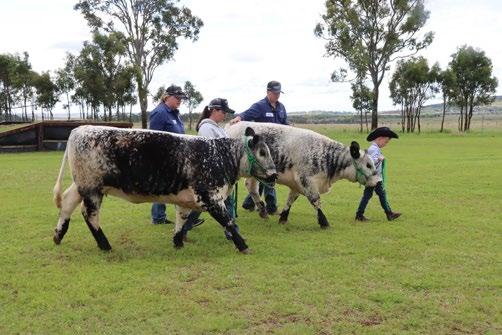
How did your school get into Speckle Park Cattle?
When I arrived at Glen Innes High School as the Ag Teacher, we were already sourcing steers from John and Bev Winter of Winter Speckle Park. Over the last 6 years we have consistently purchased steers from them and have begun showing their stud cattle for them over the last 18 months. We have also used their bull to cover the school’s crossbred females and are producing some great catttle.
Do you believe agricultural programs could benefit from having Speckle Park Cattle?

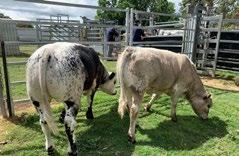
Speckle Park are moderate, easy-doing cattle that thrive in our climate at Glen Innes High School. They consistently have weight gains above 1.5kg/day and with their above average muscling compete well in the Show Steer Rings. The genetics and colour combinations make for interesting classroom discussions. Working with the stud side of Speckle Park has afforded students the opportunity to meet diverse industry leaders and opened doors for further work.
What successes have you had with the Speckle Park Cattle at your school?
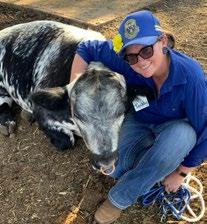
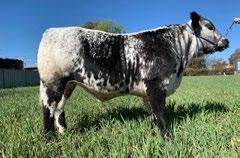
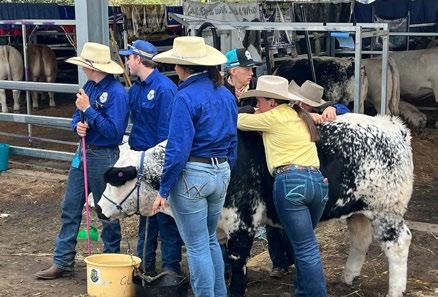
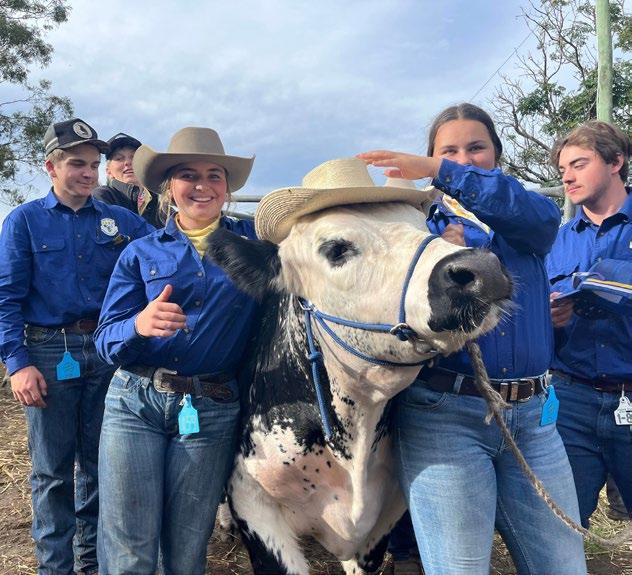
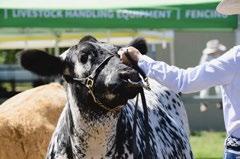
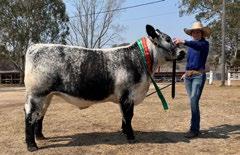
At Glen Innes High School we have had some fantastic results with Speckle Park infused steers, including winning the 2020 Beef Extravaganza Champion carcase and numerous ribbons at shows such as Ekka and Wingham Beef Week. We have also shown Winter Speckle Park Stud Cattle with ribbons at every show we have entered. They are eye-catching cattle and we are blessed with the cooperative partnership with the Winter Family.
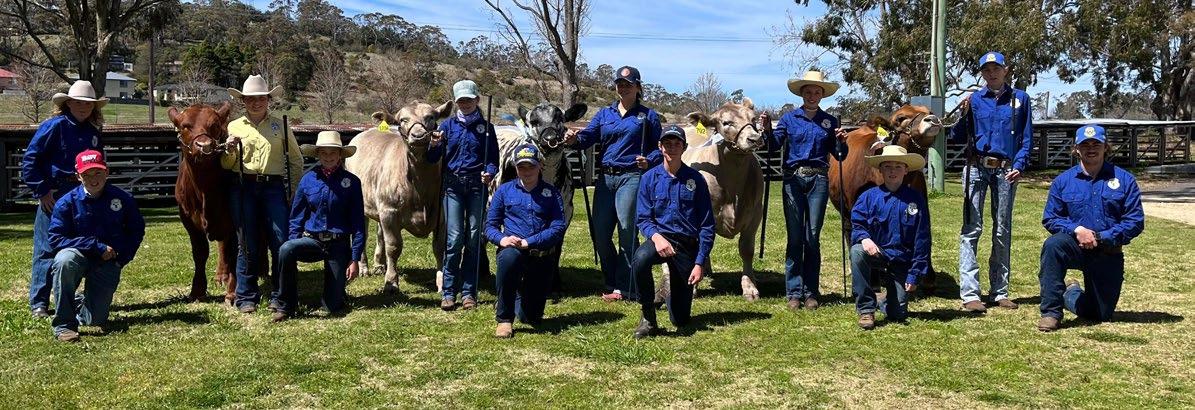
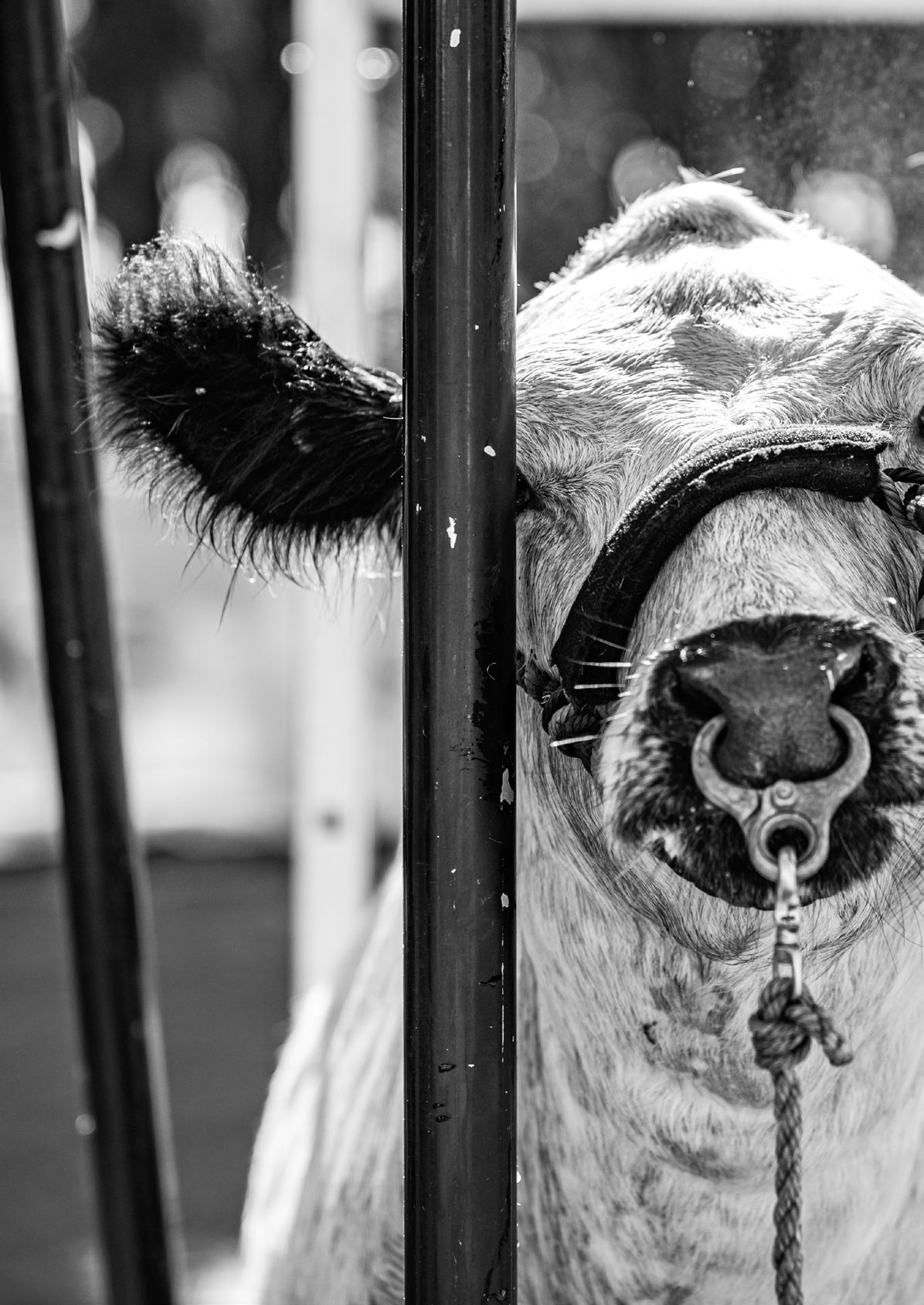
Where are you from: Panorama Farms
Do you have Speckle Park of your own? If you do what are your future plans for them? Yes! Feeding them, giving them water, having a sale.
What is something as a young person in Speckle Park you would like to see happen in the future? I want to have Harrison’s Speckle Park stud sale one day
Who is your favourite cow or bull from either your own stud/paddock or someone else’s? Why? Panorama Georgia and Panorama Ferdinand because I have a little sister called Georgia, and we have a movie about Ferdinand the friendly bull.
Do you have Speckle Park of your own? If you do what are your future plans for them? I do have a few stud Speckles and we have a lot of commercial ones as well. I would love to keep adding to my stud and commercial herds and eventually be selling stud bulls and females all over the place.
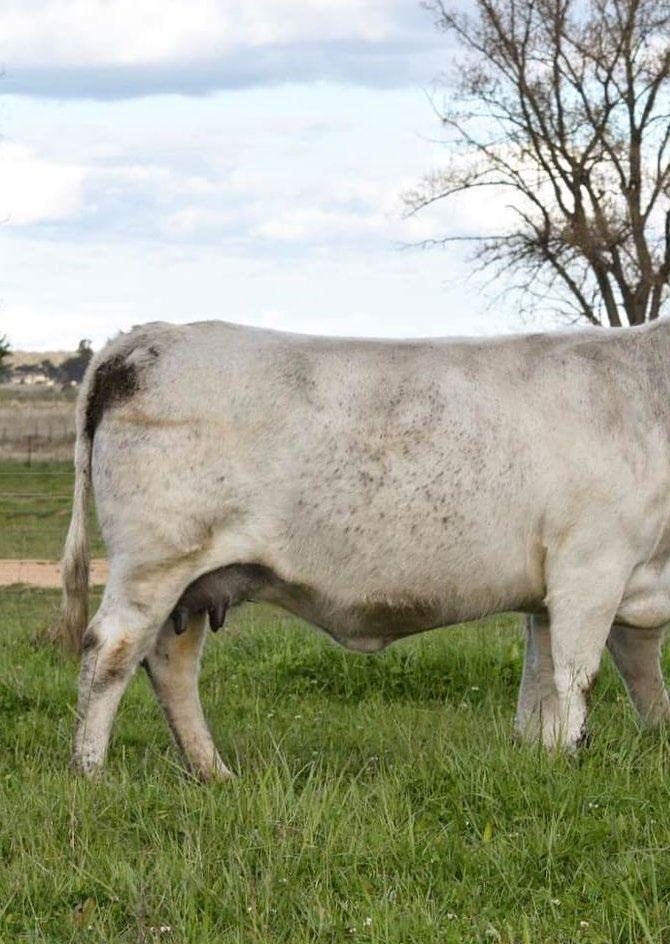
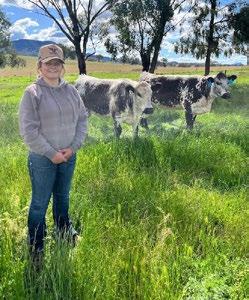
What is something as a young person in Speckle Park you would like to see happen in the future? I would like to see more young people getting into the breed and the numbers of Speckle Park animals increase as they are going to do great things in the beef industry.
What is your favorite thing about the Speckle Park breed? Well, I love everything about them. They are a really good breed to have in any operation as they have a good temperament and are a great meat breed. Their coats are pretty awesome as well.
Who is your favourite cow or bull from either your own stud/paddock or someone else’s? Why? It is so hard to just pick one favourite animal as they are so good and so different. Though I really like CODIAK TERESSA GNK 12T. She is such a beautiful thick deep cow that has done a lot for the breed. I love her style and she has good genetic factors to back her up. I just love this cow.
Where are you from: Victoria
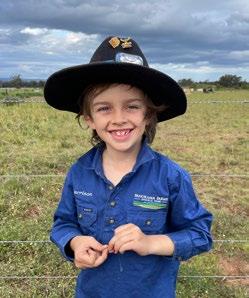
Do you have Speckle Park of your own? If you do what are your future plans for them? I have a small private herd inside the Black Diamond herd. My future plans are to expand my bloodlines and stand out in the show ring.
What is something you would like to the Youth committee do in the future? As a youth member I’d like to see the ability to see how small and large operations run and organise their cattle programs to better understand the wide variety people are selecting for whether that be stud breeding cows or commercial cattle.
What is your favourite thing about the Speckle Park breed? My favourite thing is the uncertainty of the colour patterns and coats as well as the incredible docility within the breed.
Who is your favorite cow or bull? Why? My favorite cow is a hard choice as there’s so many standouts however my most special cow would have to be Black Diamond Marry Me because she was the very first cow I had ever shown and was Reserve Junior heifer at the 2017 Royal Melbourne Speckle Park Feature.
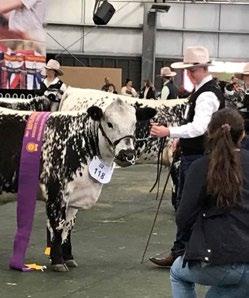
Do you have Speckle Park of your own? If you do what are your future plans for them? Yes I do have some Speckles of my own. My future plans for my Speckles is to one day expand my stud by introducing new genetics into my stud and to grow my herd.
What is something as a young person in Speckle Park you would like to see happen in the future? As a young person in Speckle Park, I think that in the future if we had more youth expos/camps with Speckles and more information days, it can help the youth interested in Speckle Park to expand their knowledge and get an opportunity to chat with other Speckle Park Youth.
What is your favorite thing about the Speckle Park breed? My favourite thing would have to be their lovely temperament, gorgeous and unique markings and just how cute and adorable they are in general.
Who is your favourite cow or bull from either your own stud/paddock or someone else’s? Why? I would have to choose the bull Wolf Lake Field Ready. I chose him as I think that he was a well put together bull, he had a great structure, he threw outstanding calves and it is a shame and really unfortunate that this cracker of a bull has passed. I was lucky though to get some of his straws and I am looking forward to using him in my breeding program in the future.
Do you have Speckle Park of your own? If you do what are your future plans for them? I have my own stud Fox Tail Hills Speckle Park. I have 3 registered in my name now. I wish to grow my herd and expand in bloodlines and genetics to improve my Speckles as my herd grows.
What is something as a young person in Speckle Park you would like to see happen in the future? As a young person in the Speckle Park breed I would love to see more people getting into the Speckles and creating new genetics in the breed expanding the knowledge and quality of the breed.
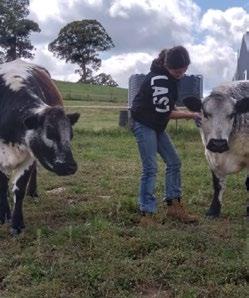
What is your favourite thing about the Speckle Park breed? My favorite thing about the Speckle Park breed would have to be the quality of the cattle they never disappoint in the show ring or the paddock. From stud to commercial speckle parks always seem to prove themselves bringing in a lot of attention.
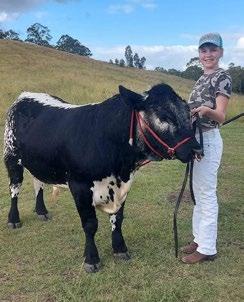
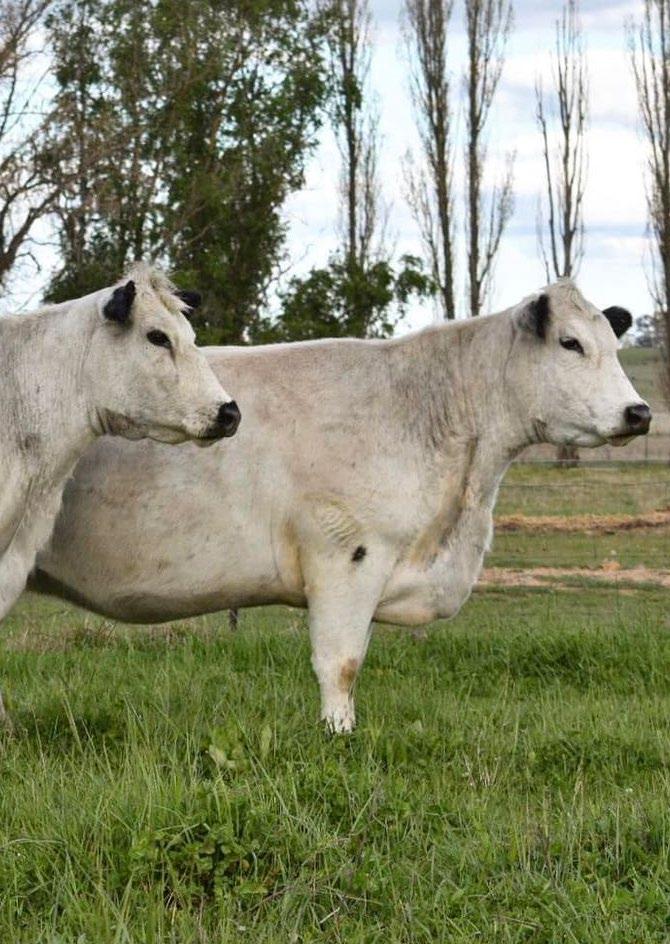
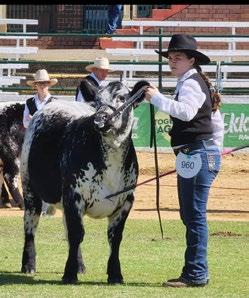
Who is your favorite cow or bull from either your own stud/paddock or someone else’s? Why? My favourite Speckle Park would have to be my first heifer Fox Tail Hills Lollie Express, from a baby calf she always stood out to me, a stylish heifer. I broke her in and showed her at Brisbane show winning 2nd place in her class.
Where are you from: Hunter Valley NSW
Do you have Speckle Park of your own? If you do what are your future plans for them? Yes. To increase my stud in numbers.
What is something you woud like to the Youth committee do in the future? Hold another youth camp to help us learn about the breed.
What is your favourite thing about the Speckle Park breed? Their markings make them beautiful!
Who is your favorite cow or bull? Why? Rango (our bull) because he loves me a lot more than my Dad with his behavior.
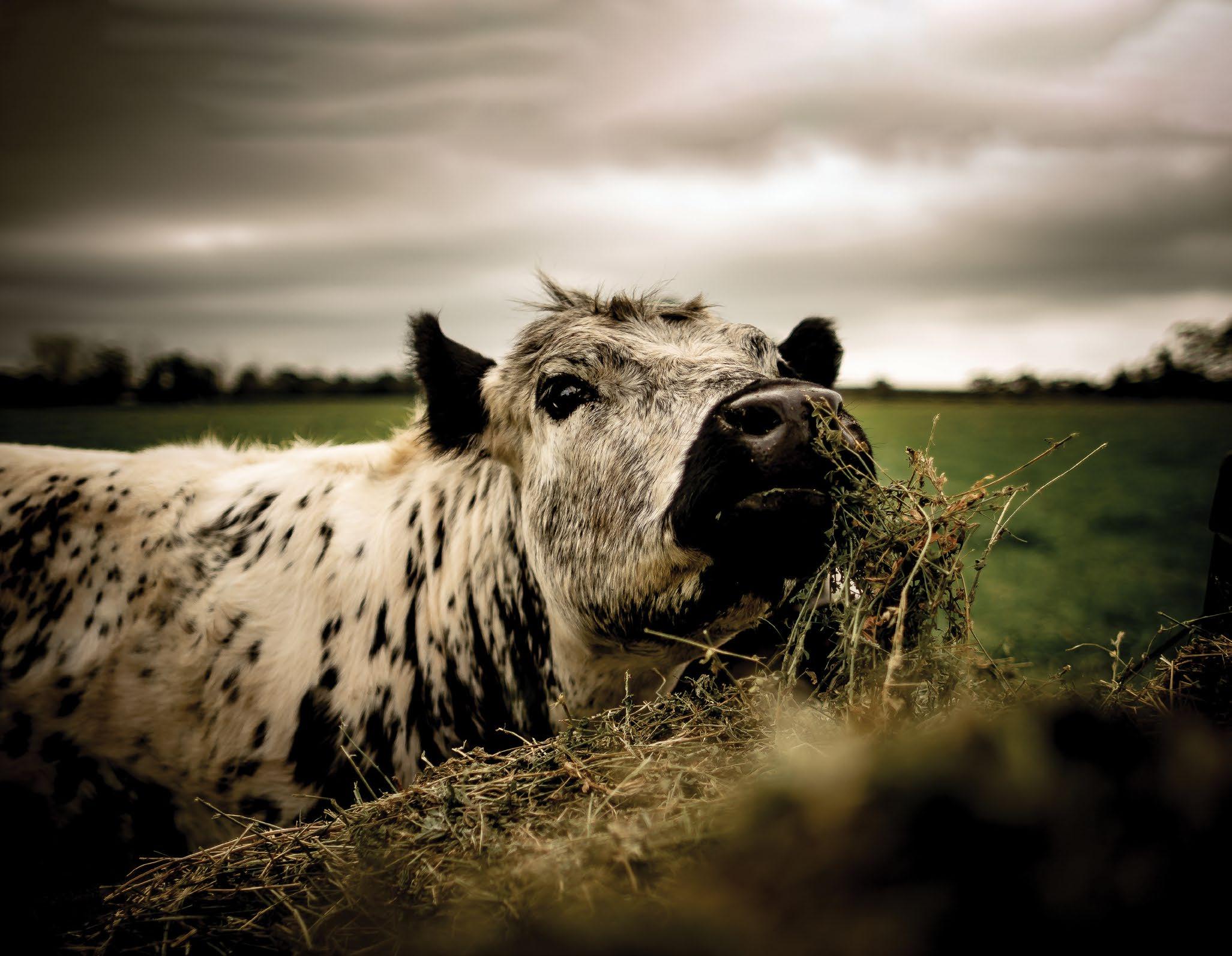



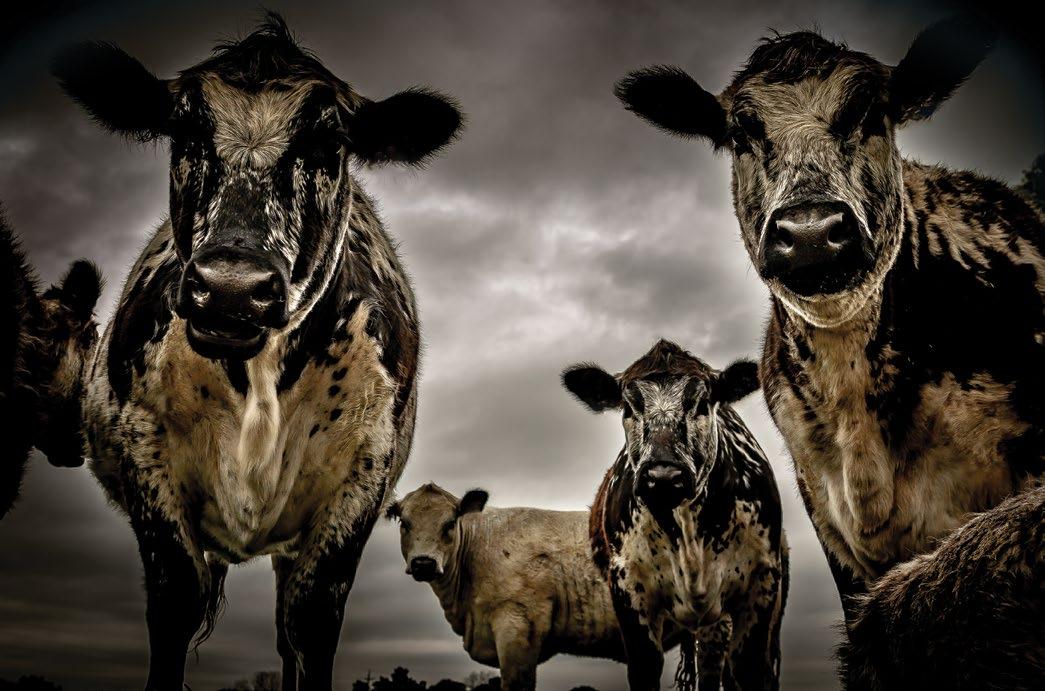
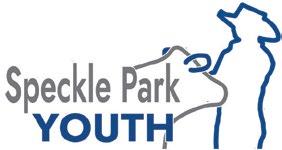

Having held our first meeting as a newly formed team on 4 June 2022, the Marketing and Events SubCommittee (‘MESC’) hit the ground running.
With our focus being on assisting SPI in achieving its strategic objectives, our initial focus has been on increasing awareness and boosting member engagement and involvement.
which was well attended and received and provided a great opportunity for everyone to relax and interact after a busy day in the ring. The following night, the MESC hosted a social dinner at the Norman Hotel which was attended by over 50 of our members and connections. During the night, a fundraising auction was held which had a fantastic level of support. Thank you to all those who donated items for the auction and to those who supported the event by bidding and/or purchasing the various lots.
The MESC is working closely with the Sydney RAS Sub-Committee, with some of our members having travelled to the Sydney Showgrounds, to assist with planning and preparations for the Speckle Park feature breed events at next year’s Sydney Royal Easter Show. Due to the wonderful exposure this event will provide for the Speckle Park breed, there is a significant amount of work involved and we are looking forward to working with the Sydney RAS Sub-Committee in bringing this all to life.
There are lots more projects in various stages which we will provide more information on as we progress.
The MESC resolved to revive the SPI Newsletter to provide our valued members and partners with important updates on a quarterly basis, in between editions of the SPI Magazine. Two volumes of the new Newsletter, now titled “The Specktator”, have been issued and appear to have been well received.
There has been an increased presence on social media which has included SPI specific content, other events and advertisements on behalf of our members. We have seen an encouraging increase in both reach and engagement on this front.
With several of our MESC members being located in Queensland, the Ekka provided a great opportunity for some hands-on event management. Following completion of the Speckle Park judging, the MESC hosted nibblies in the aisle of the Speckle Park area
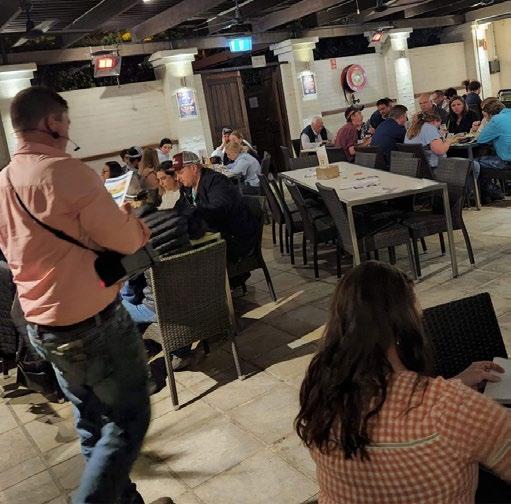
This Magazine has been the largest project the MESC has undertaken to date. The MESC appreciates the support of our advertisers and those who have supplied content for inclusion. We hope you find this to be both informative and entertaining and encourage constructive feedback and suggestions for future publications.
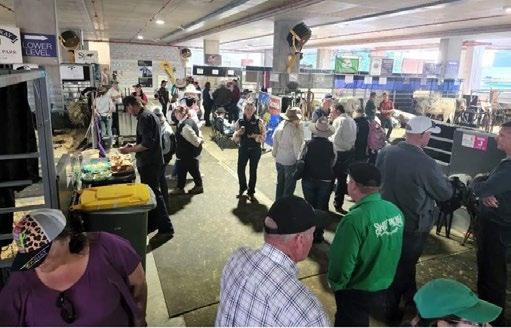
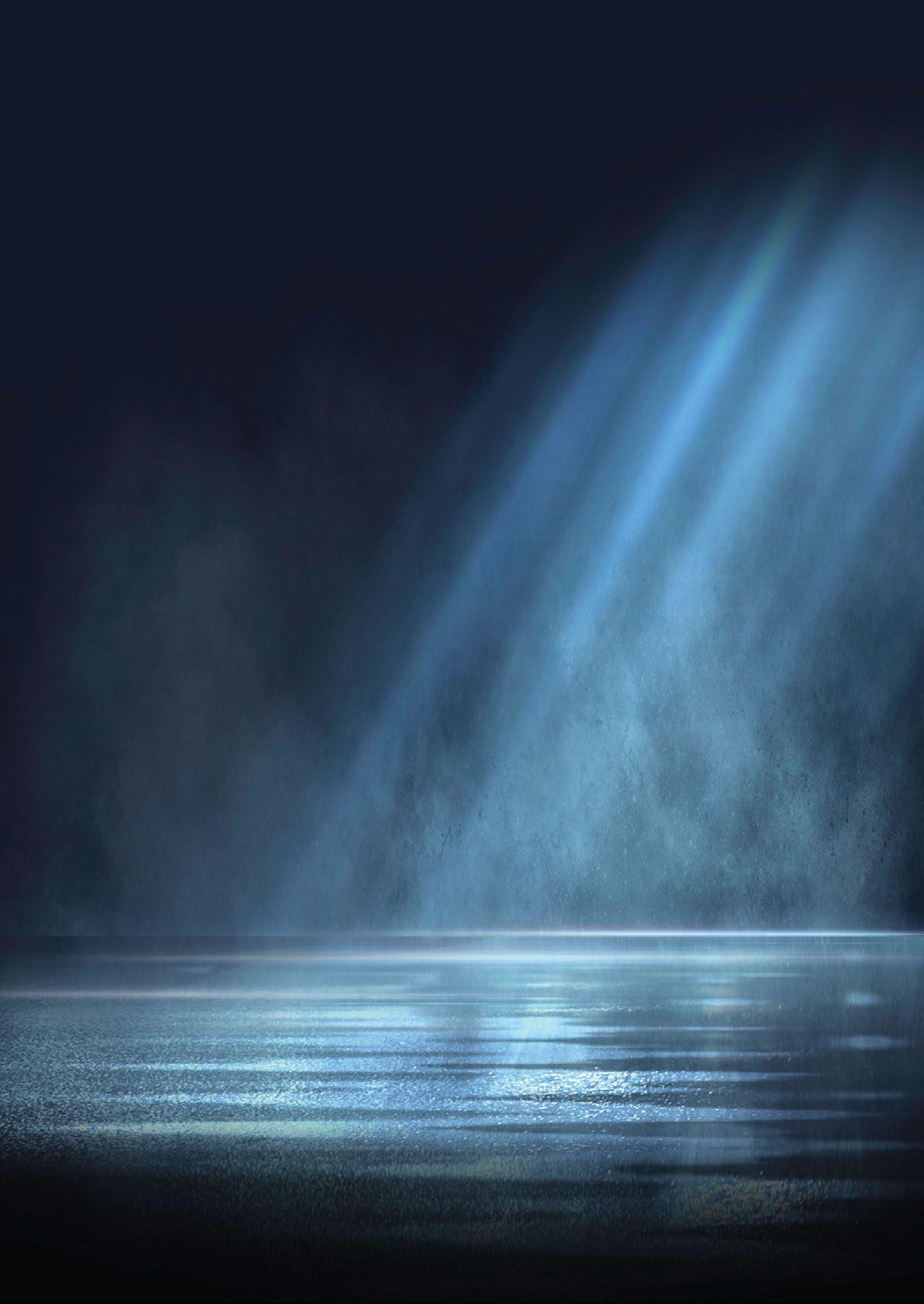
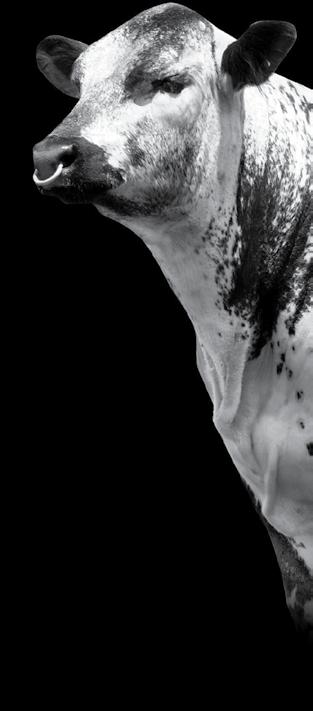
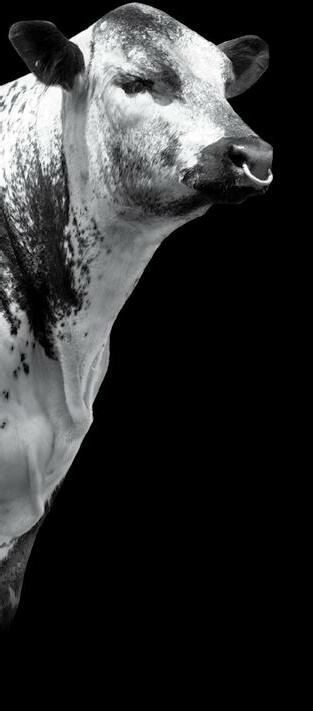

To the SPI Community,
I am pleased to be able to provide a positive update on behalf of the technical sub-committee. Firstly, let me extend sincere thanks to the members who have sat on our committee in the past, and welcome to our new members. Every member, both past and present, have stepped into their roles with passion and a commitment to achieving the commercially focussed objectives of our committee.
There are two key initiatives that have come from our committee over recent months which we highlight below, and we have a number of proposals in the works that we will provide more details on as they come to light.
Speckle Park International are seeking expressions of interest for F1 or above (Speckle x British breed) steers for a trial in mid 2023 that will compare the performance of Speckle Park against other British breeds under commercial feedlot conditions.
This trial is a great opportunity to collect and showcase commercial performance data from Speckle Park infused cattle.

The commercial survey was released earlier this month and aims to provide SPI with valuable insight into the breed and how we can best service and drive uptake in commercial herds.
We encourage all members to get behind these projects, even if that is simply sharing the details with commercial breeders you know who are using Speckle Park bulls; the success of these initiatives will be a win for the breed, and the membership as a whole.
Our committee has been working closely with the team at ABRI and SBTS to drive uptake of Breedplan, and looking to the future with Single Step Genetic Evaluation. Our key take home messages from these meetings:
The commercial industry is increasingly data driven and if Speckle Park wants to ensure the longevity of our breed and take greater market share than we need data to prove the value proposition of our breed.
Collecting and submitting performance data to Breedplan is the quickest and easiest way to ensure continued improvement of our breed with regards to commercially relevant traits, and to grow market share and confidence.
Smaller breeders shouldn’t underestimate the value of their data. As an example, Gestation Length (GL) is one of the easiest measured and most economically important traits yet for a breed with such a high proportion of AI matings each year it is severely under recorded. Tim Weller has written a great article on GL, make sure to have a read!
For Speckle Park to be able to utilise, and gain value from Single-step Genetic Evaluation we need volume of phenotypic data points from members submitting performance data. A lack of phenotype data from later in life traits such as Mature Cow Weight (MCW) and scan data for both bulls AND heifers have been flagged as key roadblocks from the team at ABRI.
We welcome your feedback and suggestions for future programs; you can contact the technical committee via email technical@specklepark.org
Kind Regards, Naomi Hobson Chairperson
Gestation length (GL) can be defined as the period from the date of conception (i.e. when the female gets in calf) to when the subsequent calf is born. GL EBV is expressed in days shorter or longer than the average gestation. Shorter gestation length is generally associated with lighter birth weight, improved calving ease and improved re-breeding performance among dams. In addition, calves born with a shorter gestation length may be heavier at weaning due to more days of growth post-birth. “Breedplan website”

Fertility and maintaining a tight calving pattern are key profit drivers, and anything we can do to improve our chances of more calves born early in a calving period, giving the cow more days to recover and become pregnant, while producing a heavier weaner at weaning, all add dollars, especially at today’s market.
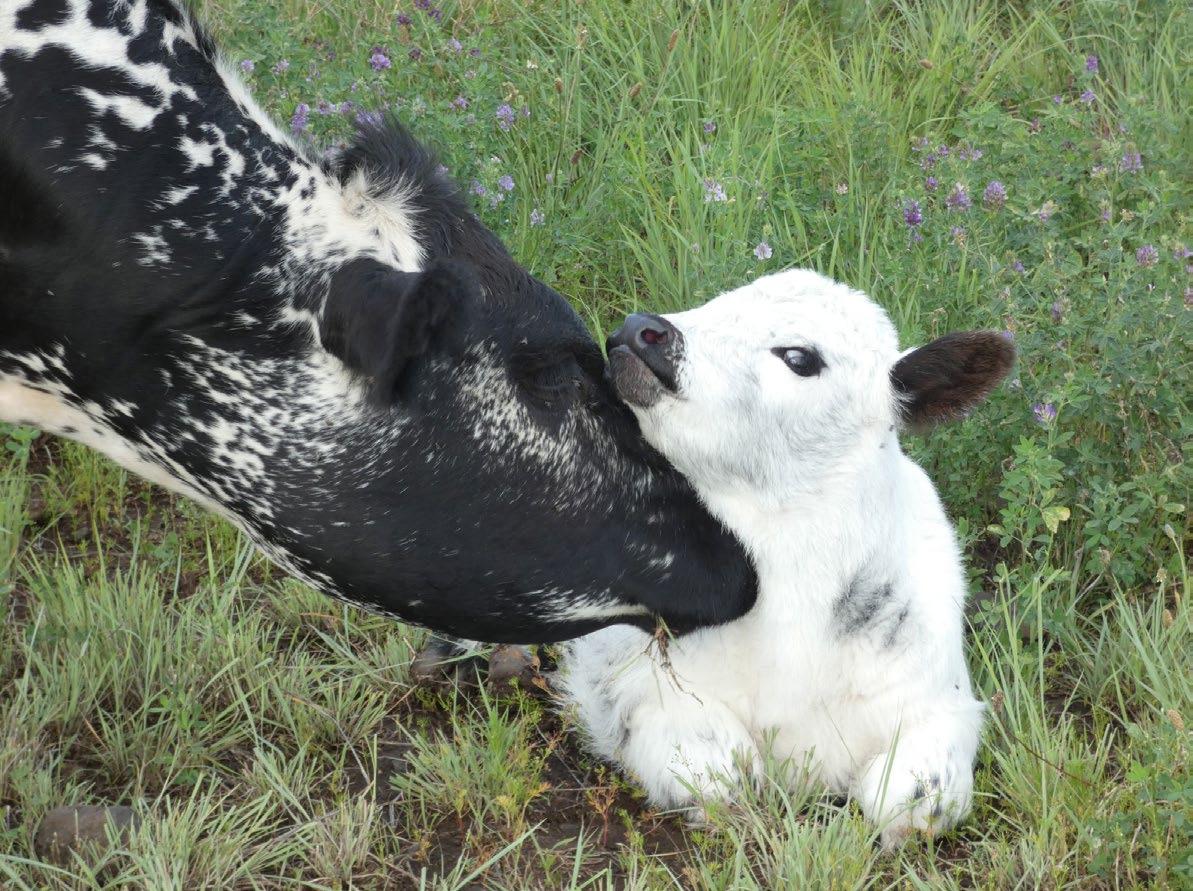
Alastair Rayner of Rayner Ag comments in his article “Advantages to a shorter gestation length” 20/7/21 to maintain a 365-day calving pattern, a cow only has 33 days to conceive, considering a typical 282-day gestation, and a 50 day recover period after calving.
In many of the presentations Dr Enoch Bergman of Esperance WA has given, he has promoted the fact of late calving heifers struggle to ever catch up in overall lifetime profitability and has proven the advantages of incorporating Fixed Timed AI programs with short gestation length bulls to gain kg’s of beef produced and more pregnant cows, creating more profitability.
Bob Bellows of Fort Keogh Research Center at the US Department of Agriculture has shown, that during that last 10 days of gestation, a calf can add 1-1.5 lbs/day (0.45-0.68kg/day), therefor the more days of gestation, the higher the chance of assisted births.
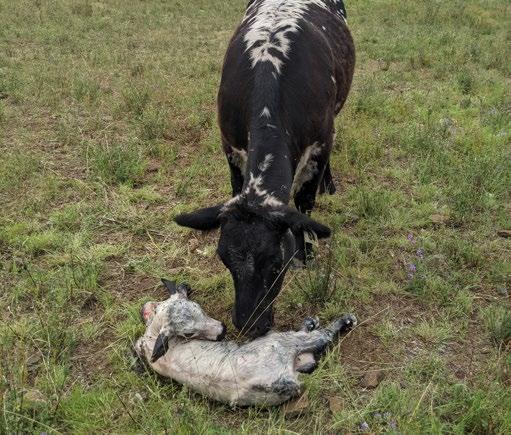
Currently the Speckle Park Breedplan data is extremely reliable for Birth Weight, compared to all other Breedplan traits including Gestation Length.
Although both are very highly correlated, significant dollars of profit for the commercial beef producer are begging if we only concentrate on birth weight.
All that is required to be included is the mating date on either the excel form or ILROnline form when submitting calves for registration. Only matings from AI or hand bull mating’s when a known date is possible, and more than 2 calves are in a contemporary group are eligible to be included in Gestation Length data on Breedplan. We understand Speckle Park has a significant number of ET calves born, ET causes a significant variation in gestation length of +/-7 days and often longer, hence why ET calves are not included in Gestation Length EBVs.
Of the 3050 calves registered in 2021 only 398 where a result of AI, considering the disproportionate use of ET & natural service compared to other mainstream breeds, we have a limited ability to capture this data, so we need to make the most of every opportunity.
Afterall the first experience a new commercial breeder has with Speckle Park is the calves hitting the ground, so we best make sure those calves are born easily, and the safest way to provide assurance is having data, and good data.
Female 9 months & not over 12 months
1st - Jackungah HS E11 Codiak Pink S21
2nd - Pemberton 444E Pho-Finish S7
3rd - Hanging Rock L29 Janette S11
Female over 12 months & not over 14 months
1st - Jackungah E11 Codiak Pink S11
2nd - Jackungah E11 Bambe S01
Female over 14 months & not over 16 months
1st - Mazra Princess Xena
2nd - Mazra R1
Female over 16 months & not over 18 months
1st - KJ Hill Adena
2nd - Wattle Grove N9 Charlie R161
3rd - Benbullen Ruby Princess
Female over 18 months & not over 19 months
1st - Jackungah Luo’s Secret R12
2nd - Rose Hill Dolly
3rd - Wellerou L81 Uruma R36
4th - Wattle Grove Miss Fancy R140
Female over 19 months & not over 20 months
1st - Jackungah Koda R10
2nd - Pemberton 444E Good Girl R57
3rd - MH Royal Empress R02
JUNIOR CHAMPION
Jackungah Luo’s Secret R12
RESERVE JUNIOR CHAMPION
Rose Hill Dolly
Female over 20 months & not over 24 months
1st - Pemberton K247 Pho-Finish R17
2nd - Pemberton 444E Pho-Finish R21 3rd - Black Diamond 31E Raise Me Up R1011
Female over 24 months & not over 30 months
1st - Pemberton 444E Florence Q63 2nd - Blue Spark L101 Gigi R04 3rd - Southern Aurora Six Star 105D Teeka R11
Female over 30 months & not over 36 months
1st - Jackungah Koda Q17
Female over 36 months
1st - Wattle Grove Miss Wow N10
2nd - Baw Baw Esmeralda 3rd - Black Diamond 9C Pho-Finish P325
SENIOR CHAMPION FEMALE Wattle Grove Miss Wow N10
RESERVE SENIOR CHAMPION FEMALE Baw Baw Esmeralda
GRAND CHAMPION FEMALE Wattle Grove Miss Wow N10
Middleweight Steer

1st - Black Diamond 103C Red Handed R1040 Also awarded Champion Middleweight Steer and Bronze Medal Winner
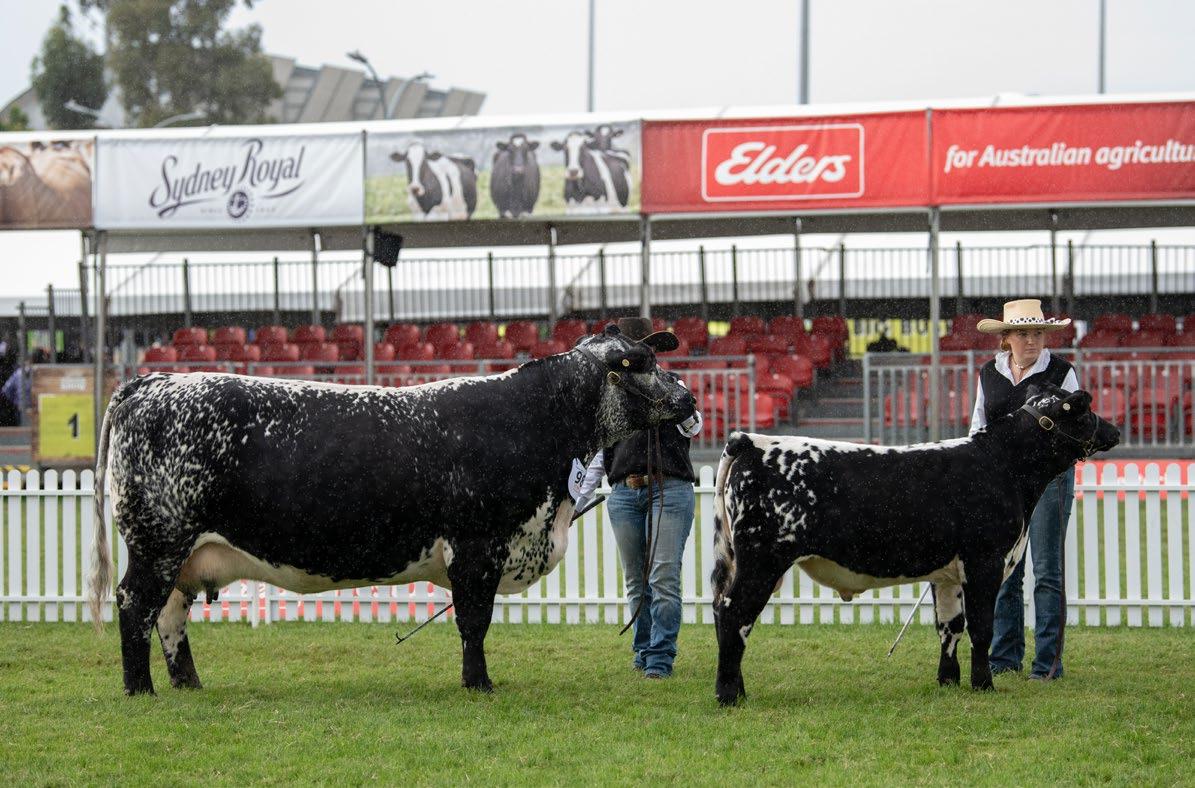
Bull 9 months & not over 12 months
1st - Pemberton 444E Spitfire S10
2nd - Jackungah HS Skinny Dippin S20
3rd - Jackungah HS Sugar Daddy S23
Bull over 12 months & not over 14 months
1st - Blue Spark Smokey Joe S16
2nd - Jackungah Sacrifice S10
3rd - Jackungah Saddle Up S13
Bull over 14 & not over 16 months
1st - Six Star Barn Stormer R25
2nd - Rose Hill Shakespeare’s Secret
Bull over 16 months & not over 18 months
1st - Merom Maximum R27
2nd - Jackungah Redge R20
3rd - Wattle Grove Live It Up R145
Bull over 18 months & not over 19 months
1st - Wattle Grove News Man R115
2nd - Victorian WGS L223 Ruler R2
Bull 19 months & not over 20 months
1st - Rose Hill Secret
2nd - Jackungah Rafael R07
3rd - Wattle Grove After Midnight R142
JUNIOR CHAMPION BULL
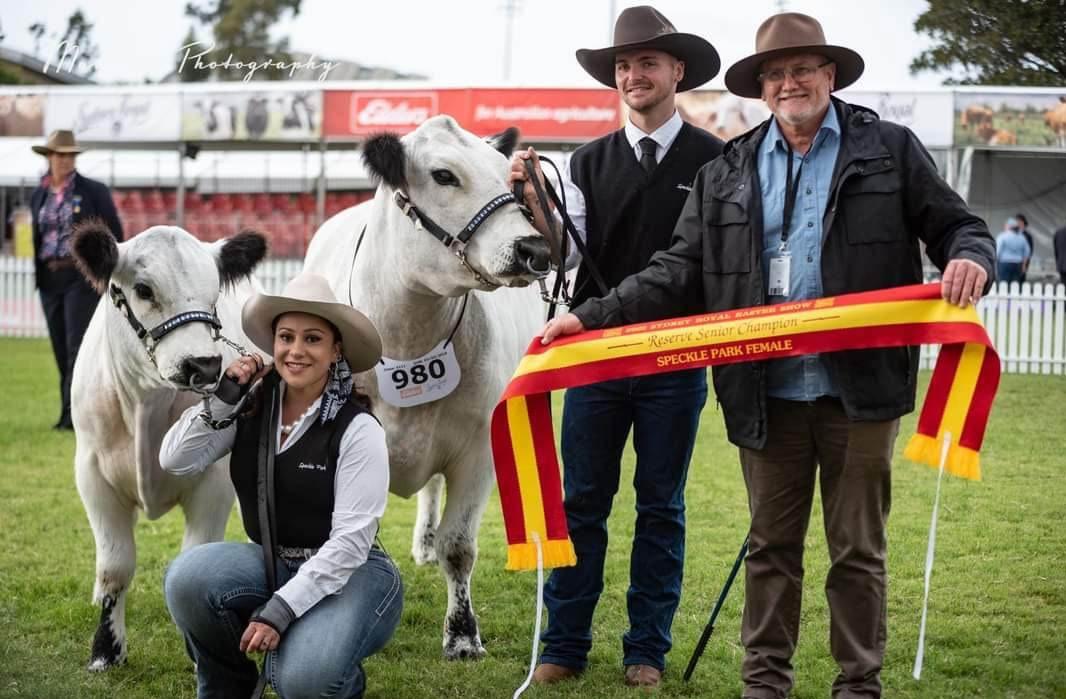
Wattle Grove News Man R115
RESERVE JUNIOR CHAMPION BULL
Victorian WGS L223 Ruler R2
Bull over 20 months & not over 24 months
1st - Hanging Rock Hi Roller R03

2nd - Black Diamond N67 Right Angle R944
Bull over 24 months & not over 30 months
1st - Black Diamond Russian Roulette R730
2nd - Black Diamond K47 Rum N Coke R782
Bull over 30 months & not over 36 months
1st - Wattle Grove N58 Tractor Q116
2nd - Wattle Grove Jagerbomb Q120
3rd - Black Diamond 94A Quick Sand Q518
SENIOR CHAMPION BULL Wattle Grove N58 Tractor Q116
RESERVE SENIOR CHAMPION BULL Wattle Grove Jagerbomb Q120
GRAND CHAMPION BULL Wattle Grove N58 Tractor
TWO BULLS Not over 24 months
1st - Wattle Grove Exhibits 2nd - Jackungah Exhibits
Sire’s Progeny
1st - Mainstream Eldorado (Exhibited by Jackungah)
2nd - Notta 1B Hawkeye 444E (Exhibited by Pemberton)
Dam’s Progeny
1st - Champagne Codiak Pink (Exhibited by Jackungah)
Breeder’s Group
1st - Wattle Grove 2nd - Jackungah 3rd - Black Diamond
SUPREME SPECKLE PARK EXHIBIT Wattle Grove Miss Wow N10
MOST SUCCESSFUL EXHIBITOR Jackungah Speckle Park
BEST MAINTAINED TEAM 2-5 Head Hanging Rock
BEST MAINTAINED TEAM over 5 head Wattle Grove
Bull 6 months & under 12 months
1st - Sowden Save Me A Spot
Bull 12 months & under 15 months
1st - SND Signature Renegade
2nd - Hidden Valley Condor 3rd - Winter Sterling S64
CALF CHAMPION BULL
SND Signature Renegade
CALF RESERVE CHAMPION BULL Sowden Save Me A Spot
Bull 15 months & under 18 months
1st - Aleon Regal Putnam
2nd - Wattle Grove News Man R115
3rd - Mowbray Diesel
4th - Wattle Grove Live It Up R145
Bull 18 months & under 21 months
1st - Sowden Hard Act To Follow 300X
2nd - Novae Rammstein

3rd - Wattle Grove After Midnight R142
4th - Sunny Dale Rider
JUNIOR CHAMPION BULL Sowden hard Act to Follow 300X
RESERVE JUNIOR CHAMPION BULL Novae Rammstein
Bull 21 months & under 24 months 1st - Sunny Dale Rock Star
Bull 24 months & over 1st - Wattle Grove Jagerbomb Q120 2nd - Wattle Grove N58 Tractor Q116 3rd - Northern Jack
SENIOR CHAMPION BULL Wattle Grove Jagerbomb Q120
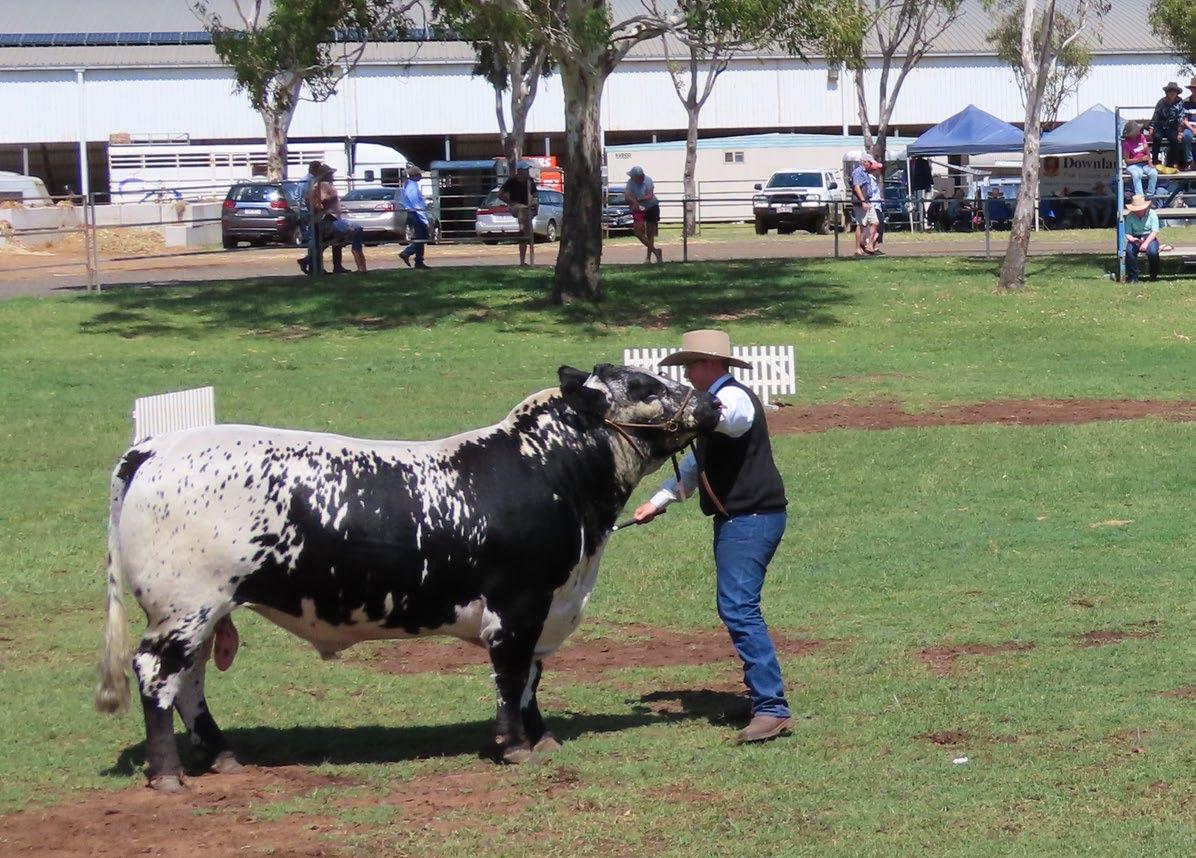
RESERVE SENIOR CHAMPION BULL Wattle Grove N58 Tractor Q116
GRAND CHAMPION BULL Wattle Grove Jagerbomb Q120
Female 6 months & under 12 months
1st - Sowden Jessica Rose
2nd - AAA Shay
3rd - Everest K247 Stardust S12
4th - Hidden Valley Tsunami S4
Female 12 months & under 15 months
1st - Sweetacres Sasha S2
2nd - Deeargee Swimming In Gin S1
3rd - Hidden Valley Chanel S1
4th - Dorroughby Sage
CALF CHAMPION FEMALE
Sweetacres Sasha S2
RESERVE CALF CHAMPION FEMALE
Sowden Jessica Rose
Female 15 months & under 18 months
1st - Winter Rylee R52
2nd - Monument Raine
3rd - Aleon Lady Emilly
4th - AAA R17 Fancy Pants
Female 18 months & under 21 months
1st - Sowden Eva Th Diva
2nd - Sunny Dale Ruffles
3rd - Everest N58 Miss Wattle R24
JUNIOR CHAMPION FEMALE
Sowden Eva Th Diva
RESERVE JUNIOR CHAMPION FEMALE
Winter Rylee R52
Female 21 months & Under 24 months
1st - Pinnacle Park Unique Obsession
2nd - Winter Ruby Soraya R51
3rd - Winter Rumer R50
Female 24 months & Under 36 months
1st - Pinnacle Park Grace Kelly
2nd - Waratah Wendy Q168
3rd - Novae Querivete

Female 48 months & over
1st - Wattle Grove Miss Wow N10
SENIOR CHAMPION FEMALE
Wattle Grove Miss Wow N10
RESERVE SENIOR CHAMPION FEMALE Pinnacle Park Unique Obsession
GRAND CHAMPION FEMALE Sowden Eva Th Diva
INTERBREED JUNIOR CHAMPION BULL SND Signature Renegade
INTERBREED JUNIOR CHAMPION FEMALE Sowden Eva Th Diva
SUPREME BEEF EXHIBIT OF THE SHOW Sowden Eva Th Diva
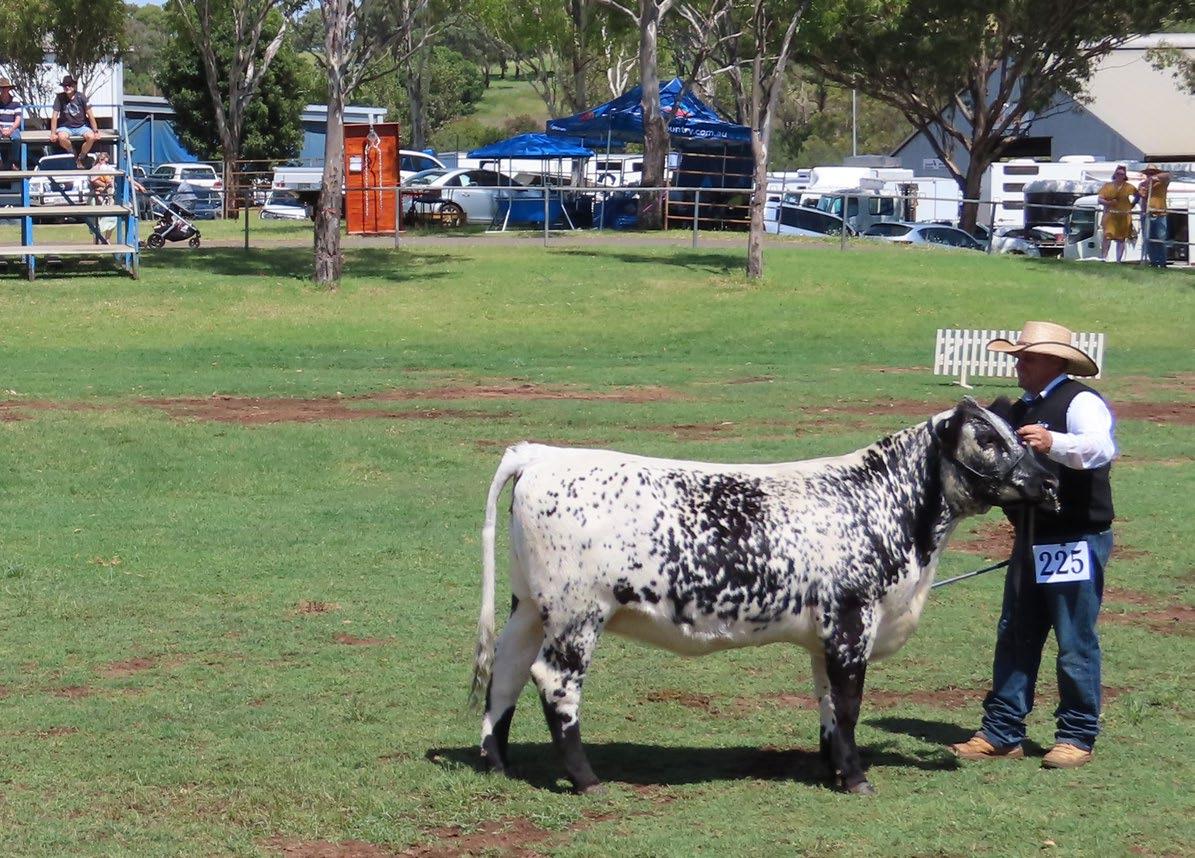
Pair of Bulls
1st - Wattle Grove Exhibits
2nd - Winter Speckle Park Exhibits
Pair of Females 1st - Winter Speckle Park Exhibits
Breeder’s Group
1st - Sowden Speckle Park 2nd - Wattle Grove 3rd - Winter Speckle Park
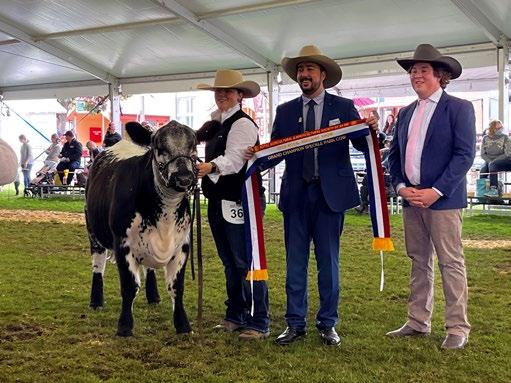
COW OR HEIFER 8 MONTHS & UNDER 14 MONTHS
1st - Jackungah Luo’s Secret S52
2nd - Redwood Range Serendipity
3rd - Ewyn 11F Rose S49
4th - Hanging Rock Lavender S20
5th - Hanging Rock Lavender S19
COW OR HEIFER 14 MONTHS & UNDER 16 MONTHS
1st - Redwood Range Sassy Lass

2nd - Redwood Range Snowdrop
3rd - Hanging Rock N01 Bad Duckling S10
4th - Ewyn 01E Melissa S34
5th - Ellie
6th - Summer Daze
COW OR HEIFER 16 MONTHS & UNDER 18 MONTHS
1st - Blueridge M244 Amy’s Girl S8
2nd - Jackungah HS J301 Bambe S27
3rd - Blue Spark Exquisite
4th - Ewyn 01D Sassafras S18
JUNIOR CHAMPION COW OR HEIFER
Blueridge M244 Amy’s Girl S8
RESERVE JUNIOR CHAMPION COW OR HEIFER
Jackungah Luo’s Secret S52
COW 30 MONTHS & OVER
1st - Hanging Rock Hattie
2nd - Ewyn 61Y Sassafras P45
3rd - MH Pure Temptation P01
SENIOR CHAMPION COW
Hanging Rock Hattie
RESERVE SENIOR CHAMPION COW Ewyn 61Y Sassafras P45
GRAND CHAMPION FEMALE
Blueridge M244 Amy’s Girl S8
BULL 8 MONTHS & UNDER 14 MONTHS
1st - Redwood Range Sergeant 2nd - Redwood Range Show Business 3rd - Hanging Rock Sudden Impact
BULL 14 MONTHS & UNDER 16 MONTHS
1st - Hanging Rock Howzat S08
BULL 16 MONTHS & UNDER 18 MONTHS
1st - Blue Spark Smokey Joe 2nd - Ewyn 01D Squad S25 3rd - Jackungah HS Super Sexy S22 4th - Blueridge Stands Proud S16
JUNIOR CHAMPION BULL Redwood Range Sergeant
RESERVE JUNIOR CHAMPION BULL Blue Spark Smokey Joe
Grand Champion Female Stud Photos by Martha Valkenburg Steer Photo by Redwood Range Speckle ParkBULL 18 MONTHS & UNDER 24 MONTHS
1st - Merom Maximum R27
2nd - Jackungah Robin Hood R18
BULL 24 MONTHS & OVER
1st - Jackungah Rafael R07
SENIOR CHAMPION BULL
Merom Maximum R27

SIRE’S PROGENY GROUP
1st - Hanging Rock representing Star Bank Lacerta
BREEDERS’ GROUP
1st - Redwood Range
2nd - Jackungah Speckle Park
3rd - Ewyn Beef
At the Adelaide Royal, Speckle Park were the third largest breed by entries with exhibitors from 3 states!
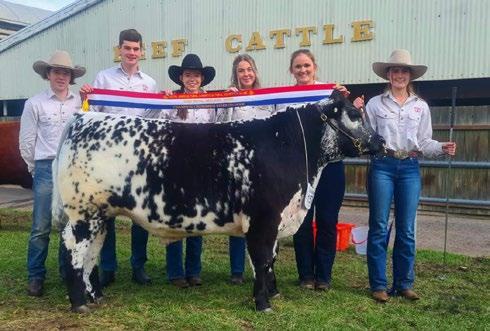
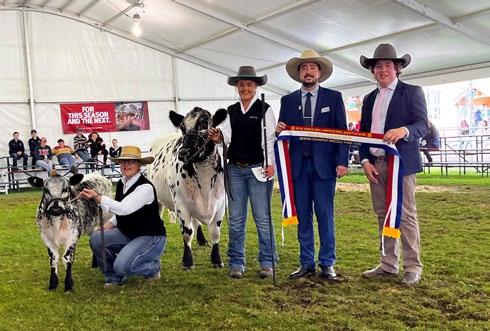
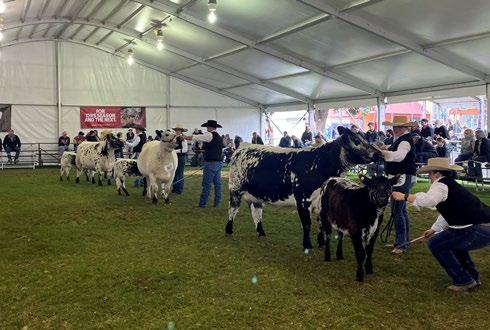
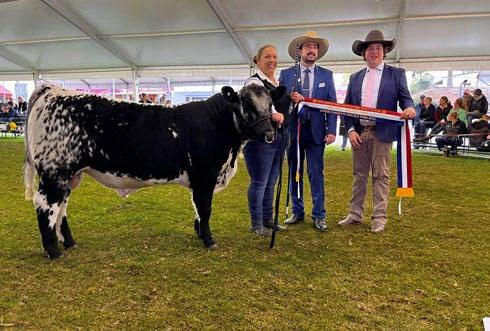
CROSSBRED LIGHT DOMESTIC 395-450 KGS 4th - Wattle Lee Sky’s The Limit S19 exhibited by Emily Edwards
CROSSBRED HEAVY DOMESTIC 452-506 KGS 1st - Wattle Lee Shot of Darkness S11 exhibited by Emily Edwards 4th - Steve exhibited by Wudinna Area School
CROSSBRED EXPORT 554-594 KGS
1st - Redwood Range Astro exhibited by Mount Compass Area School
CHAMPION
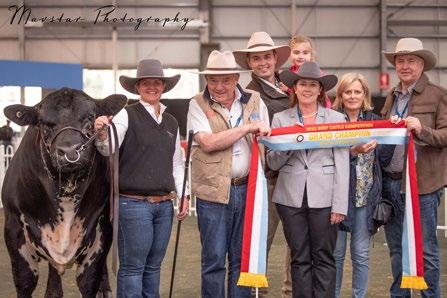
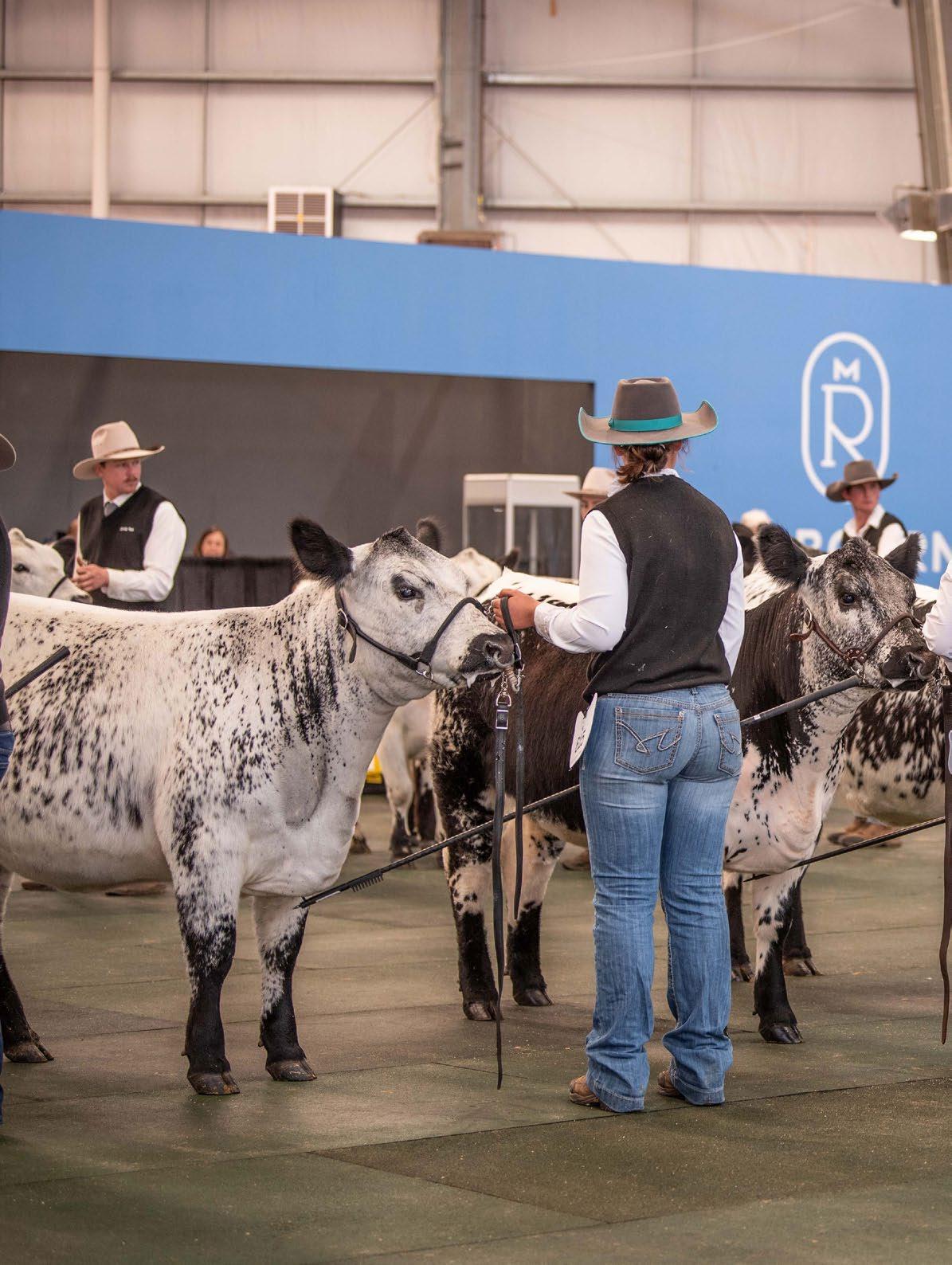
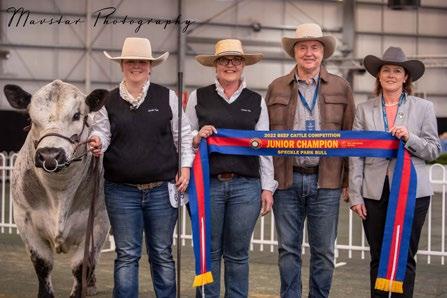
Heifer 9 to 12 months
1st - Jackungah 01B Luo’s Secret
2nd - Merom Giselle
Heifer 12 to 16 months
1st - Hanging Rock L29 Janette S11
2nd - Hanging Rock N01 Bad Duckling
3rd - Black Wolf 1B Hoochie Mama
4th - Pemberton 444E Pho Finish S224 5th - Black Diamond N67 Surrended S1575
(split 1) Heifer 16 to 20 months
1st - Jackungah HS J301 Bambe S27
2nd - Blue Spark Exquisite S19

3rd - Pemberton 444E Pho Finish S7
4th - Jackungah E11 Codiak Pink S21
5th - Topiram Tsunami S15
(split 2) Heifer 16 to 20 months
1st - Epic Sweet Amy
2nd - Blueridge M244 Amys Girl S8
3rd - Blueridge K247 Unique S3
4th - Jackungah E11 Codiak Pink S15
5th - Black Diamond N81 Send It S1145
6th - The Pines Miss Sophia
JUNIOR CHAMPION HEIFER
Jackungah 01B Luo’s Secret
RESERVE JUNIOR CHAMPION HEIFER
Jackungah HS J301 Bambe S27
Cow or Heifer 20 to 24 months
1st - Topiram 1D Sky Blu
Cow or Heifer 24 to 36 months
1st - Pemberton 444E Florence Q63
2nd - Black Diamond Rehearsal Dinner R888
Cow over 36 months
1st - Hanging Rock Hattie P10
2nd - MH Pure Temptation P01 3rd - The Pines Norma Jean
SENIOR CHAMPION COW
Pemberton 444E Florence Q63
RESERVE SENIOR CHAMPION COW
Black Diamond Rehearsal Dinner R888
GRAND CHAMPION FEMALE
Jackungah 01B Luo’s Secret
Bull 9 to 12 months
1st - Jackungah Silencer S53
2nd - Ebbwvale 25D Strike Force S11
Bull 12 months to 15 months
1st - Pemberton 307E Leonardo S22
2nd - Jackungah Score Keeper S381
3rd - Hanging Rock Sudden Impact S21
4th - Black Wolf 20F Carbon Express S7
5th - Redwood Range Sergeant
Bull 15 to 18 months
1st - Jackungah HS Super Sexy S22
2nd - Pemberton 444E Spitfire S10
3rd - Merom 54Z Specialized S2
4th - Black Diamond M34 Sideburns S1252
5th - Black Diamond 3A Skipper S1262
6th - Hanging Rock Howzat S08
Bull 18 to 20 months
1st - Blue Spark Smokey Joe
2nd - Jackungah Steakhouse S54
3rd - Black Diamond 827F Season Opener S1128
4th - Blueridge Stands Proud
JUNIOR CHAMPION BULL Blue Spark Smokey Joe
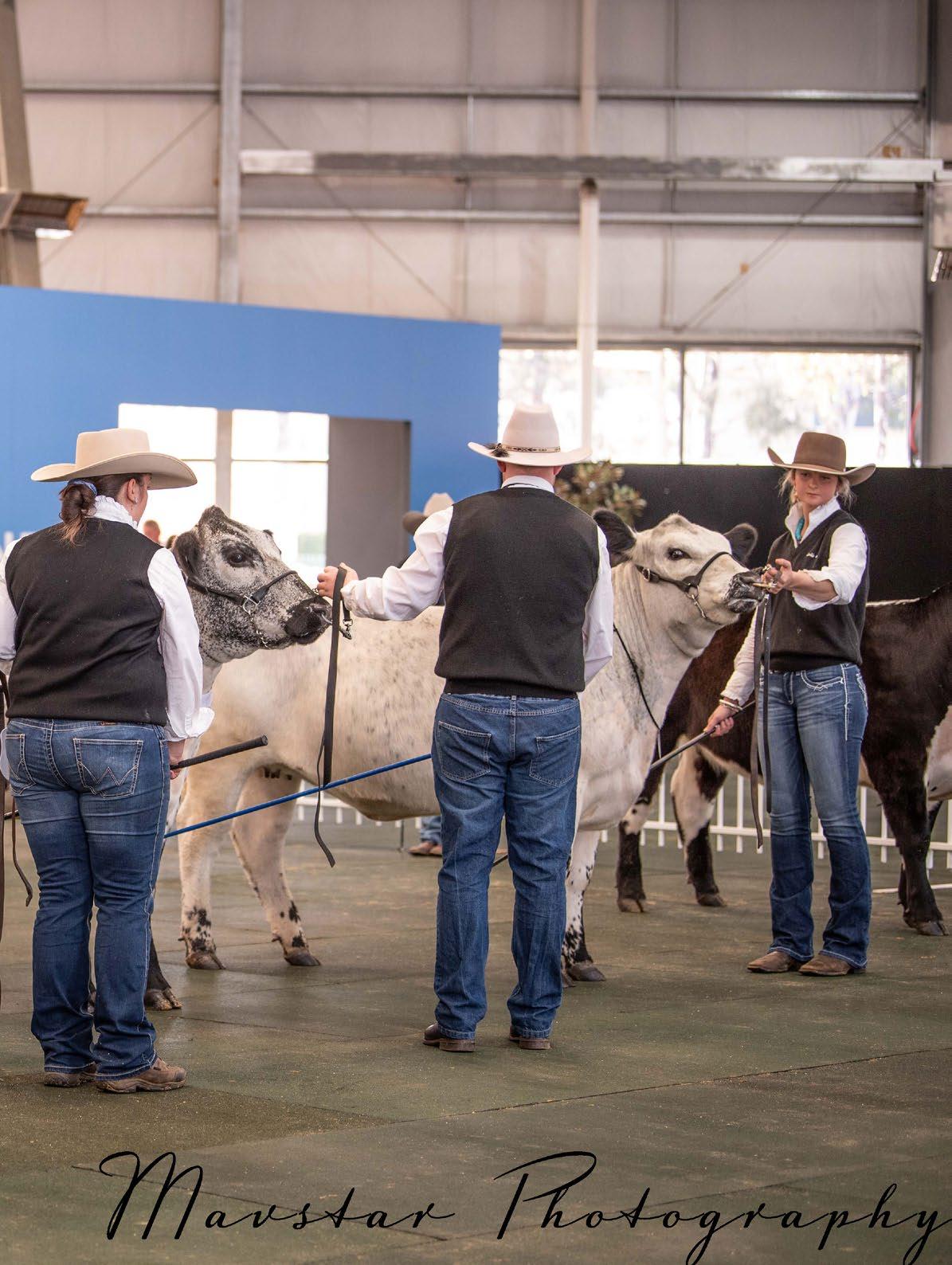
RESERVE JUNIOR CHAMPION BULL
Jackungah Steakhouse S54
BULL 20 to 24 months
1st - Merom Maximum

2nd - Black Diamond M34 Rudoph R1120
Bull over 24 months
1st - Jackungah Rafael R07
CHAMPION SENIOR BULL Merom Maximum
RESERVE SENIOR CHAMPION BULL Black Diamond M34 Rudolph R1120
GRAND CHAMPION BULL Merom Maximum
SUPREME CHAMPION EXHIBIT Merom Maximum
Two Females under 20 months
1st - Jackungah 2nd - Hanging Rock 3rd - Black Diamond 4th - Redwood Range
Two Bulls under 20 months
1st - Jackungah 2nd - Pemberton 3rd - Black Diamond
Progeny Group of Sire or Dam
1st - Pemberton Group Representing Notta Hawkeye 444E 2nd - Black Diamond Group representing River Hill 5C Farr-Out 827F 3rd - Black Diamond Group representing Waratah Pho-Finish L130 4th - Redwood Range Group representing 31 X RWR Q11 5th - Hanging Rock Group representing AAA Lavender
Best 3 Head (Breeders Group)
1st - Jackungah Speckle Park Group 2nd - Pemberton Speckle Park Group 3rd - Hanging Rock Speckle Park Group
Junior Led Steer (class 16) 375 – 400 kgs

3rd - Inverell High School’s Speckle Park Infused Steer
HIGHLY COMMENDED
Scots PGC College Speckle Park Infused Steer
Led Steer Carcase Competitions MSA Eating
Quality Medium Weight
1st - Born Ready & M&M Fitting Services Speckle Park Infused Steer
Led Steer carcase 325-350 kgs 2nd - Inverell High School’s Speckle Park Infused Steer
Led Steer Carcase 351-375kgs
2nd - Hayden Beattie’s Speckle Park Infused Steer
Infused Steer
Led Steer 461-490 kgs 4th - Hayden Beattie & Gabby Stokes Speckle Park Infused Steer
Led Steer 325-350 kgs
5th - Inverell High School’s Speckle Park Infused Steer

Led Steer 351-375 kgs 2nd - Hayden Beattie’s Speckle Park Infused Steer 7th - Tenterfield High School’s Speckle Park
Prime Beef Steer 521-600 kgs 3rd - Exhibited by DA, CJ & AM Knopke
Pen of 6 Steers 400-520 kgs 1st - Exhibited by Ivery Downs Speckle Park
Heifer 8 months & under 12 months
1st - Beth Vide Sheridan
2nd - Beth Vide Serena
3rd - Pinnacle Park Halle Berry
4th - Monument Shakira
5th - Mowbray Diamond
6th - Mowbray Pearl
Heifer 12 months & under 14 months
1st - Pinnacle Park Unique Celebration
2nd - Foxtail Hill Lollie Express
3rd - AAA S75
4th - Everest K247 Stardust S12
5th - Winter Sass N Shimmer
6th - Sunnydale Summer Rain
7th - Six Star L14 Teeka
Heifer 14 months & under 16 months
1st - Hidden Valley Tsunami S4
Heifer 16 months & under 18 months
1st - Battalion Kara S29
2nd - Great Marlow M1 Unique
3rd - Great Marlow 25U Lightning Lady
4th - Kui Marusa S7
5th - Kui Marusa S6
6th - Kui Heiress S3
Heifer 18 months & under 20 months
1st - SND Signature Rather Perfect
2nd - Sweetacres Sasha S2
3rd - Novae Serenity
4th - Hidden Valley Chanel S1
5th - Hidden Valley Chanel S2
6th - Winter Remi
7th - Mazra R1
8th - Mazra Princess Xena
JUNIOR CHAMPION HEIFER
SND Signature Rather Perfect
RESERVE CHAMPION JUNIOR HEIFER
Battalion Kara S29
Heifer 20 months & under 24 months
1st - Winter Rylee R52
2nd - Aleon Lady Emily
3rd - Battalion Heartbreaker R16
4th - Monument Raine
5th - Black Diamond M34 Remix R1070
6th - Black Diamond N67 Ready For Anything R1053
Cow or Heifer 24 months & under 30 months
1st - Pinnacle Park Unique Obsession
Cow 30 months & under 60 months
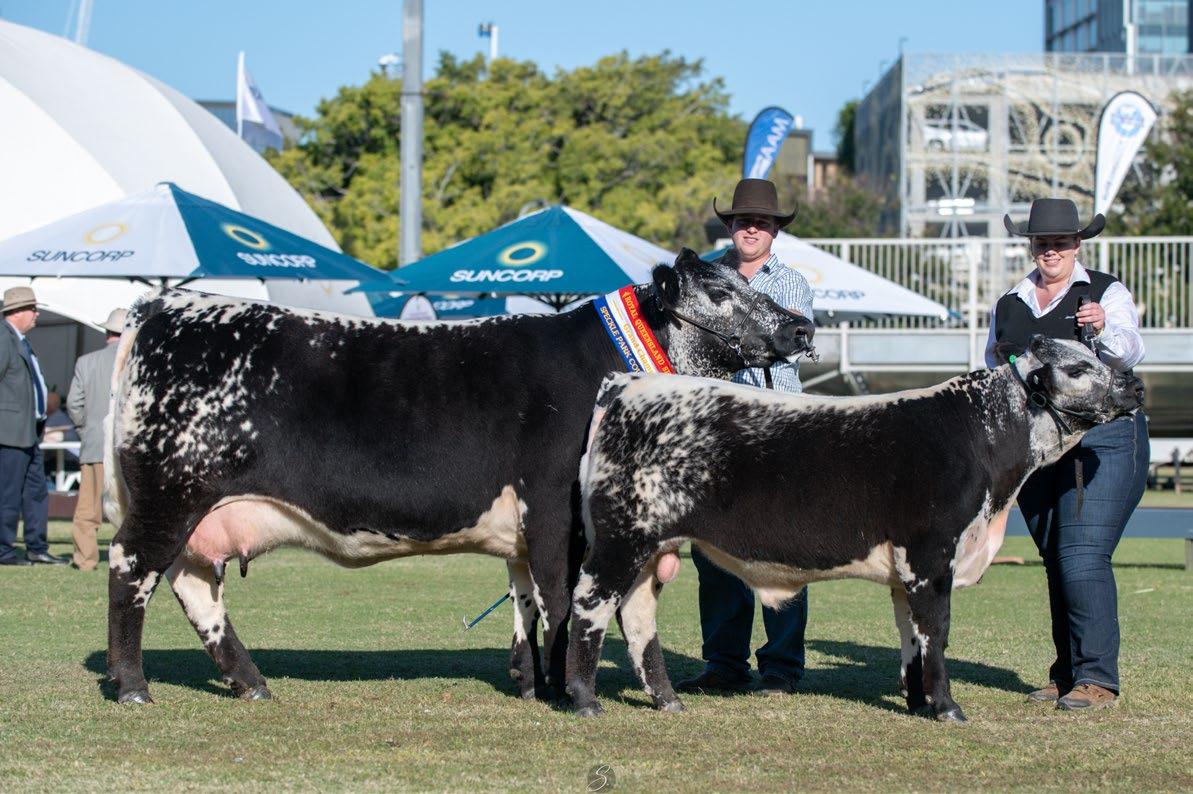
1st - Corndale Quattro
2nd - Pinnacle Park Grace Kelly
3rd - Novae Querivete
4th - Mazra Smoking Pretender Q1
SENIOR CHAMPION FEMALE
Corndale Quattro
RESERVE CHAMPION SENIOR FEMALE Pinnacle Park Unique Obsession
GRAND CHAMPION FEMALE Corndale Quattro
Bull 8 months & under 12 months
1st Winter Stryker
2nd Winter Storm
3rd SND Signature Ridin’ Dirty 4th Pinnacle Park Extra Special 5th Mowbray Sebastian
Bull 12 months & under 14 months
1st Born Ready Storm Trooper 2nd Foxtail Hill Never Wrong
Bull 14 months & under 16 months
1st Dorroughby Stone Cold
Bull 16 months & under 18 months
1st Sandra Jane’s Sawyer
2nd AAA Traffic Jam S14
3rd Corndale Speckle Park Spectacular
Bull 18 months & under 20 months
1st SND Signature Renegade
2nd Six Star Barn Stormer
3rd Hidden Valley Condor S3
JUNIOR CHAMPION BULL
SND Signature Renegade
RESERVE CHAMPION JUNIOR BULL
Sandra Jane’s Sawyer
Bull 20 months & under 24 months
1st Wattle Grove News Man R115
2nd Wattle Grove Made for You R125 3rd Wattle Grove Live It Up R144 4th Aleon Regal Putnam 5th Wattle Grove After Midnight R142 6th Mowbray Diesel
Bull 24 months & under 30 months
1st Foxtail Hill Balls Of Steele
Bull 30 months & under 40 months 1st Wattle Grove Tractor Q116
SENIOR CHAMPION BULL Wattle Grove Tractor Q116
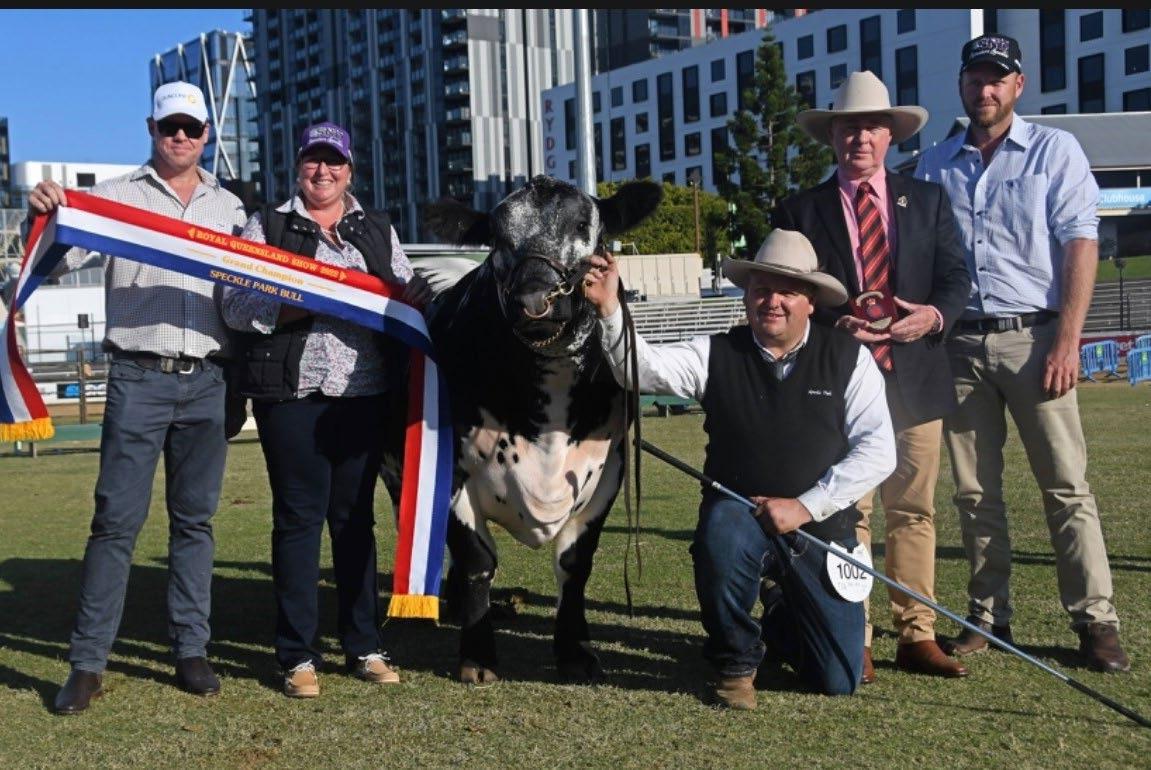
RESERVE CHAMPION SENIOR BULL Wattle Grove News Man R115
GRAND CHAMPION BULL SND Signature Renegade
Pair of Bulls
1st Wattle Grove 2nd Sandra Jane’s 3rd Winter Speckle park 4th Mowbray Speckle Park

Breeders Group
1st SND Signature Speckles 2nd Winter Speckle Park 3rd Pinnacle Park Speckles
1st Group Representing Nunkeeri Park Lauren 2nd Group Representing AAA Mighty Moses

Providing your sale information as early as possible will enable maximum time for distribution and promotion to potential buyers.

Online Bidding represents one of the fastest-growing promotional and marketing tools in the auction profession, with the click of a button your livestock auction can be accessed anywhere in the world.
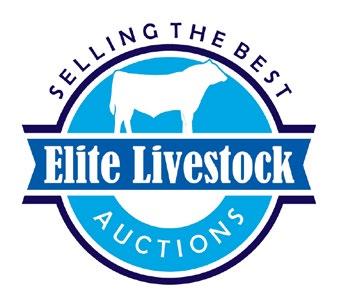
With each and every Speckle Park stud sale being offered to bidders in an online format nowadays, it is critical that sellers use the online platform to the fullest to maximise both reach and engagement from bidders.
The following are some simple tips to help you improve the success of your online auction:

Internet speed tests are non-negotiable. For a seamless online auction, Elite Livestock Auctions recommends and requires an upload and download speed of at least 10MBS.
We recommend you test your internet speed at the location of the sale at the time of booking your auction. Early detection allows sufficient time for boosting solutions to be resolved and prevents issues on auction day.
Transparency – the more information provided, the better. This gives prospective buyers confidence to purchase.
Minimum 30 second long videos for each lot are recommended. Buyers want to see the feet and legs of cattle and to watch them walk – this shows off both frame and temperament. Videos are of particular importance to buyers who cannot view the cattle in person before or on auction day.

Position the livestock before you take the photo. Aim for a full side view, a three-quarter view or both – with the animal looking alter. The head should be positioned high (not below the backline), looking straight ahead and the stance should be solid.
Ensure the livestock are in full sun or full shade when photographing or videoing to ensure consistency of the images.
We are here to help, contact us on 1300 259 742
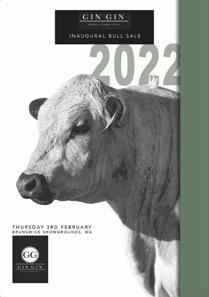
Gin Gin Speckle Park
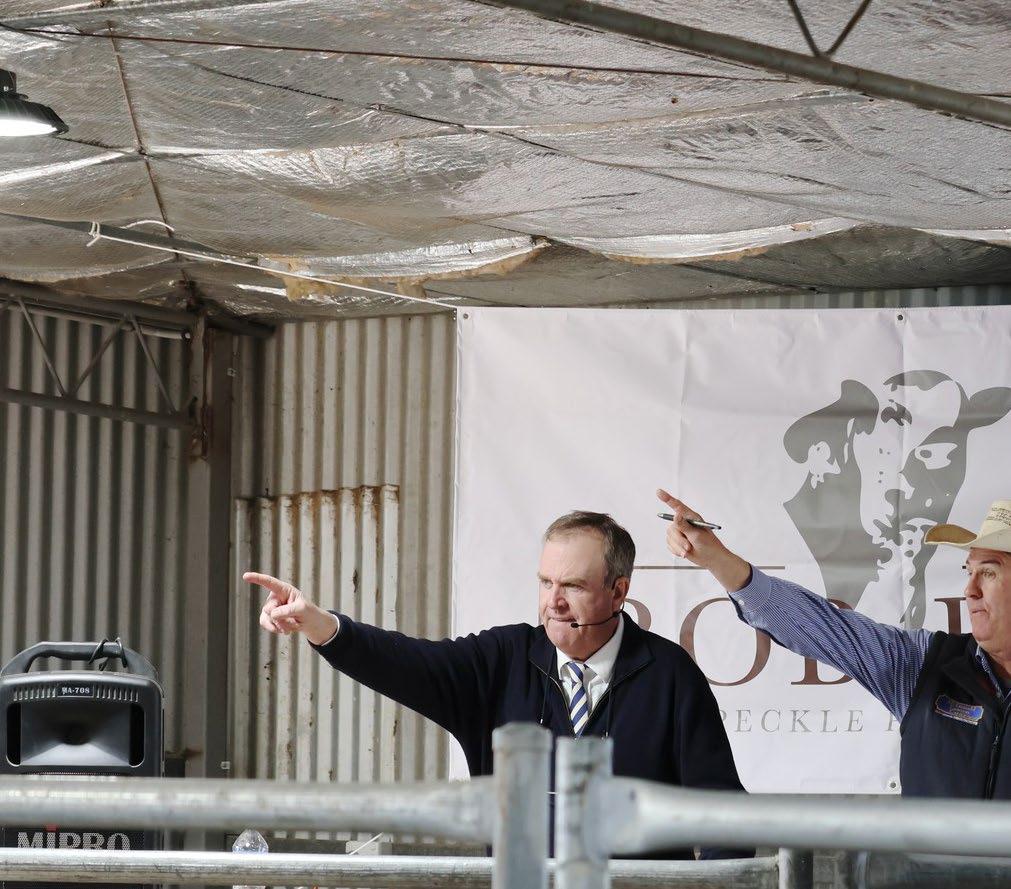
Inaugural Bull Sale
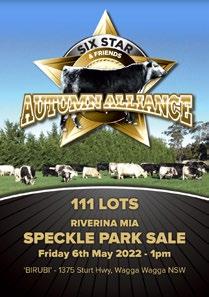
10/16 bulls sold to an average of $9,730
High Sellers: Lot 4 Gin Gin Ragnor R21 for $16,800 to Sam & Nicola Tonkin
Te Mooi Speckle Park
The Performance Sale
25/27 bulls sold to an average of $10,842 & 25/25 females sold to an average of $14,526
High Sellers: Bull - Lot 3 Te Mooi Rainmaker R3 for $36,000 to Minnamurra Speckle Park & Female - Lot 31 Waratah Pho Finish M126 for $22,000 to Ivery Downs Speckle Park & Lot 38 Te Mooi Rosalita R5 for $22,000 to Danzville Speckle Park
Premier Cattle Co
The Power of Premier Female & Genetics Sale
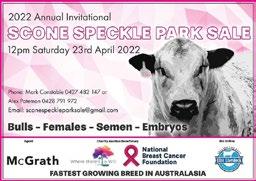
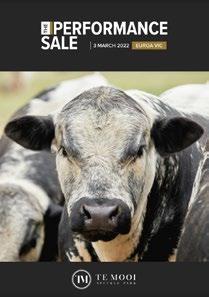
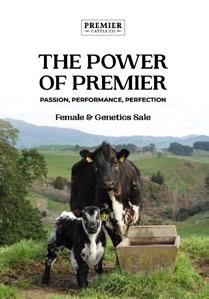
14/18 females sold to an average of $10,071 & embryos sold to an average of $1,640 per embryo
High Sellers: Female - Lot 3 Premier L11 Molly Q28 for $28,000 to Lagoon Speckle Park & Partners (new New Zealand record price)
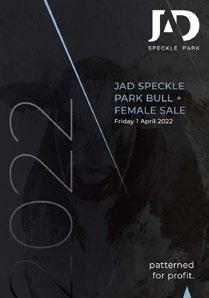
Speckle Park Sale
37/37 bulls sold to an average of $22,514 & 36/36 females sold to an average of $15,333
High Sellers: Bull - Lot 3 JAD Rare Cat R109 for $55,000 to Minnamurra Speckle Park & Female - Lot 50 JAD 26T Yorbalinda R77 for $24,000 to Te Mooi Speckle Park
23 April 2022
SconeSpeckleParkSale
Multi-Vendor Sale 49/49 bulls sold to an average of $9,326 & 41/41 females sold to an average of $17,886
High Sellers: Bull - Lot 30 Promised Land Ulysses R321 for $24,000 to Celamba Speckle Park & Female - Lot 87 Battalion Heartbreaker R16 for $100,000 to Ivery Downs Speckle Park (new World Record for Speckle Park Female)
Autumn Alliance Sale
Multi-Vendor Sale 18/22 bulls sold to an average of $17,562 & 14/14 females sold to an average of $18,286
High Sellers: Bull - Lot 4 Six Star Justice R10 for $100,000 to Toebelle Speckle Park (new World Record for Speckle Park Bull) & Female - Lot 35 Six Star L14 Teeka S88 for $36,000 to Celamba Speckle Park
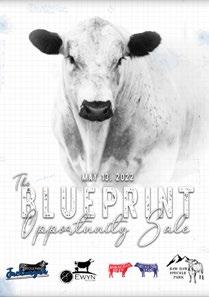
20/20 bulls to an average of $10,246 & 30/30 females to an average of $18,872
High Sellers: Bulls - Lot 50 Jackungah Saddle Up S13 for $16,000 to Mac Jones & Females - Lot 27 Jackungah HSE11 Codiak Pink S21 for $40,000 to Pemberton Speckle Park
Black Diamond Speckle Park Diamonds Are Forever Sale
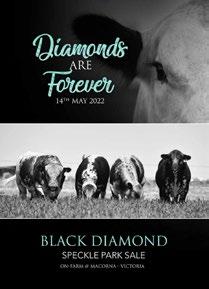
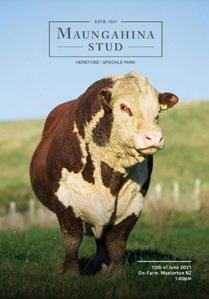
18/18 bulls sold to an average of $10,278 & 19/19 females sold to an average of $14,896
High Sellers: Bull - Lot 3
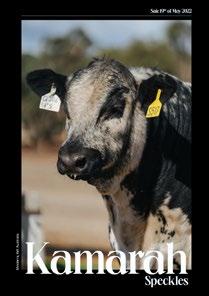
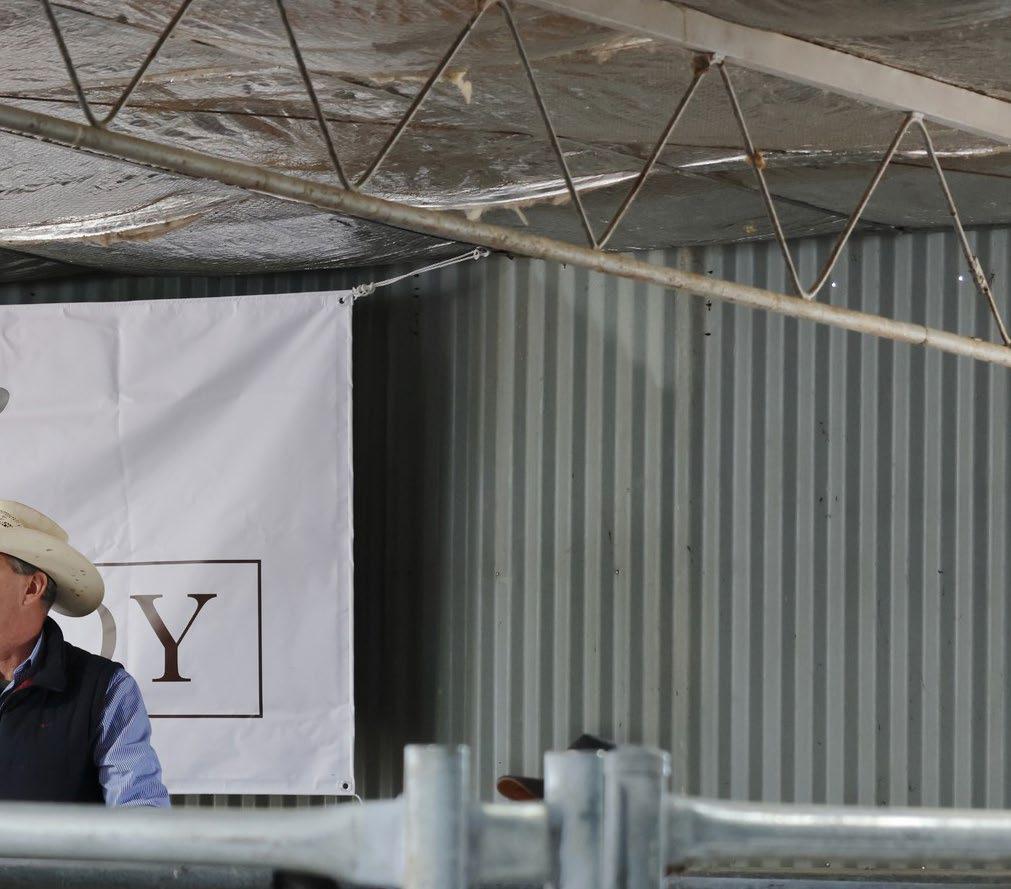
Black Diamond P124 Russian Roulette R730 for $27,000 & Female - Lot 30 Black Diamond M34 Remix R1070 for $30,000 to Celamba Speckle Park
Kamarah Speckles Speckle Park Sale
15/20 bulls sold to an average of $6,666 & 11/11 females sold to an average of $8,136
High Sellers: Bulls - Lot 4
Kamarah Superman EBH S517 for $20,000 to CC Wheatley & Females - $10,500 to CC Wheatley
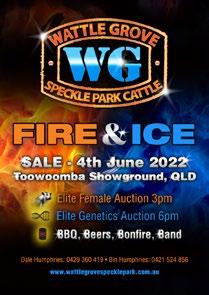
Wattle Grove Speckle Park Fire & Ice Sale
60/60 females sold to an average of $16,317
High Sellers: Lot 8 Wattle Grove N9 Charlie R161 to Celamba Speckle Park
Maungahina Stud
Annual Sale
14/16 Bulls sold to an average of $16,577
High Sellers: Lot 36 Maungahina Rising Star R286 for $65,000 to Minnamurra Speckle Park
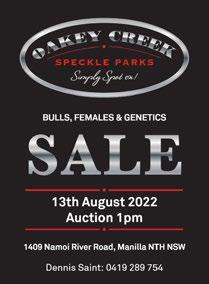
Oakey Creek Speckle Parks Speckle Park Sale
24/24 bulls sold to an average of $13,256, 12/12 females sold to an average of $10,138, 4/4 embryo packages sold to an average of $1,507/embryo & 4/4 semen packages sold to an average of $312/straw
High Sellers: Bull - Lot 14 Oakey Creek B160 (Commercial) for $21,000 & Female - Lot 26 Oakey Creek Malibu R2 S23 R2 for $30,000 to Celamba Speckle Park
August 2022
Next Gen Speckle Park Multi-Vendor Sale
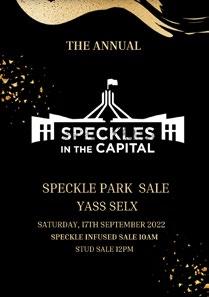
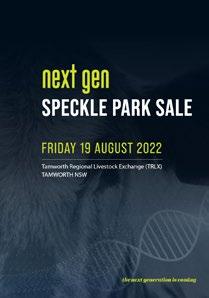
17/17 bulls sold to an average $9,362, 18/18 females sold to an average $10,333, 10/10 embryo packages sold to an average $1,258 & 8/9 semen packages sold to an average of $72.50/straw
High Sellers: Bull - Lot 4 Panorama Ferdinand R19 for $13,500, Female - Lot 31 Panorama 252E MooNa R11 for $14,000 to Champness Pastoral Co, Embryos - Lot 41 INC Savannah 71F x INC Goliath 747G for $1,400/embryo & Lot 43 Panorama MooNa Lisa M1 x River Hill Smokeshack 252E for $1,400/ embryo & Semen packages - Lot 36 Panorama Effect Q03 for $100/straw to Underhill SPECS
27 August 2022
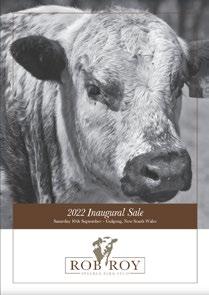
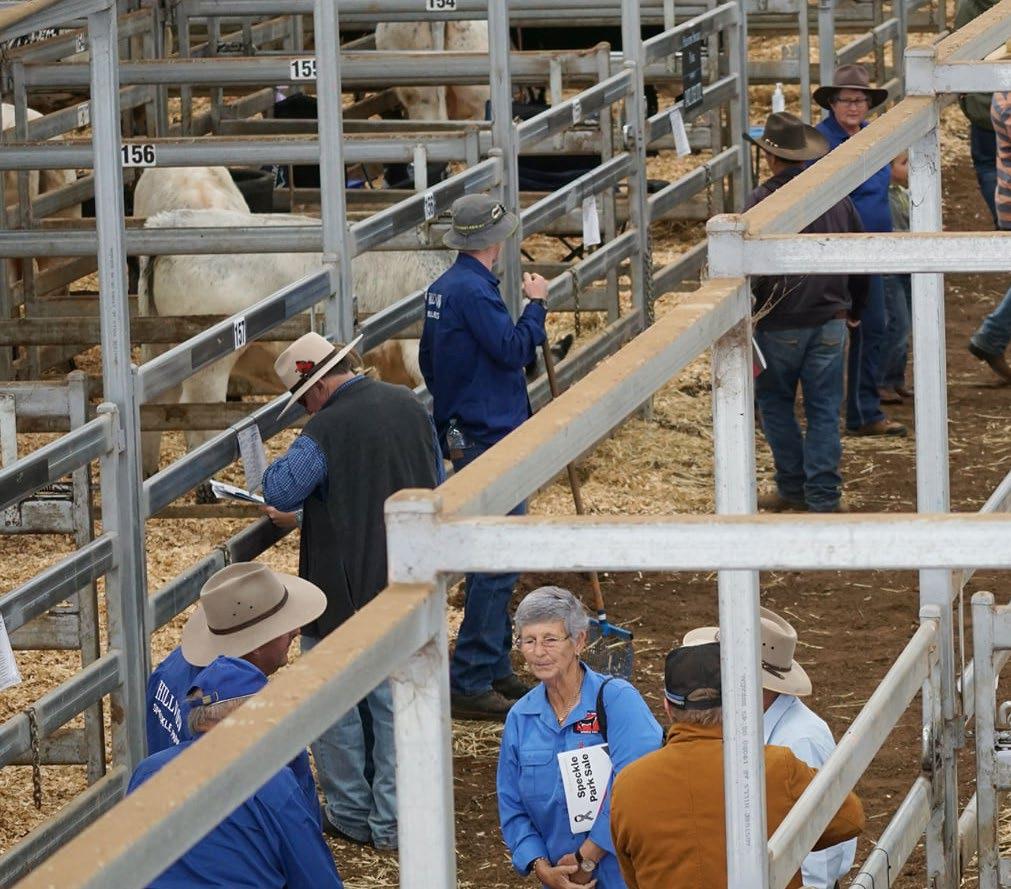
Dorroughby Speckle Park
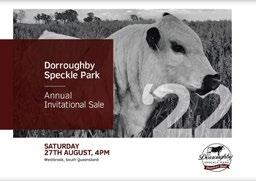
Invitational Sale (multi-vendor) 29/29 bulls sold to an average of $16,069, 31/31 females sold to an average of $14,419, 11/11embryo packages sold to an average of $2,097/embryo & 24/24 semen packages sold to an average of $363/straw
High Sellers: Bull - Lot 5 Dorroughby Recruit R29 for $30,000 to Sweet Acres Speckle Park, Female - Lot 33 Pinnacle Park Unique Apparition S5 for $38,000 to Glenroy Speckle Park & Ty Downs, Embryos - Wolf Lake Field Ready 52F x Nunkeeri Park Lauren L1 for $4,500/embryo to Cherry Creek Speckle Park & Semen - Wolf Lake Field Ready 52F for $1,100/straw
2 September 2022
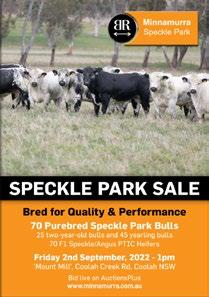
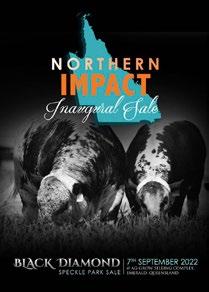
Minnamurra Speckle Park Bull Sale
55 bulls sold to an average of $12,145
High Sellers: Lot 2 Minnamurra Regal R69 for $42,000 to Black Diamond Speckle Park
7 September 2022
Black Diamond Speckle Park Northern Impact Sale 35/35 bulls to an average of $12,228
High Sellers: Lot 2 Minnamurra Regal R69 for $42,000 to Black Diamond Speckle Park
10 September 2022
Rob Roy Speckle Park Inaugural Sale (multi-vendor) 9/10 bulls sold to an average of $6,333 & 17/17 females sold to an average of $15,412
High Sellers: Bull - Lot 8 Rob Roy Rock Star R19 for $8,000 & Female - Lot 26 Deeargee Rise N Shine R4 for $44,000 to Bear and Bean Speckles
17 September 2022
Speckles In The Capital Multi-Vendor
25/41 bulls sold to an average of $8,086 & 26/28 females sold to an average of $8,136
High Sellers: Bull - Lot 19 SPK L260 Razzamataz R125 for $35,000 & Female - Lot 52 Merom E27 Cyndy Q23 for $20,000
23 September 2022
Maungahina Stud
Yearling Bull Sale
24/24 bulls sold to an average of $4,300
High Seller: Lot 45 Maungahina S258 for $9,500 to Pine Hill Speckle Park
Ivery Downs Speckle Park Spot on the Money 27/27 embryo packages sold to an average of $2,046/ embryo & 18/18 semen packages sold to an average of $361/straw
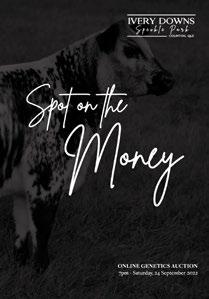
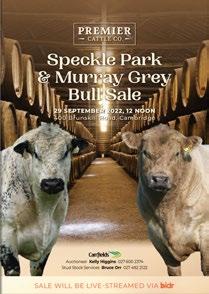
High Sellers: Embryo - Lot 3 Codiak Putnam GNK 61Y x Double S Belva 154B for $3,600/embryo to Battalion Speckle Park & Semen - Lot 34 Battalion Upper Class for $860/straw to Deeargee Speckle Park (new Australian Record for semen from Australian Speckle Park Bull)
Premier
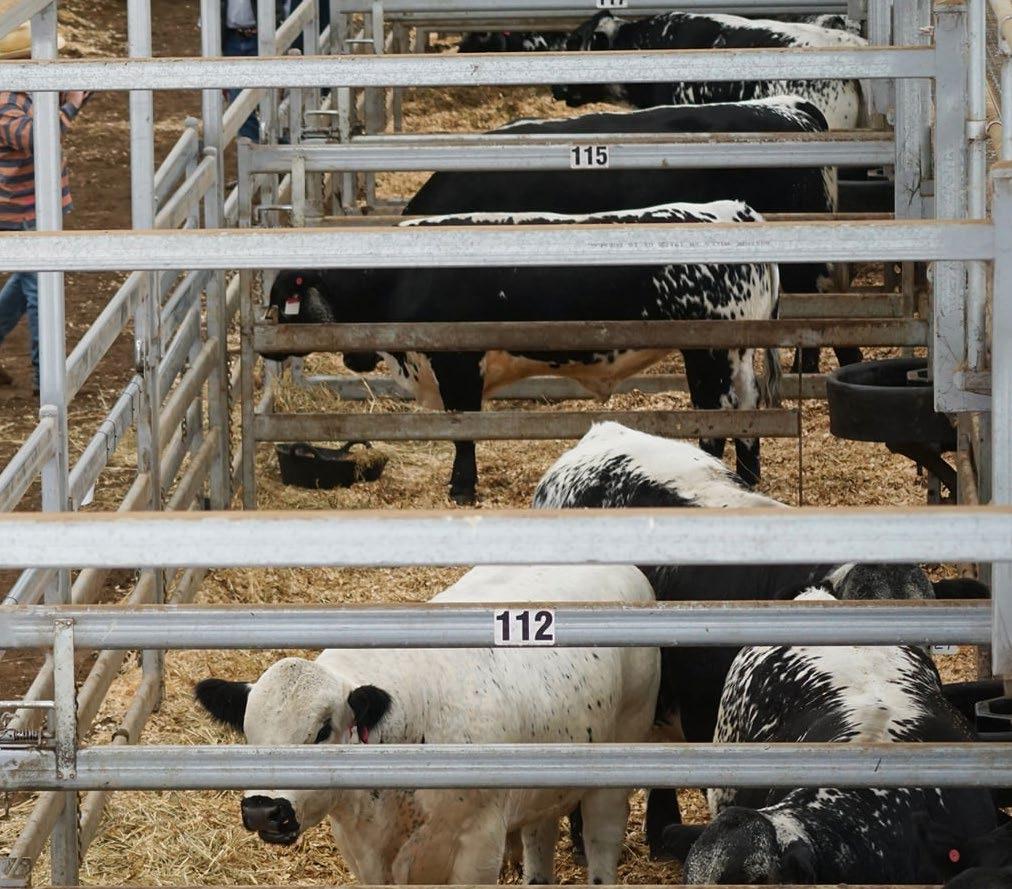
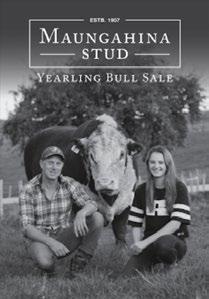
Annual Yearling Bull Sale
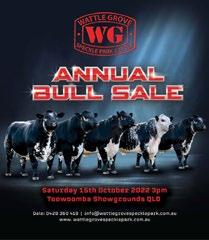
25/25 bulls sold to an average of $3,855
High Sellers: Lot 4 Premier 25U Crown Royal S2 for $6,500 to the Mason Family
8 October 2022
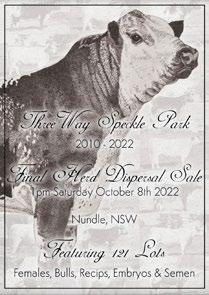
Three Way Speckle Park Cattle Co
Final Dispersal Sale
13/15 bulls sold to an average of $10,358, 39/39 females sold to an average of $15,128, 12/12 embryo packages sold to an average of $1,650/embryo & 14/14 semen packages sold to an average of $128/ straw
High Sellers: Bull - Lot 46 Three Way San Diego S5 for $26,000, Female - Lot 4 Three Way Run Baby Run R4 to Bear and Bean Speckles & Lot 15 Three Way Sweet Gypsy Rose S10 to Gotcha Speckle Park, Embryo - Lot 97 Three Way Gracelands G0019 x Untapped HSF 3A for $2,400/embryo to Numina Farm & Semen - Lot 121 Wattle Grove Mr Business WGS E11 for $320/straw
15 October 2022
Wattle Grove Speckle Park
Annual Bull Sale 68/68 bulls sold to an average of $13,258
High Sellers: Lot 4 Wattle Grove News Man for $45,000 to Gotcha Speckle Park

We have seen records tumble this year, proving buyer confidence in the strength of the Speckle Park breed continues to surge.
The Scone Speckle Park Sale held on 23 April 2022 saw Battalion Heartbreaker R16 convincingly set a new World Record price for a Speckle Park animal, selling to Ivery Downs Speckle Park for $100,000. The previous World Record, held by Wattle Grove P503 Cara S101 purchased by Ivery Downs Speckle Park for $75,000, had been set only 6 months prior in October 2021.
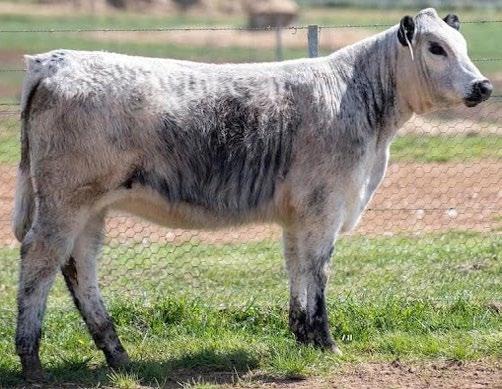
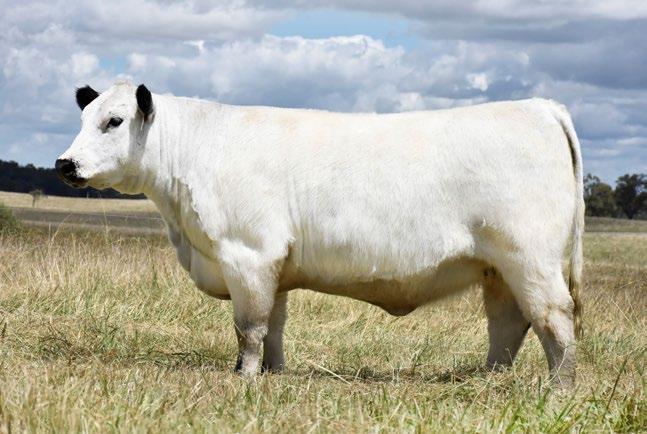
With 6 heifers on offer out of the matriarch of the Battalion Speckle Park herd, Battalion Heartbreaker M1, it was no surprise to see such strong buyer interest. Although he had an inkling the heifers would be well received, even Battalion Speckle Park co-principal Grant Kneipp could not have imagined R16 would fetch a 6-figure sum. “Heartbreaker M1 had been consistently breeding progeny that stood among our best in every drop but none more so than Heartbreaker R16. She had the physical attributes to excel to another level. We thought she was capable of giving the previous record price a budge, but we never expected the world record to be exceeded by
the amount it did” co-principal of Battalion Speckle Park, Grant Kneipp recalls fondly.
Having purchased a Heartbreaker bred bull in Battalion Upper Class at Scone the previous year, Dale Jones from Ivery Downs was intent on securing a Heartbreaker heifer to add to his growing herd. “Grant was probably sick of me trying to catch him in a moment of weakness to see if he would sell M1. When I saw the offering at Scone, I knew it would be a perfect opportunity for us to add further maternal strength to our program. Grant and Kylie consistently produce cattle that anyone would be proud to have in their paddock” Dale says.
But it took less than a fortnight and R16 found herself sharing the title – with Six Star Justice R10 being knocked down for $100,000 to Toebelle Speckle Park at the Six Star Autumn Alliance Sale on 6 May 2022. The bull World Record had stuck around for a little longer, having been held by Wattle Grove Paperboy who sold to Temple Mount Farm for $68,000 in October 2020.
“We saw this as a once in a lifetime opportunity to secure a bull with such superb raw data, structural integrity and a pedigree stacked with highly acclaimed positively influential bloodlines. Justice also moves fluidly and correctly. We think he has the potential to become a game changer in the breed” reflects Liz Sutcliffe of Toebelle Speckle Park.
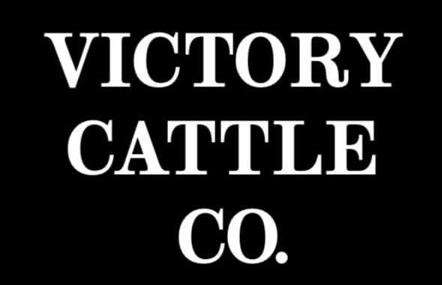

With the increased attention on the Speckle Park breed and its popularity sky rocketing, we are set for another exciting year of sales ahead in 2023.
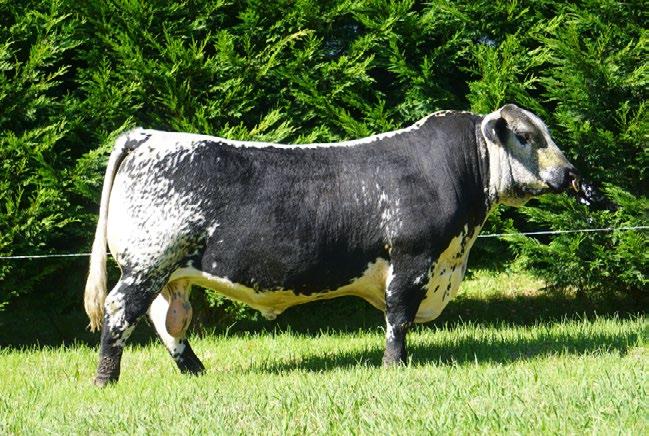
Greg Ebbeck of Six Star Speckle Park is a stalwart of the Speckle Park breed, having been involved from its beginning in Australia. With an unrivalled knowledge of the breed, Greg was well positioned to call it early, and with Justice, he did. “At a very young age, I was blown away with Justice – actually, from the minute he was born I knew I had something very special. I consider him to be the best or equal to any bull of any breed I have bred in my 55 years of breeding cattle. His IMF score was the largest we have measured on any 2 year old” Greg comments. Having been the underbidders on some very quality animals in the lead up to the Autumn Alliance Sale, Toebelle Speckle Park were determined to walk away from the sale with their number one choice.
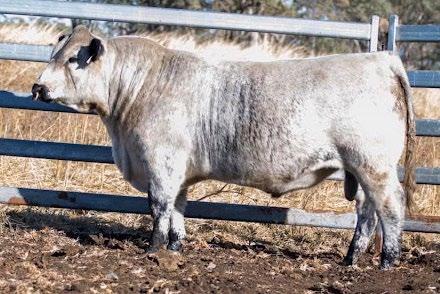 Wattle Grove Paperboy
Wattle Grove Paperboy
They might be easy on the eye, but it is what’s on the inside that counts. Speckle Park cattle are known for their superior yield, high feed conversion rates and adding tremendous hybrid vigour. Winning carcase competitions and consumer taste tests, Speckle Park has cemented its position as the breed to watch in the Australian beef industry.
While the popularity of the breed is evident in the show ring, it is commercial demand that will determine the longevity of Speckle Park cattle in Australia. Demand continues to grow with exceptionally high clearance rates at the local yards and recorded at Speckle Park stud sales with growing average prices and new world records being achieved.

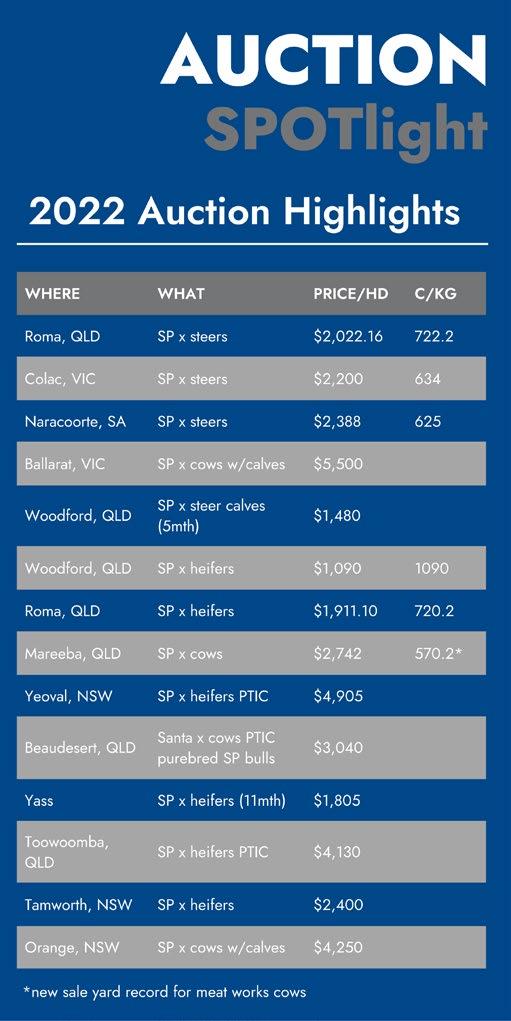
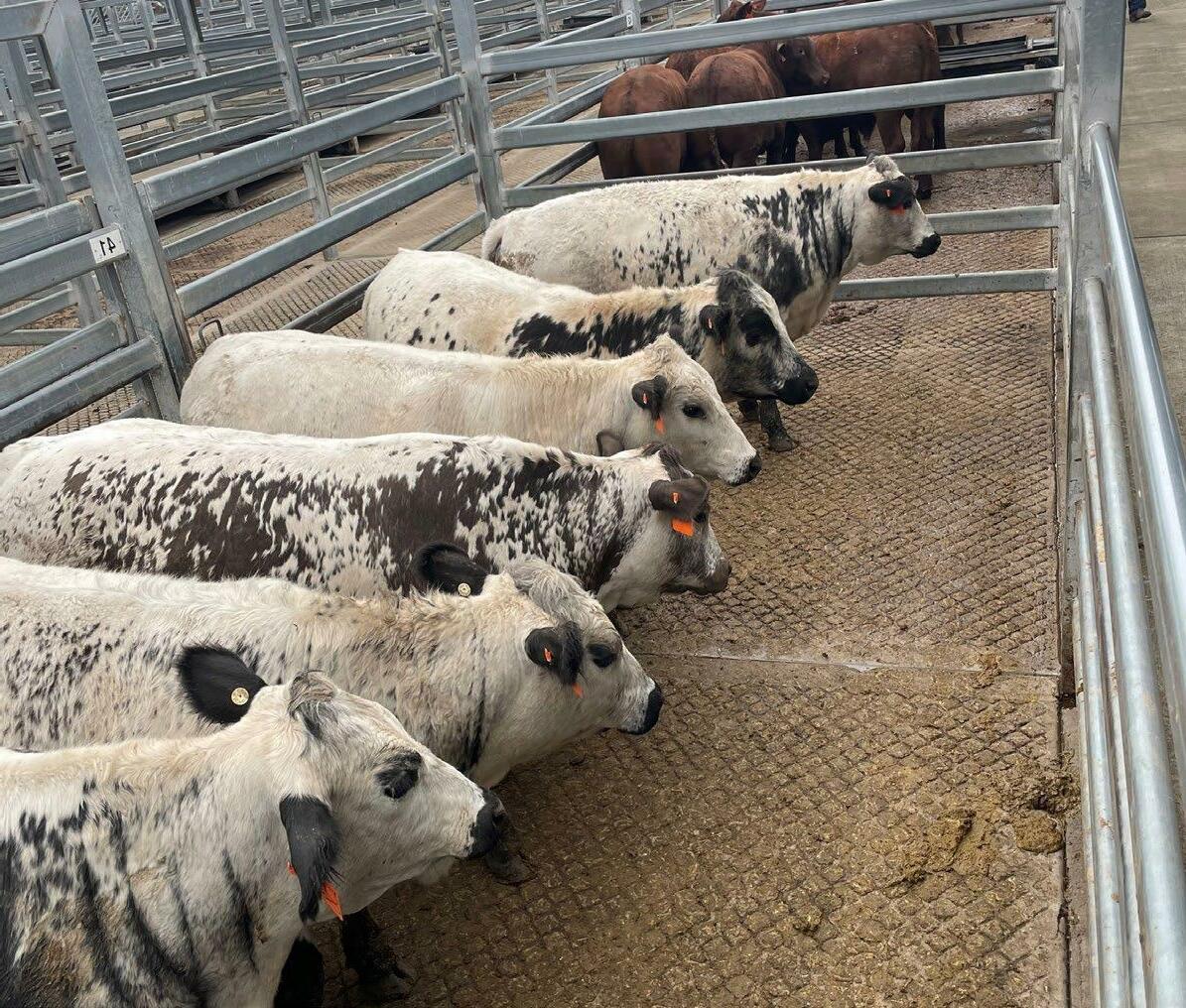
From what is still a comparatively small contingent, Speckle Park cattle commanded a number of podium positions at this year’s Brisbane Ekka on hoof and hook. Speckle Park steers were awarded first place in the pen of 6 (400 – 520kg category) for the second year running and a Speckle Park infused steer was winner of the MSA Eating Quality Award for the Mediumweight class. Speckle Park steers also took out the Open Middleweight Purebred Steer class at the Sydney Royal Easter Show and Champion Crossbred Steer on Hoof at the Royal Adelaide Show.
“Results like these are attracting attention. We have seen an influx of new buyers to the Speckle Park market and competition for quality stock has been growing substantially,” says Carl Young, Territory Sale Manager, Elders Beaudesert.
The marked increase in buyer activity has translated to an increase in the use of Speckle Park bulls in commercial operations which is in turn seeing far more Speckle Park infused cattle in the sale pens. Saleyards have been producing increasingly remarkable results for vendors of Speckle Park cattle. Demand and competition is fierce with buyers from all kinds of operations vying to secure stock. “There has definitely been a shift. Speckles are being
accepted more widely as being positive contributors to commercial operations and that is being seen at auction. When there are Speckle Park infused cattle in the pen, you can see a lift in the interest and bidding takes off. Speckles are definitely fetching a premium to comparable stock,” Carl notes.
Speckle Park is the feature breed at the Sydney Royal Easter Show in 2023 and to ensure the breed puts its best hoof forward, Speckle Park International is offering a whopping total prize pool valued at over $90,000 across Purebred, Youth and Steer classes.
The Speckle Park breed is making its mark in the show ring being the number 1 breed by number shown at the Brisbane Ekka and the third largest breed by entries at the Adelaide Royal. With Sydney’s Royal Easter Show attracting a staggering 900,000 attendees in 2022, it provides a fantastic platform to showcase the breed’s commercial advantages to a very broad audience. “We know there are countless high quality purebred Speckle Park and Speckle Park infused steers out there. We are hoping that by offering this attractive prize pool, we will receive high quality and quantity of entries that will demonstrate to the market the strength of this breed and it’s benefits into commercial operations. We have already received a tremendous amount of interest in the Sydney classes. This is a fantastic promotional
opportunity for the Speckle Park breed and we are going to do everything we can to showcase it well” says SPI Chairman, Mitch Warrener.
In addition to nominated classes, SPI will also be hosting a number of social and networking functions including a ticketed dinner function at the Novotel Sydney Olympic Park which will be attended by members, connections and industry partners and feature a fundraising auction.

Information currently available can be viewed by scanning the QR codes below. SPI will shortly release a Sydney Royal Easter Show Newsletter that will provide detailed and useful information in the lead up to the event, including a “Beginners Guide” for those who will be making 2023 their first Sydney Royal.
We look forward to welcoming you all to Sydney in 2023 and making the most of this fantastic opportunity for the Speckle Park Breed.
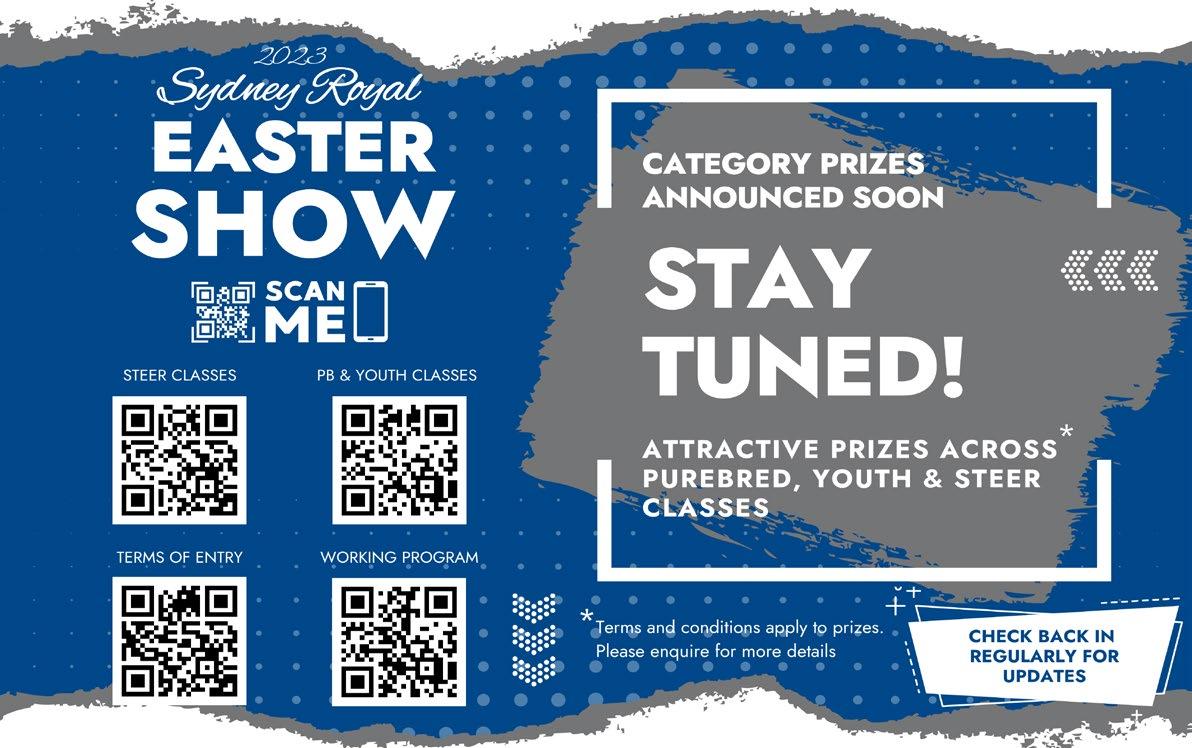

In a grand testament to what we’ve known for a long time, the Royal Queensland Show MSA Eating Quality Award (Mediumweight - class 6) was won by a Speckle Park infused steer, bred by Born Ready Speckle Park, prepared and presented by M&M Show Steers and Fitting Service.
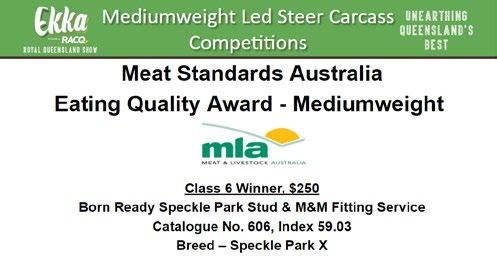
While ‘BP’ didn’t place in his led class, he exceeded expectations where it mattered most. BP produced rump and rib scans of 7 and 8 respectively, an EMA score of 73 and a meat yield of 60.7% to ultimately take home the coveted blue sash.
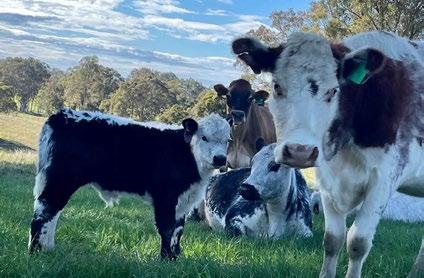
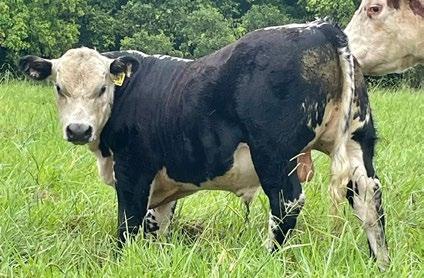
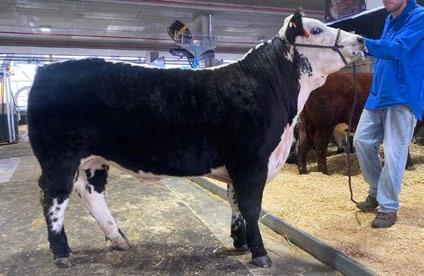
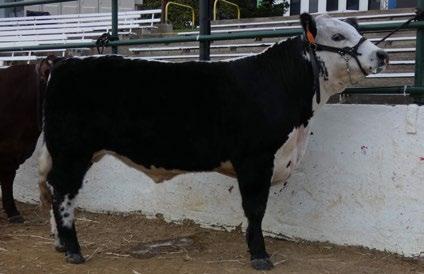
‘BP’ was an F1 Speckle Park steer, by PAR Ace In The Hole 66A out of a Shorthorn-Hereford cross cow (approx. 75%/25% respectively). “We have always had great success with Speckle/Shorthorn cross, it is our preferred commercial combination. We find that the calves are low birth weight, but they are very
thick set and have exceptional growth rates. We always joke and say they come out ready to eat - it appears our prediction was correct!” says Brooke Paff of Born Ready Speckle Park.
Matt & Mikayla Black of M&M Show Steers and Fitting Service had been in discussions with the team at Born Ready in relation to showing on of their bulls and were on the lookout for a quality steer to enter in the Ekka.
After receiving a few photos, Matt says BP immediately grabbed his attention. “We took a trip down to see Brooke and Paffy (Andrew) to check out their stud herd and their commercial cattle and once again BP stood out. After agreeing to buy him from Born Ready, we were a little later picking him up than we would have liked due to the wet weather but we knew that the steer would perform well” says Matt Black.
BP is considered to be one of the easiest steers Matt and Mikayla have ever broken in. Matt reports “the day after we picked up BP we had a halter on him and his nose ring was in due to him being so quiet. Then 1 week later, he was in the show ring placing 4th in a large class of steers that had been on feed for months. Understandably, we were very impressed with that sort of result so quickly after only been weaned for 2 weeks and being broken in a week.”
Born Ready and M&M Show Steers and Fitting Service plan on building on this successful combination and have their sights set on more competitions in the future, not ruling out an entry or two in the Feature Breed classes at Sydney Royal show in 2023.

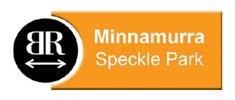
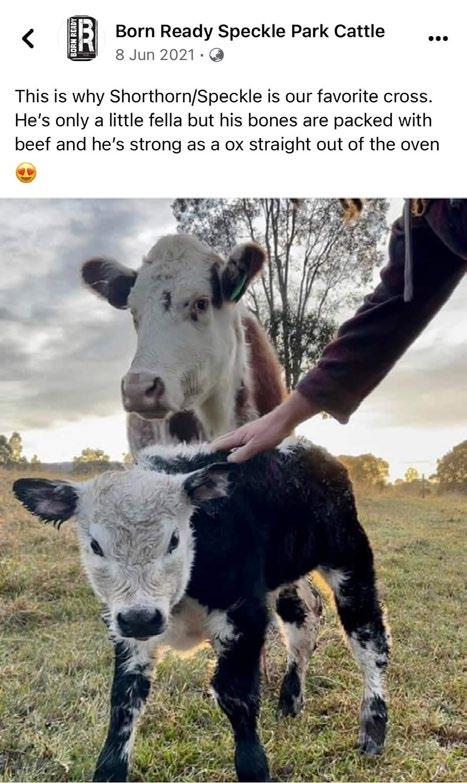
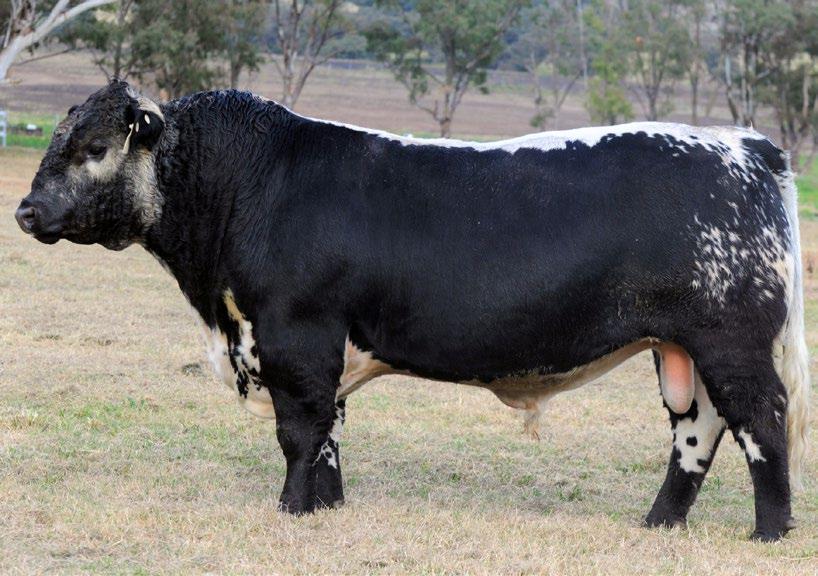

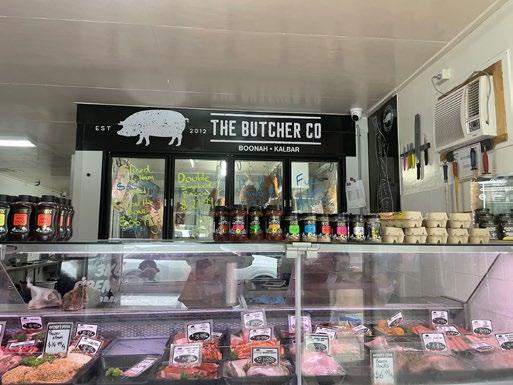
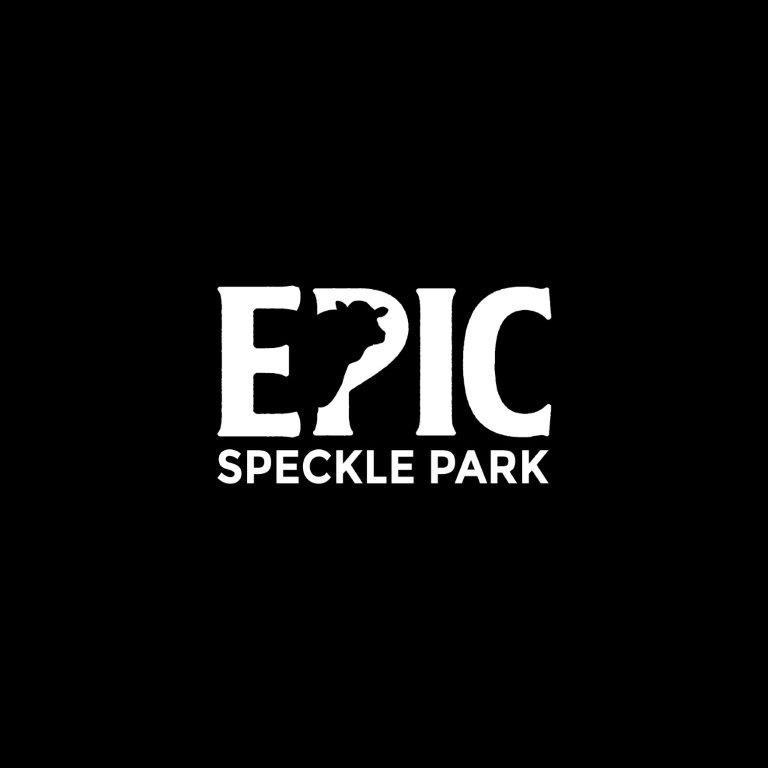
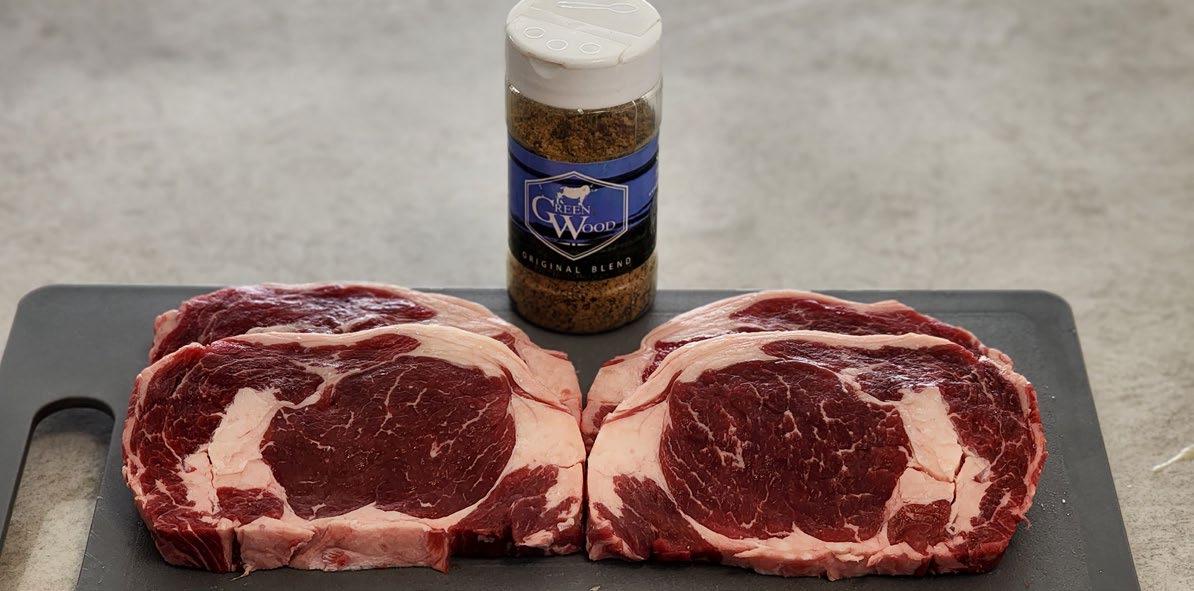
The Butcher Co was successful in its bid to acquire the Speckle Park infused steers that won the Ekka Prime Beef Champion Pen of 6 (400 – 520kg), at Silverdale Saleyards on 21 July 2022.
After a decade of owning and operating The Butcher Co stores at Boonah and Kalbar, South-East Queensland, owner Kane Lutter consistently seeks out Speckle Park beef. Kane purchased his first Speckle Park infused steer approximately 3 years ago at the Beaudesert show sale.
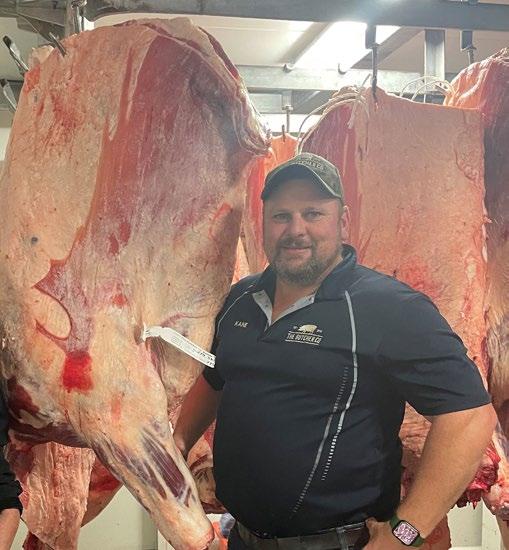
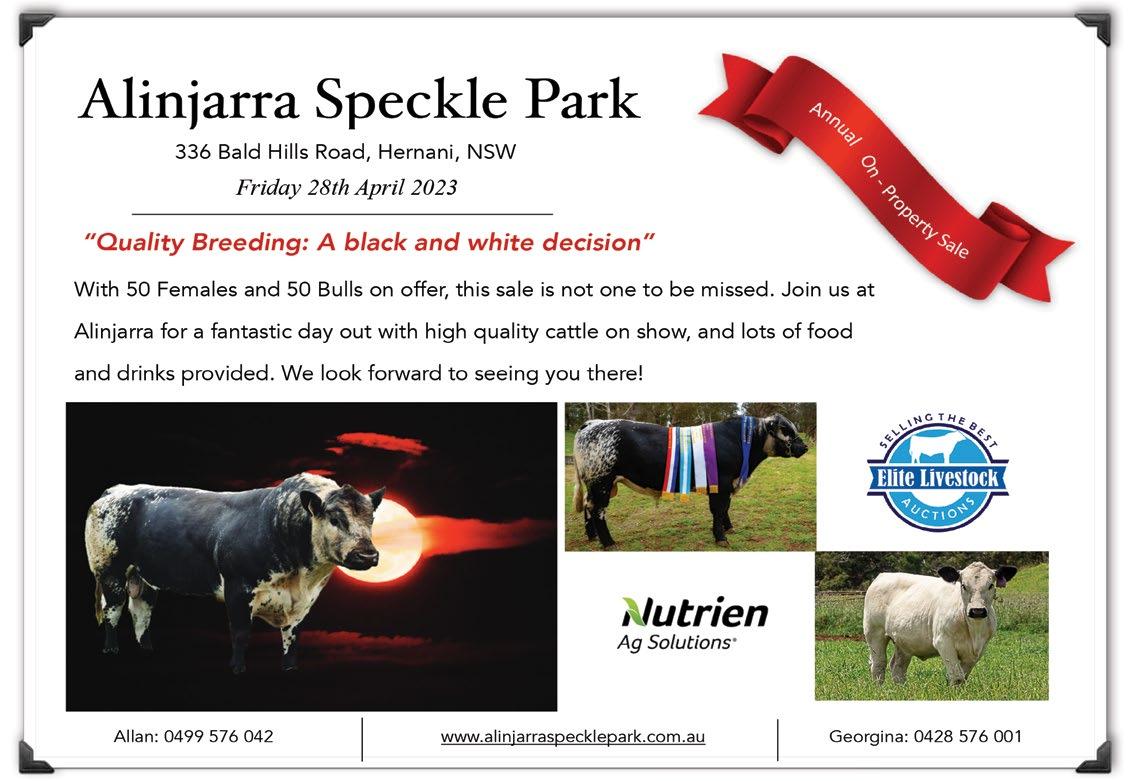
“I was blown away by how even the marbling was. The eating quality was unreal. This steer was the best carcase we have ever had through the shop. So now, whenever we find them at the sales, we buy them – mostly from show sales as they have really well finished cattle. We have 5 speckle cross steers on feed at the moment. We have a lot of customers come back and comment about the eating quality
when we sell Speckle Park beef. We also brought the Grand Champion steer from the Ekka sale (a Limousin steer) but I tell everyone that the Speckle Park steers will be better because they’ll have far superior marbling through the rib fillet. We have already had a lot of pre-sales for these speckled steers” Kane says. Having grown up on a cattle farm to parents who worked on the farm and in meatworks, Kane has been involved with beef his entire life. Running some of his own breeders to produce stock for his shops, Kane commented “I had mostly run Brangus cattle and in the last few years, I added a few head of purebred Angus but now I am looking to get a Speckle Park bull to put over my cows. Hopefully I can pick one up in the Toowoomba sale later this year.”
“the best carcase we have ever had through the shop”
- Kane Lutter



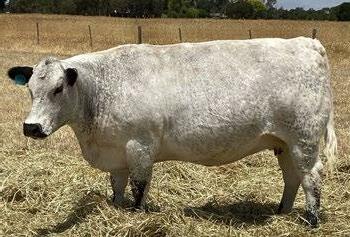
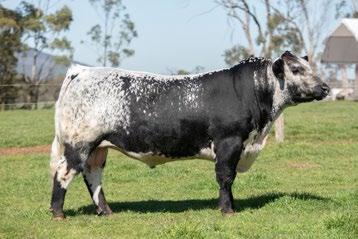


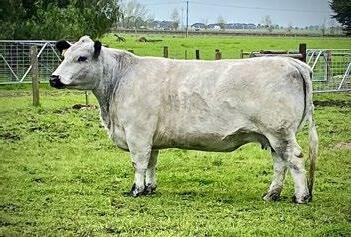
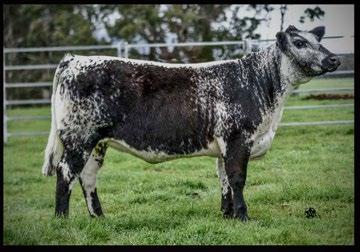
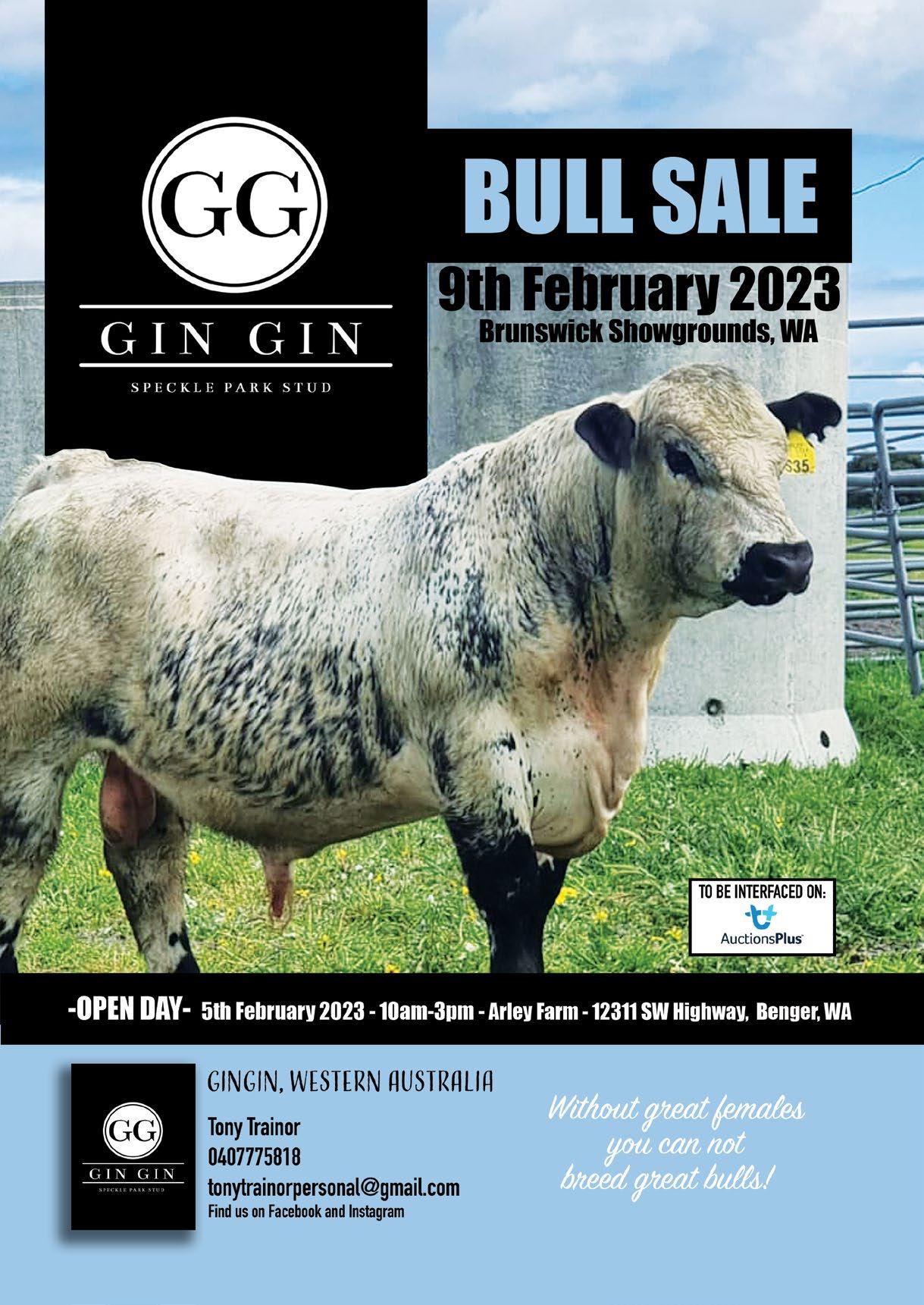
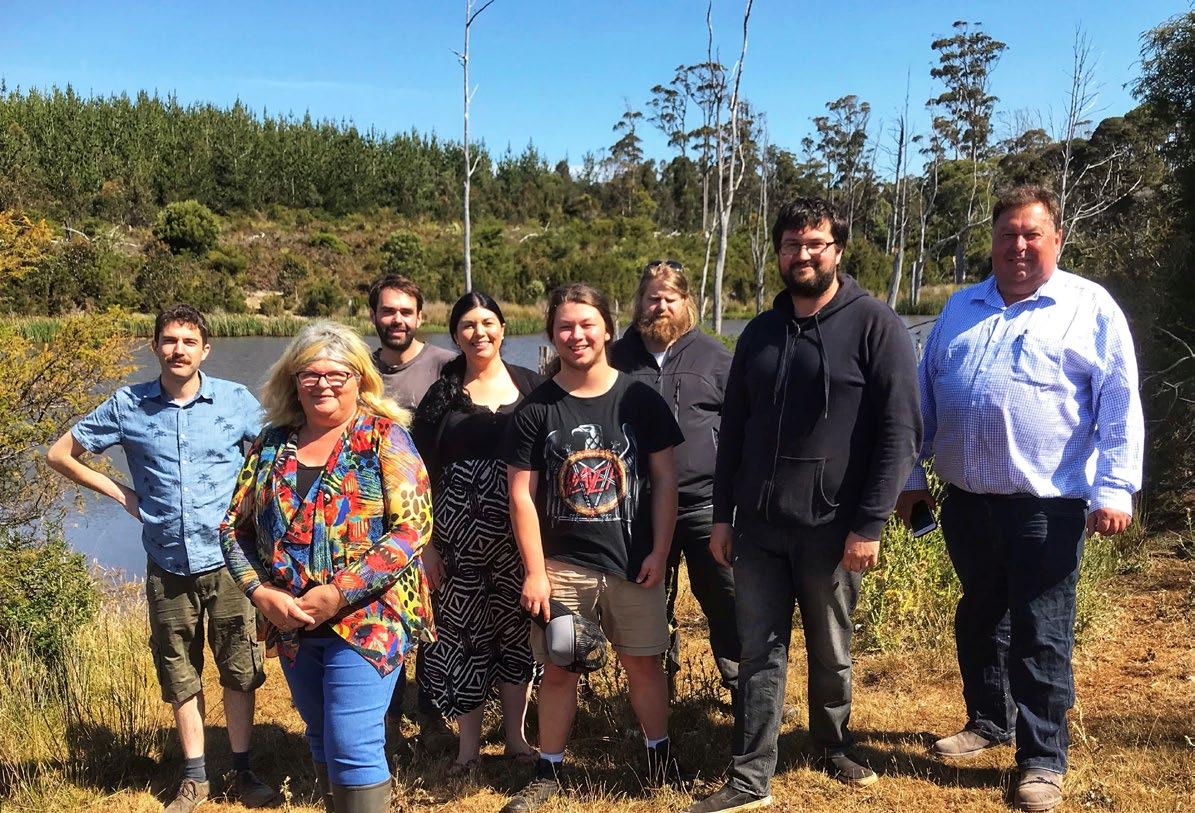 Interview by: Tania Paget
Interview by: Tania Paget
What is the name of your stud, the name of the stud owners, location of the stud, size of land on which the stud is based and the main enterprise taking place on the property?
The name of our stud is Birds Farm Tas. because we bought our little farm from my Mum & Dad whose surname is Birds. My ancestors were bought out to Australia as convicts, for stealing a loaf of bread to feed the family, and stealing a hankie (not wanting to be left alone without her partner). My Grandmother was a “war bride”, being married at the Melbourne Docks, before moving to Tasmania. The stud is situated at Pipers Brook on the North Eastern side of Tasmania. Originally purchased from my sister in 2011, the property was only 90 acres, but we have built up now to a holding of 500 acres, with another 700 acres of leased land. The leased land mostly being utilised to build up my commercial herd. I also run 20 purebred females of varying ages up to 6 years old. My husband, Brian, and our 5 Children, Daniel, Amelia (and her son Zac), Matthew, Brian III, and Jacob, all help with the day to day running of the farm, marking calves, moving cattle and fencing etc.
People in Tasmania have been wanting to try Speckle Park Cattle without paying the higher price of purebred bulls, so I have kept a few cross bred bulls. They like the ones that are quiet, fertile and look like bulls. I have sold several bulls in my local area and converted a few neighbours to the breed. Dairy Farms are using the Speckle Park bulls as are a few big local breeders.

What is the main focus or goal of your breeding enterprise?

My main focus is to show just how versatile the Speckle Park is against all other breeds. I have Herefords, Galloways, Charolais x Angus and Angus cows and F1 Speckle Park. Breeding them up to show other breeders how they cross. I sell the steers as weaners for other people to grow out. In my own breeding program I cull non-productive breeders and animals with horns, bad feet structure and poor temperaments. I will soon have to sell my original cows, or invest in more land, as I am running out of area for them all.
“My main focus is to show just how versatile the Speckle Park is against all other breeds.”
How long have you been breeding Speckle Park cattle (crossbreds or stud stock) and what first attracted you to the breed?
I first started breeding Speckle Park in 2015 when we bought our first bull. My husband , Brian, saw an advertisement for a Speckle Park bull in the paper and so we ended up with Hercules. He was from High Low Speckle Park stud, funnily enough from a town called Wattle Grove, in Tasmania.
He was a son of A & W 15R and he grew into a beautiful big bull. Unfortunately he had bad feet and couldn’t walk very well, so he had to go (I cried)The next bull we got was Roscrea Attitude, however he busted his pizzle and was replaced by Roscrea Polar, who jumped off the trailer after a 3 hour trip and got straight to work, and continued on procreating the countryside with Speckles.
We purchased Hillview Rick, and Ersyldene Nitro, whose calves have been consistent and with great temperaments. Then came SOS P70 Mt Eccles Ferdinand whose calves have also been wonderful. My ET bulls, Qadir and Quixote, as well as SOS P70 , are being used over Angus cows.
What is your favourite Speckle Park bull and Speckle Park female in your own herd and why?
My favourite bull is Qadir. He was from an embryo purchased from Fish Creek Farms. He is very gentle, with great feet but does produce some slightly larger calves, so we do not use him over heifers. My favourite cow in my herd is Serendipity. She is not overly big, has plenty of milk and raises a great calf every year.
What is your greatest breeding /showing achievement to date with your Speckle Park cattle?
My greatest showing achievement is with Qadir MAC Q06. My daughter Amelia, and Jaimie Rainbow took him to the local shows, and he won a lot of ribbons. I am also very proud to have embryos by FCF Storm, and have 5 lovely heifers from Fish Creek Farms as well, including 1 by JAD Napoleon. Her name is Riven, and although she has never been handled, I can pat her in the paddock. I also have a lovely heifer by All Out called Rosehill Trinity, and a gorgeous Cause N Effect heifer from Panorama called Royal. All have been embryo calves. I still have more embryos from Doctor’s Creek, Rosehill and FCF to put in yet, just have not had everything line up to do so.
If you could include any Speckle Park bull or female (alive or no longer with us) in your breeding program, who would it be and why?
If I could include any bull in my program……I have straws in my tank from lots of different bulls, including outcrosses, but if I could include any bull it would be Cause N Effect. He looked so gorgeous, quiet and huge when I saw a video of him with people walking around him in Canada. I do have straws of him in the tank, and also a lovely heifer by him and out of Friday Night. If I could choose any cow, it would be Codiak Unique 8R. She seems to have lovely thick progeny. Also, her daughter AAA L5 and your Lauren, WJC L1. Magnificent Cows!
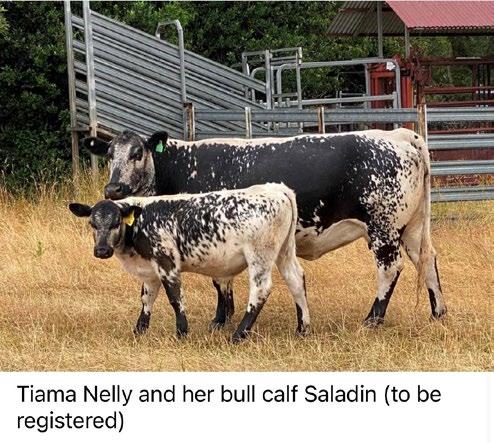

I would like to see my breeding program gain some outcross bulls, cows and heifers and producing outstanding quality animals. I have been researching what will suit my cows, and will hopefully have a mainly purebred herd in 10 years or so, by breeding up my purebred numbers. As well as having a good number of F4 and better cattle.
What is your favourite cut of Speckle Park beef and how do you like it prepared/cooked?
I have not actually eaten my own processed cattle as yet, but my neighbours have, and they tell me it is delicious, very tender, and the best meat they have ever eaten. They process on farm. I have had some Speckle Park steaks from Hanging Rock, and they were delicious.
What is your greatest piece of advice for people getting into the Speckle Park breed?
The greatest piece of advice I can give is to go and visit the studs that you like. The breeders just love showing you their stock. Go and see for yourself.
If you could set up a Speckle Park stud anywhere in the world, where would it be and why?
If I could set up anywhere in the world it would be right where I am. I love Tasmania. We never have it really cold. It gets down to Minus 6 in the Highlands, and it never gets really hot either. Never over 33 degrees. Our droughts don’t last long either, maybe a year at the most.
Ideally, what would you like to see the breed as a whole achieve over the next decade?

I would like to see the breed recognised to be as good as Angus, or better, overall. We have to push that side of things. Our animals and products. Put them into feedlot competitions and get the data out there. We have to cull harder for poor feet, bad temperament and low fertility, as well as genetic abnormalities.
The part that excites me most about the future of the breed is that it is not just a passing fancy. There is data now starting to come out about the breed, and it is starting to get out into the mainstream. I am starting to see them about in paddocks everywhere. We just need the stock agents to be as passionate about pushing them as a good option, as we all are. I think that is starting to happen more now.
What is the name of your stud, the name of the stud owner(s), location of the stud, size of land on which the stud is based, and the main enterprise taking place on the property?
Whiteline Speckle Park. Owned and operated by Michael and Victoria Hastings at Winchelsea. The main farm is comprised of 900 acres and located midway between Geelong and Colac , near the Otway Ranges in Victoria.
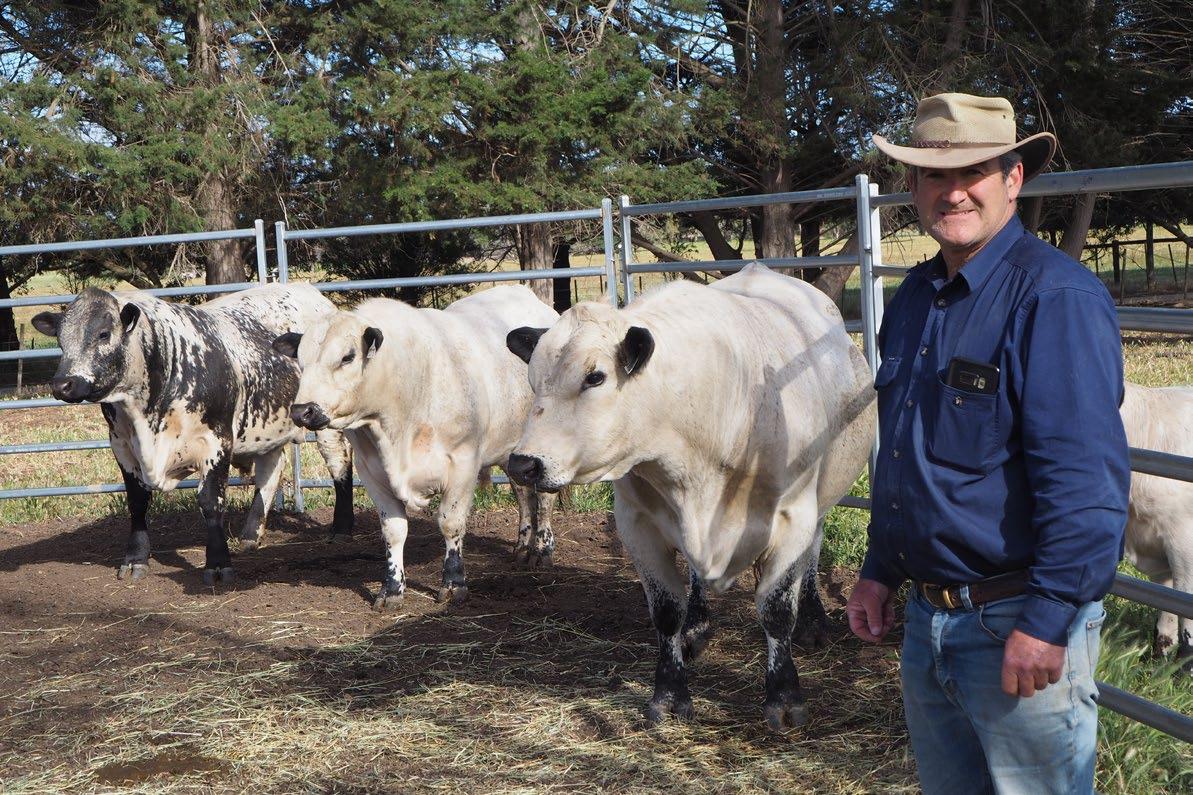
Michaels’ grandfather, Jack Hicks had Angus cattle and Poll Dorset sheep studs at Ballanee, Ballan and was using objective measurement of his breeding program more than 80 years ago. He was a highly regarded show judge and saw the need for good objective measurements to be utilised in the selection process. He always said, “If you don’t measure it, you can’t improve it”.
What is the main focus/goal of your breeding program?
Our focus is producing high quality livestock that perform in the paddock, have longevity, are structurally sound, have great carcase traits and phenotype, and are profitable under commercial conditions, all backed by solid data. We must produce commercially relevant animals that can deliver high returns on farms and from paddock to plate, so we also focus on all attributes to increase MSA grading results.
To do this we have had to utilise every selection tool available. All animals are fully performance recorded with Birth Weights, 200 day, 400 day and 600 day weights recorded and scanned for IMF, fats, and EMA, along with independent temperament and leg and feet scoring for structural soundness. All stock are run under commercial conditions alongside our Angus herd as a benchmark, and we have good long term information from that Angus herd to compare.
To add more accuracy to the data sets, we have been increasing the sizes of our contemporary groups and maintained crosslink sires in each group with strong data sets, significant numbers of progeny and multiple herds. This is very important, at this stage of the breed, to increase the accuracy of the EBVs behind all animals.
In 2020 we used 10 sires, in 2021, 13 sires, and this year we used 15 sires in an effort to improve the balance and performance of all progeny. Every female is carefully matched to potential sires.
How long have you been breeding Speckle Park(Crossbreds or Stud Stock) and what first attracted you to the breed?
Many years ago before we were a pure angus herd we had a few Angus / Shorthorn cross cows which were exceptional. Later I was impressed for many years with the traits of Specklepark and potential to produce highly marbled and high yielding animals off grass, at an earlier age than most other breeds.
So when the opportunity came up to run some embryos through the herd with Dale and Wattle Grove in 2016 we jumped at opportunity as we knew Dale had access to a great number of the high performing Cow lines.
This is a hard question as with a focus on continuous improvement this changes each year with genetic progress. I do my best not to have favourites and enjoy the independent structural assessments and scans to stay objective and stick strongly to our culling on performance criteria.
However if I had to choose one of our bulls I think Whiteline Novak N169 as he was our first high quality stud bull that ticked all the boxes. Great temperament, feet, fleshing, as long as a train, great scrotal, high ema, positive fats and in the top 1% of the breed for IMF and breeds so consistently. He is a half brother to Spknz Falcon and Wattlegrove Paperboy amongst other greats.
Its difficult with cows but if I had to choose one, I think we all have a soft spot for our best foundation cows. A standout from our foundation cows was Whiteline Passion Star P264 which once again is an incredibly well balanced cow with a great frame, plenty of milk, great growth, IMF, positive fats and a huge ema in the top 1% all in 1 package.
What is your greatest breeding/showing achievement to date with your Speckle Park cattle?
We have a passion for breeding quality livestock that perform in the paddock, have longevity, are structurally sound, have great carcase traits, great phenotype and are profitable under commercial conditions. It is incredibly satisfying to have cows that are already in the Top 1% of the breed for most traits, and possess great structural soundness and phenotype, which has been built off other great Speckle Park breeding programs, from within Australia and Canada. This year sees our 1st public offering at Auction through our partnering as guest vendor at The Southern Success Sale. I think our greatest achievement so far is building a great range of high performing cow lines.
What would you like to see your breeding program achieve over the next 5 years, 10 years, 20 years and beyond?
Our objective is to produce highly reliable cattle that are very profitable on farm, hence great animals with good structure, good feet, bone and milk, docility, carcase attributes and calving ease that will produce animals that have high feed efficiency, growth, IMF, and carcase attributes adding extra profit to clients by increasing their MSA grading results.
Our first 5 year plan was to develop a good range of reliable cow lines with solid data behind them, which we have achieved. This meant reliable cow lines and not the “newest kid on the block”.
Our second 5 year plan was to balance the animals to be phenotypically good, with great structure, but also be in the top brackets for EBVs, delivering top quality commercially relevant stock that are highly profitable both on farm and to processors.
What is your favourite cut of Speckle Park beef and how do you like it prepared/cooked?
Its very hard to go past a medium rare eye fillet.
What is your greatest piece of advice for people getting into the Speckle Park breed?
It is very important to incorporate objective measurement into your breeding program and cull hard on animals that do not perform, especially in key attributes such as feet, structure and temperament. Maintain all the key fundamentals of a functional, productive female herd such as good structure, milk and calving ease while pushing the most important carcase traits impacting on meat quality, yield, EMA and IMF.

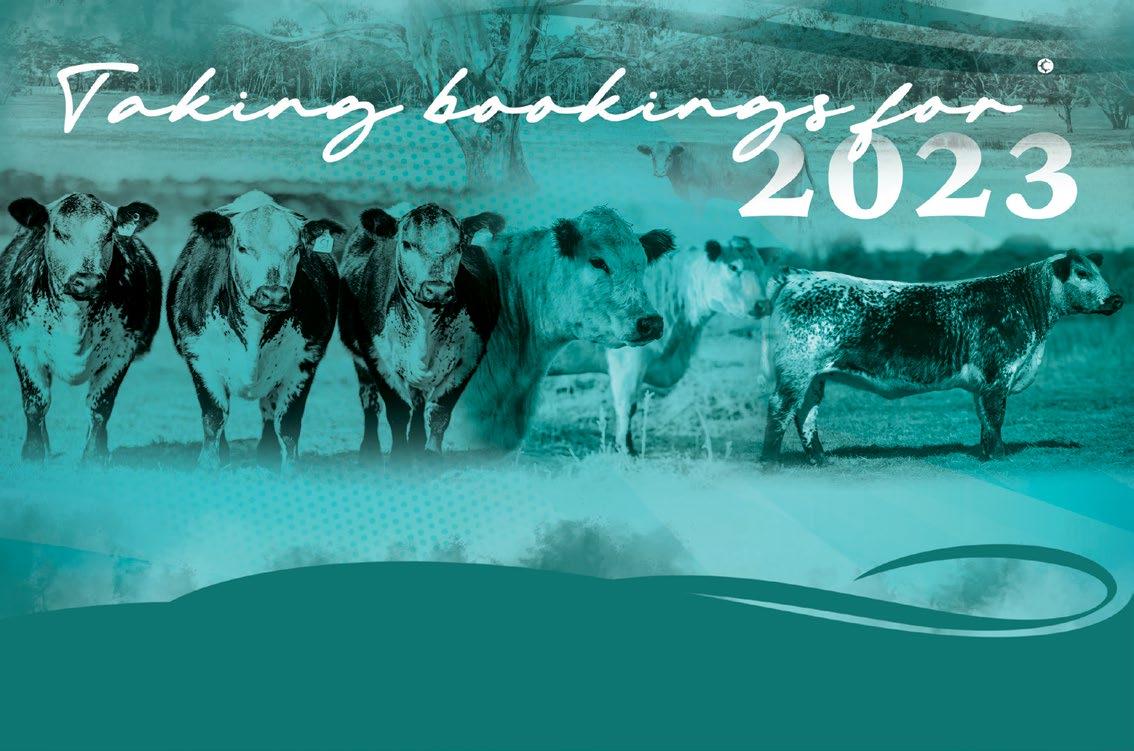
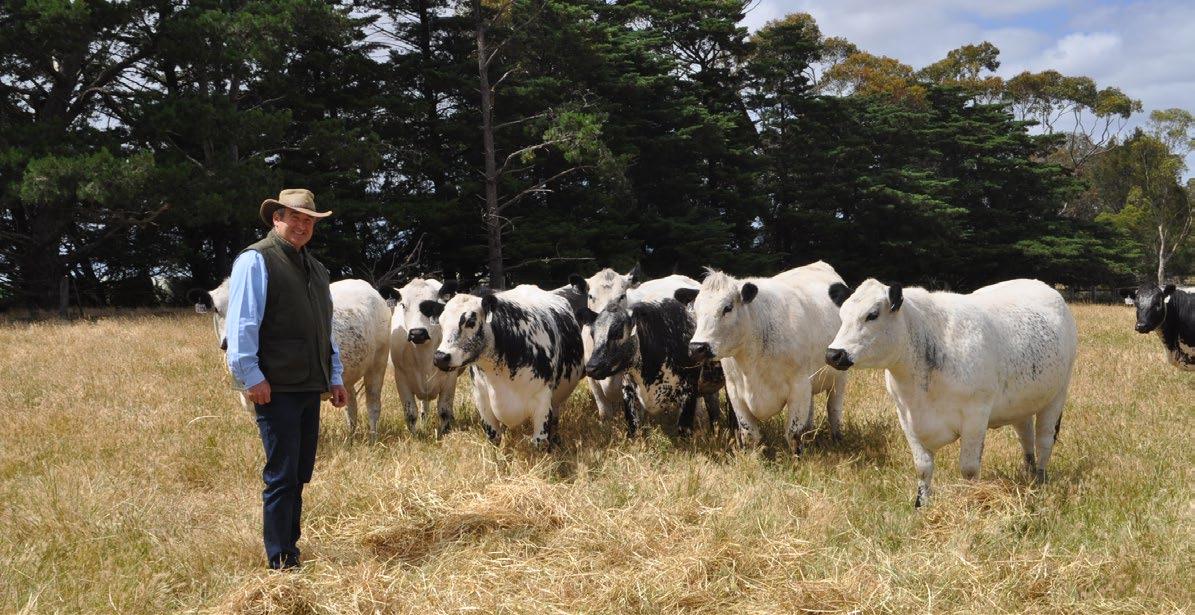
Ideally, what would you like to see the breed as a whole achieve over the next decade?
To be recognised as a breed that can reliably produce quality animals off grass and at a younger age (10-16 months) with high scoring MSA index and solid EBVs to back them.
Clients want to know as much as possible about the stock they are purchasing, so being able to provide extra data with genomics and EBVs adds immense security to their investment. The more breeders taking up and utilising these tools, the better it will be for other breeders/buyers.
This will only be achieved if all Speckle Park breeders get hard on their selection criteria and make the tough decisions to only breed with the best.
What excites you most about the future for the Speckle Park Breed?
Its ability to produce a high quality carcase off grass at an earlier age with potentially high MSA grading. To do this we must collect data of ALL animals both good and poor.


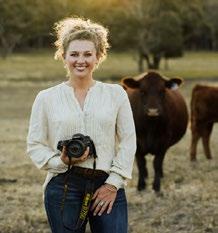
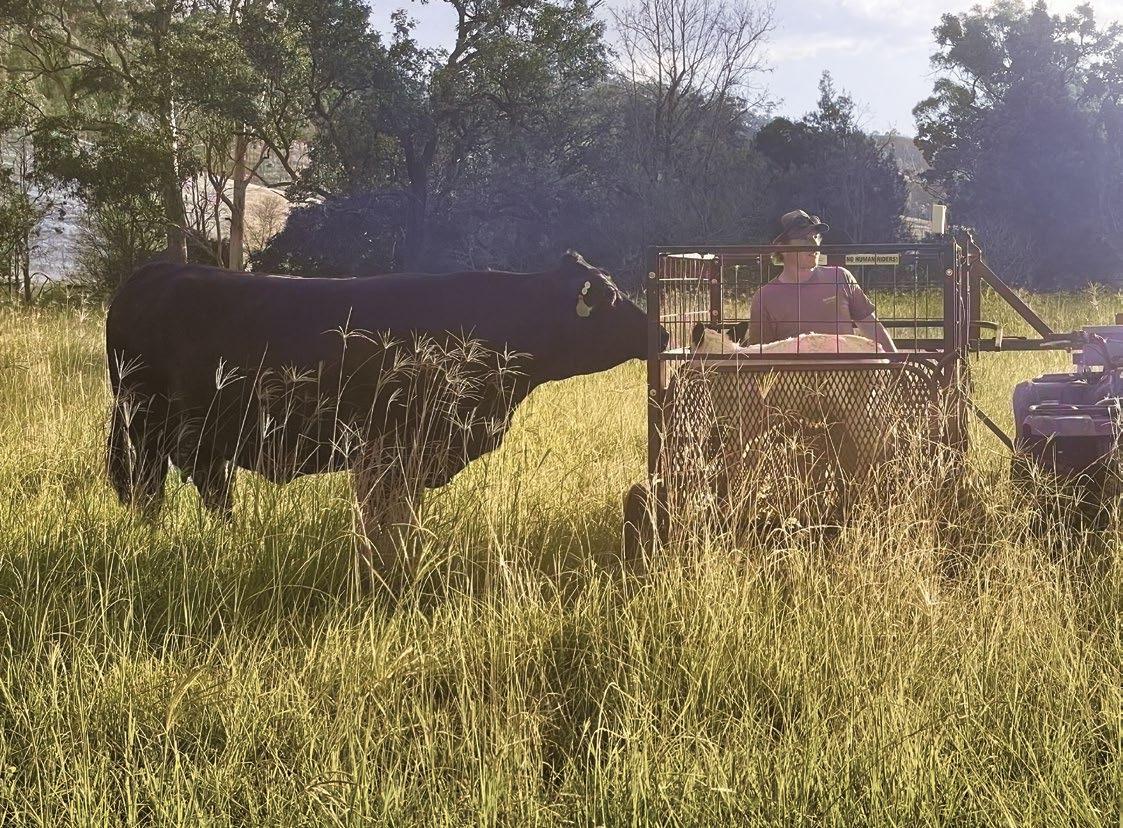

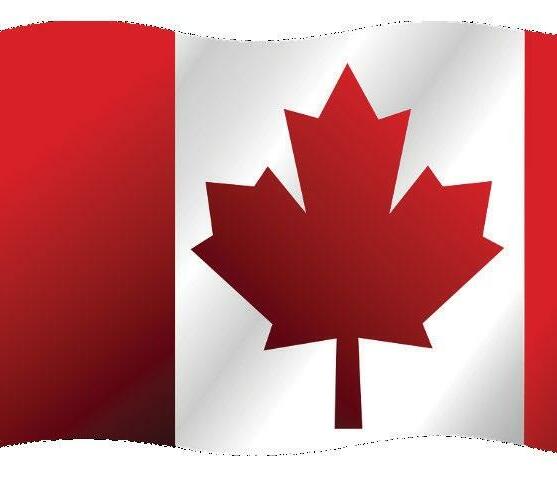
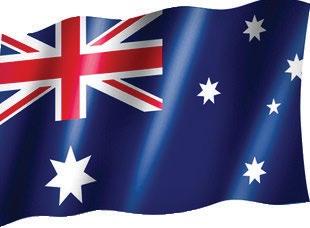
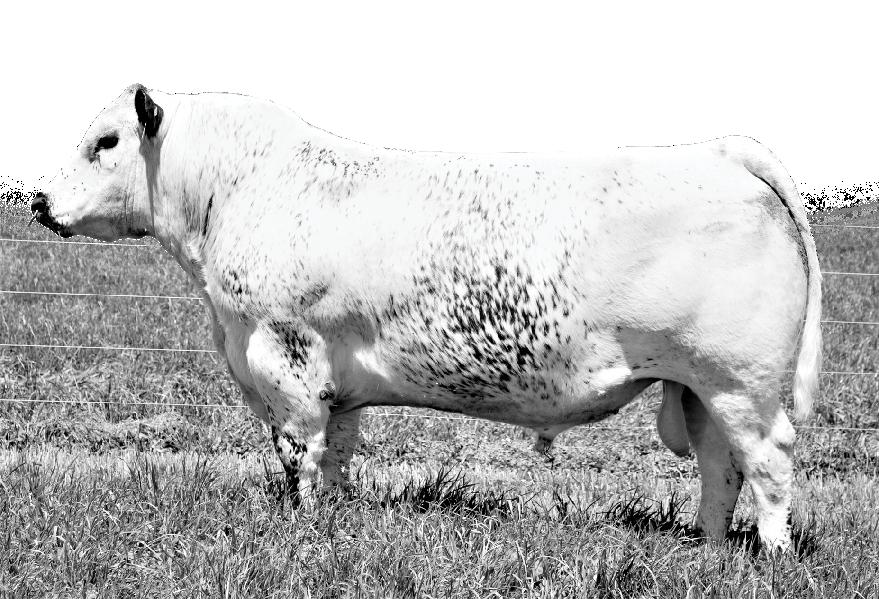



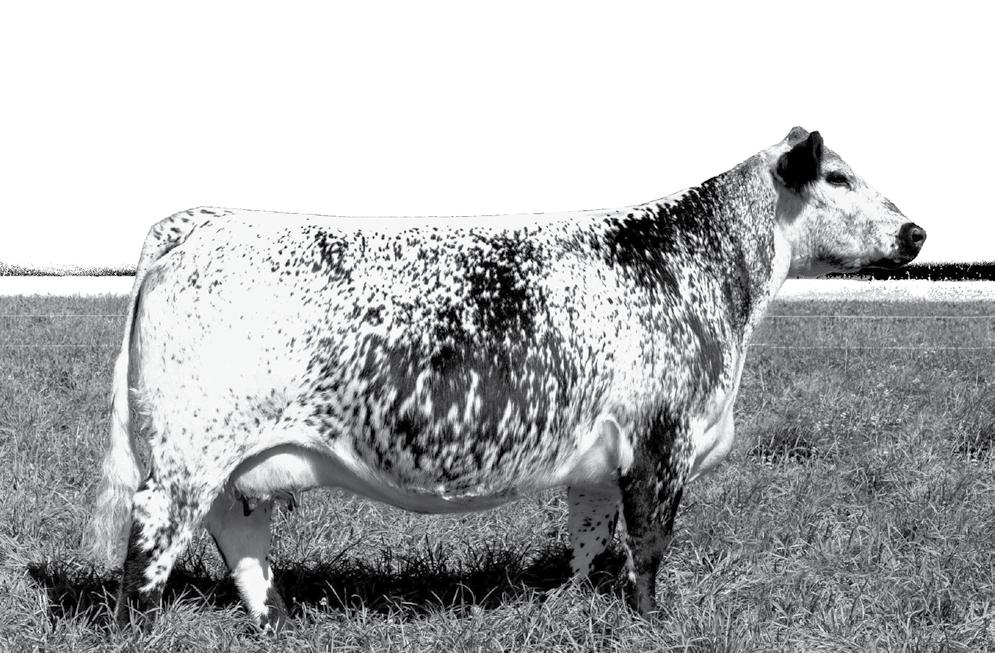
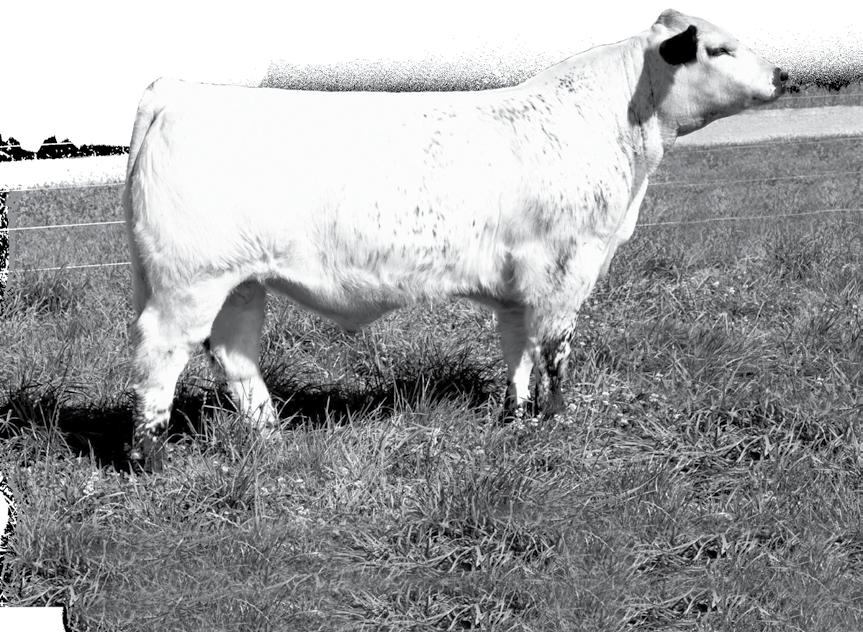

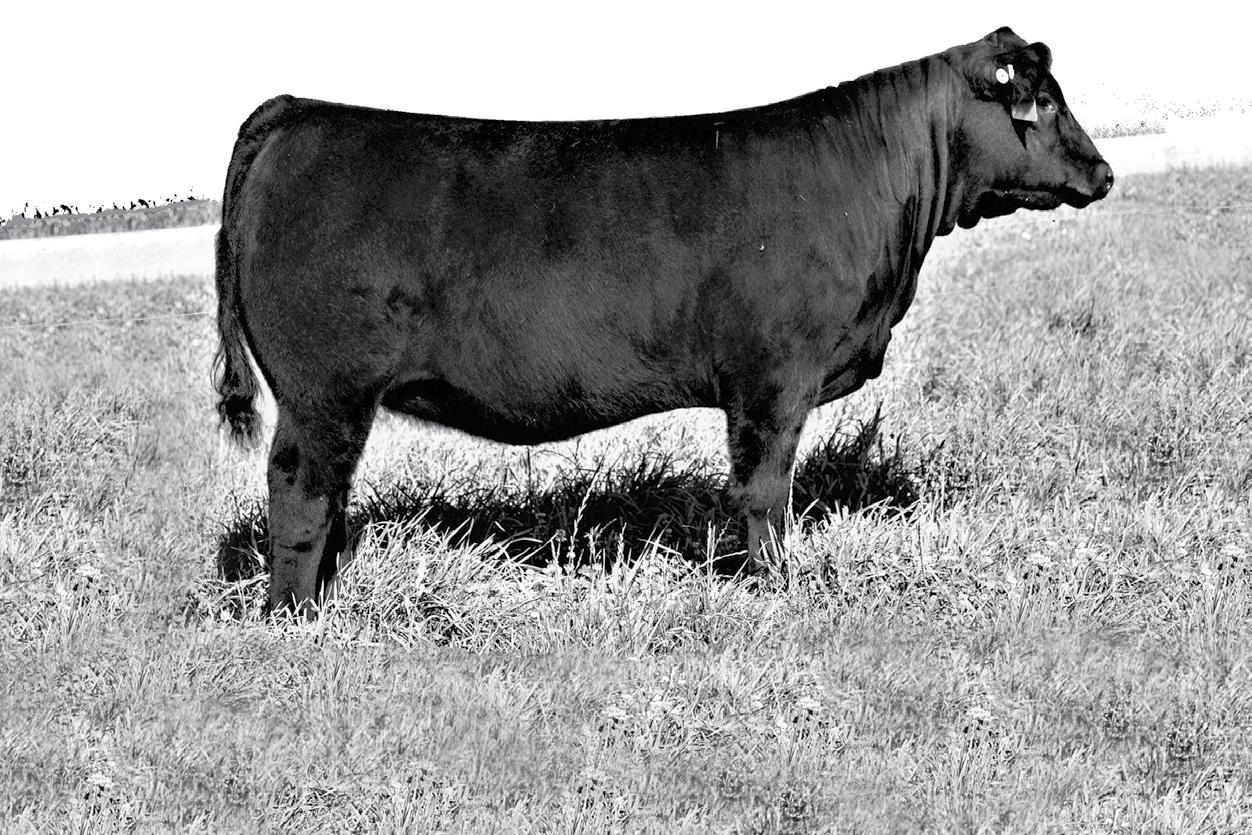
The Speckle Park breed is a Canadian success story and a source of pride for its home province of Saskatchewan.
A funny thing about Canadians, though—whether it’s actors, musicians, authors, doctors, or in this case cattle—Canadians can’t believe they’ve got something good until it gets noticed in another country.
The success of Speckle Park cattle in Australia has shown the Canadian beef industry, as well as domestic consumers, that this gentle, pretty cow has the potential to become a major force in the beef world.
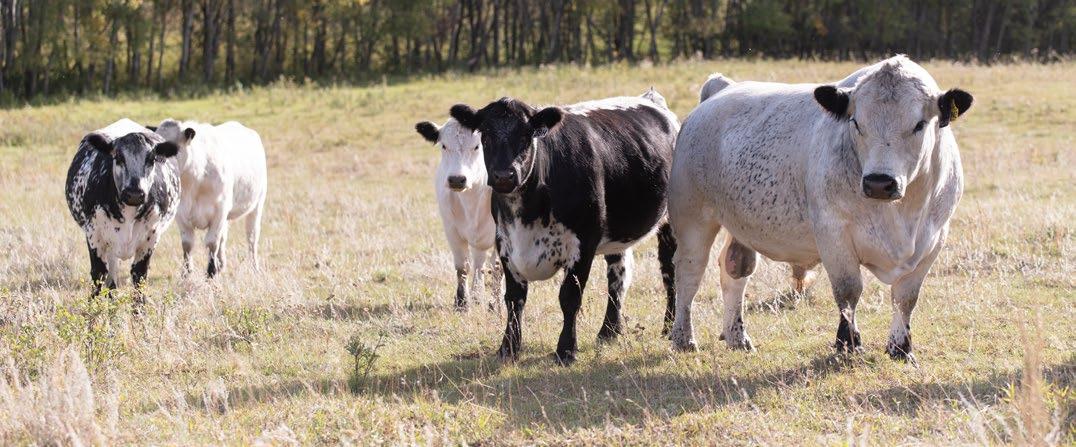
Dale Herbert of Neilburg, Saskatchewan remembers when Bill Lamont asked her and her husband John to winter his 15 cows in 1980, long before the breed was recognized. The 15 cows produced 16 calves, the best calving season Dale had ever seen. She was impressed with the Speckle Parks’ potential.
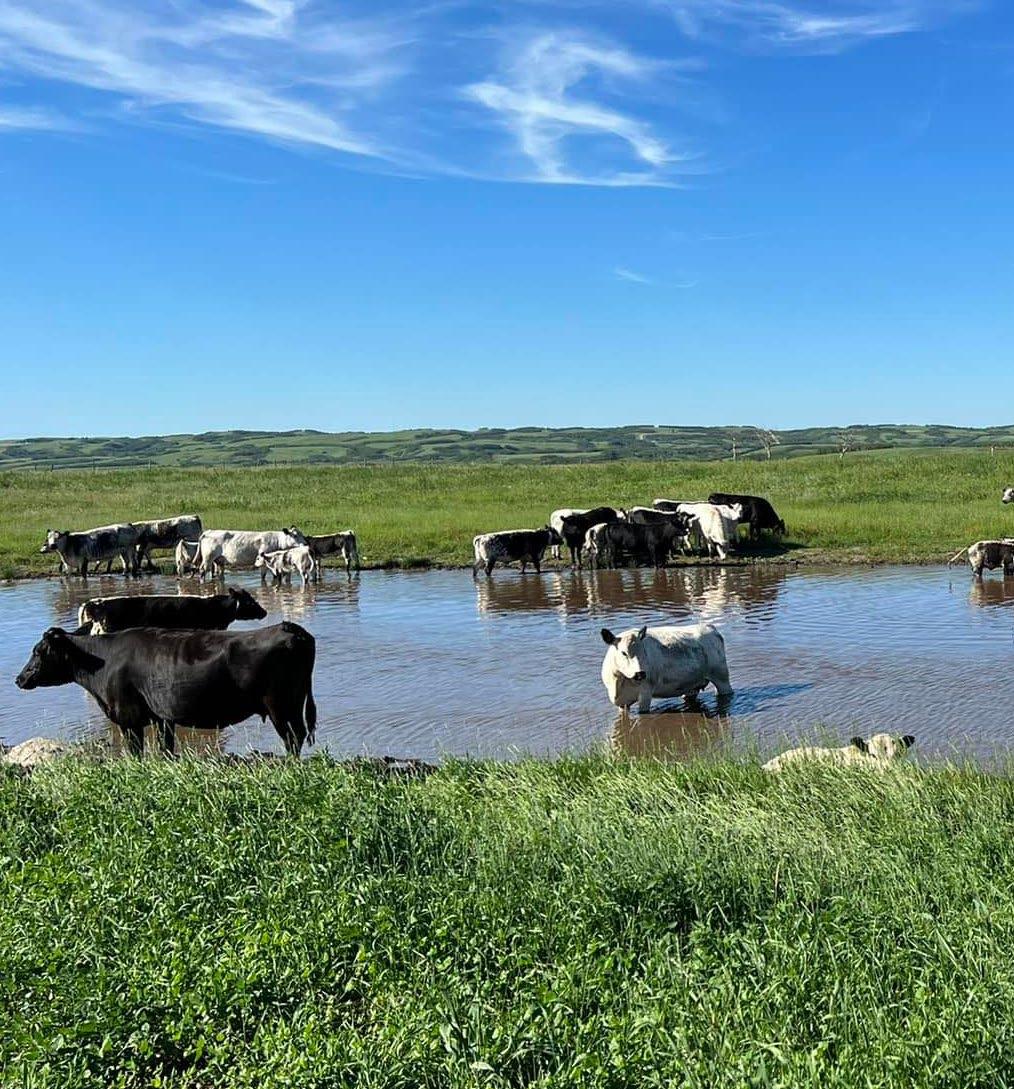
When a breed association was formed in 1993, John was the first president and Dale the registrar. In ten years the number of cattle grew to the point where Dale thought it best to hand over the registry to Canadian Livestock Records Corporation (CLRC).
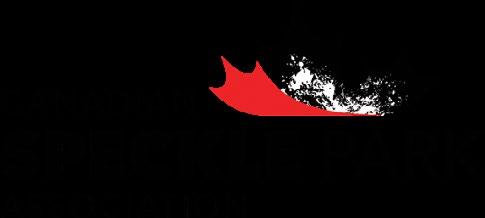
“Ron Black from Agriculture Canada came out to meet with us and he asked us who was doing our registry. The board members said well we did our own, and I was the registrar,” she recalls.
“And he said, ‘oh my goodness, you’re getting a lot of numbers there to be looking after it yourself.’ So he suggested it was time that maybe CLRC took over the registry, which they did in 2004.
“And then I just stayed on as CEO until 2006 when we became recognized as a distinct breed. I thought it was a good time to step down. We got to the stage we had been aiming at, so it was a good time to let someone else take over,” she said.
Because of the cattle’s size and temperament, they were a hit with young people raising them as 4-H projects. And while show judges seemed at first to ignore the different-looking animals in the ring, there was no mistaking the consistently high quality of their meat.
Dale said her Speckle Park steaks were hands-down “steak challenge” winners at the Camrose Bull Congress shows in Camrose, Alberta for several years.
Gary Kiziak raises the cattle on his operation near Ardrossan, Alberta, not far east of Edmonton. Before the breed was recognized in 2006, he says, “we were laughed at” by breeders of other purebreds.
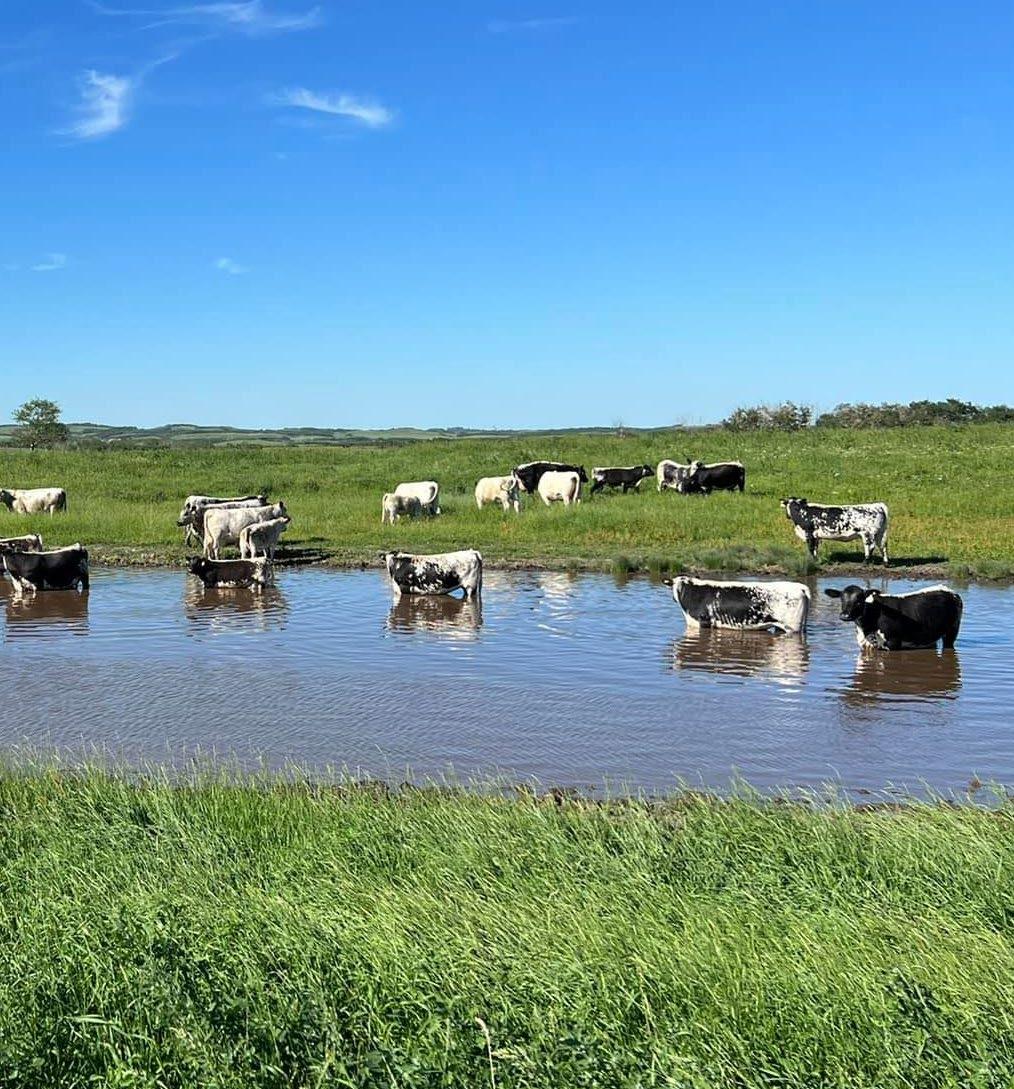
Breed status changed the game for Kiziak and set the stage for him to start selling genetics to Australia. He recalls going home after a Charolais International show in Edmonton where there had been people from Australia and Ireland in attendance.
While he and his son were cleaning out their truck, their phone rang displaying an Australia phone number. But Kiziak didn’t answer, dismissing the interest as just tire-kicking. After three calls, his son persuaded him to answer. They arranged a time for the callers to come out and have a look at the herd. They talked a bit about embryos, and Kiziak said he became more interested.
A month later, “I got two calls the same day,” he said. “One was from the Irish people saying, ‘hey, can we do some business now?’
“This is for real now. And then all of a sudden the phone rang again. It was Greg Ebbeck from Australia, and that same conversation took place. So that was our start.”
There remains a steady trade of embryos and genetics between Canada and Australia, and by most accounts the Australian herd is bigger than Canada’s. While the breed may be Canada’s gift to the beef world, Australia is playing a huge part in its spread.
“I believe the breed has grown with leaps and bounds. Brazil will be the next hot spot, there’s cattle on the ground in Brazil right now,” Kiziak said. “And the fellow who got the cattle on the ground in Brazil is an Australian from Wattle Grove. He’s put hundreds of thousands of dollars into getting these cattle into Brazil, it’s phenomenal.”
Among the Speckle Park’s many attributes is its tolerance for extreme temperatures. They thrive as well in Australia’s heat as they do in Canada’s cold.
Far from Dale Herbert’s experience of seeing Speckle Parks initially ignored in the show ring, or Gary Kiziak saying they used to be laughed at, Canadian Speckle Park Association (CSPA) president Janice Harasymchuk says they are now a mainstream breed with enormous potential.
It’s not just the growing recognition, she says, but the way the herd has developed over the generations.
“It’s phenomenal the advances that have been accomplished. This breed is progressing very, very fast and has become established,” Harasymchuk said. “When you attend a show, probably 75 to 80 per cent of the people that come internationally are coming to see the Speckle Park breed. It is that popular worldwide.”
Not long ago, she said, you would find maybe two good yearling bulls in a show ring. Now it’s not uncommon to see five or six. “The animals are just continuing to get better and better and better, and in a very short time. The breeders are doing a very good job and so is the association,” she said.
The breed is being introduced into new countries every year. A group within CSPA is seeking opportunities to sell embryos and semen in Argentina, and just recently an animal was sold to Germany. In the meantime, the CSPA is cooperating with international groups such as breed associations in Australia & New Zealand (Speckle Park International), the USA (American Speckle Park Association) and other countries to share DNA data.
“I’m super excited about this breed and what it can do,” Harasymchuk said. “Our goal as an association, besides collaborating with other associations, is to make it a viable option for commercial breeders and to introduce it into as many locations as we can.”
The CSPA, which had been run almost completely by volunteers, now has office space and staff. The association’s growth reflects not only the success of the breed but the growing needs of an expanding membership.
And so the Speckle Park is indeed a typical Canadian success story—ignored at home until it is celebrated abroad. But Harasymchuk says the Canadian beef sector will always see the Speckle Park as their contribution to the global beef industry.
“I would hope that it would, because it was established here,” she said. “But that being said, we do need the other countries too. We don’t want to take all the glory, I think we can share that.”
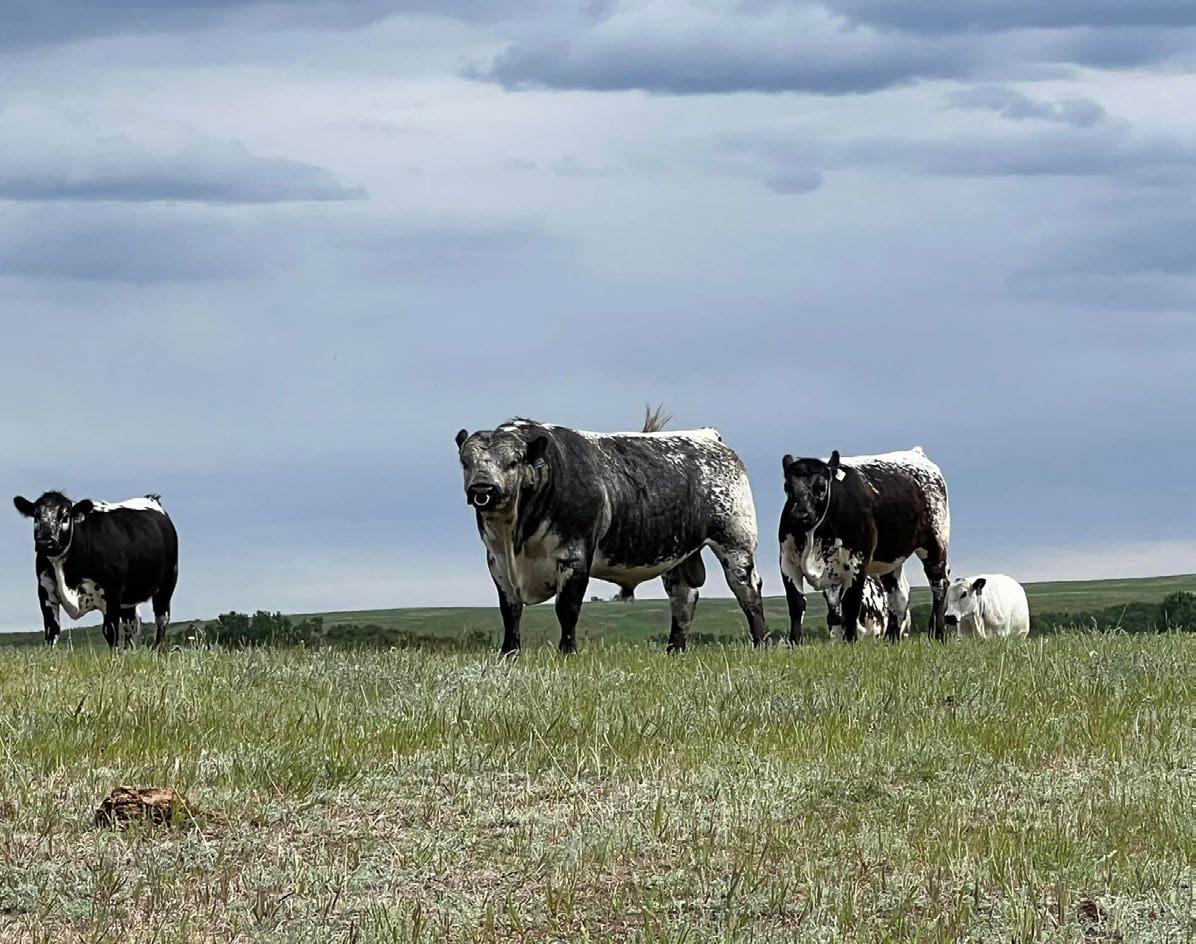
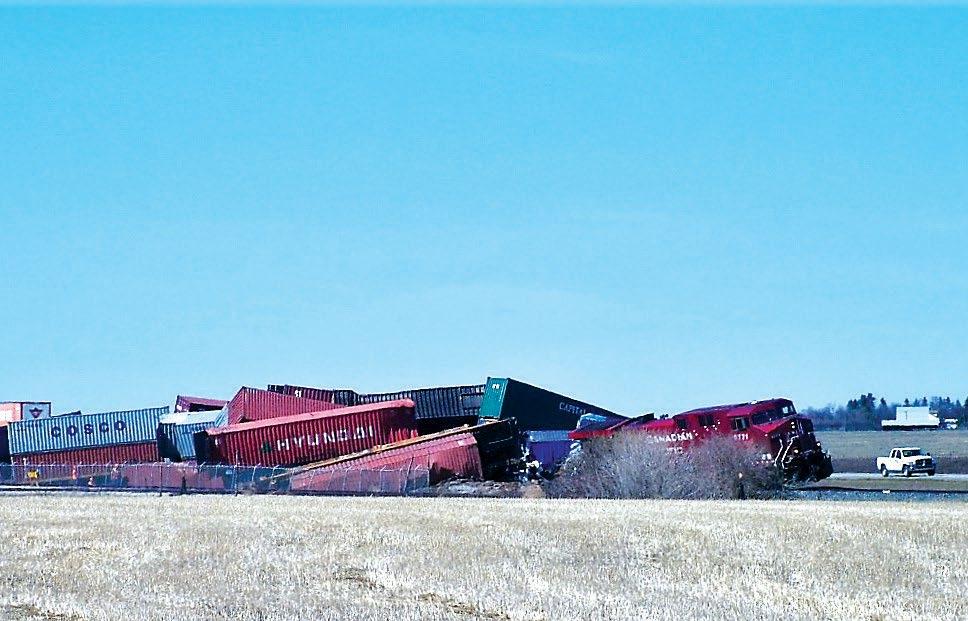
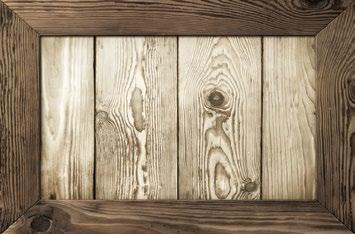

We are proud to have held 22 World Record priced individuals & Genetic packages since starting the Breed & SPI here in Australia way back in 2006. Equally as proud to have supplied the SEED STOCK & Genetics which have been the basis of scores of todays leading Speckle Park programs throughout the length and breadth of Australia. Our 2023 SALES will once again avail you the opportunity to start up in Speckles or add to your program with top end stock & genetics built on SOUND structured, PERFORMANCE oriented MATERNAL leading genetics that BREED ON which in turn have bred hundreds of Show Champions and Champion BREEDERS who have kept the breed on the RIGHT TRACK. Greg Ebbeck 0418 286 661 • Bundanoon NSW
Another record breakerSIX STAR ‘JUSTICE’ R10 the $100,000 world record priced bull.
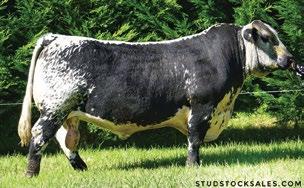
in Oklahoma City, Oklahoma January 4 & 5, 2023. For this event, the sale will be held on January 4th and will include Speckle Park top animals from the United States and Canada as well as semen and embryo entries. Following the sale, on January 5th an Open and Junior show will be held for ASPA current members from both the U.S. and Canada. Along with the show and sale, the association board will also host their annual meeting in conjunction with the event and it will be open to the membership.
Greetings from the American Speckle Park Association! Founded in 2021 by a dedicated group of cattlemen in the United States, the ASPA has seen a lot of growth and success in it’s first year of registering Speckle Park cattle in the U.S. Charter members Bob Harris, Ron Carty, Cole Keyser, Bill Hewat, Keith Kissee, and Cory Ducherer came together to form the Speckle Park registry in the United States. They knew the strength of this breed and the demand for quality cattle that would follow. This set of charter members serves as the current Board of Directors for the association and spend their days promoting the breed that they know and love.
This past year has come with its successes and challenges, as any new venture does. The association has officially hit the one-year mark for registering, transferring and DNA testing animals. As predicted by its charter members, demand for the cattle is high and membership is rapidly growing. The ASPA registry platform provides a user-friendly experience for members to not only submit performance and registrations, but to maintain and view all herd records as well. Collecting performance is an important task for every cattleman and the ASPA members are doing an excellent job building the performance database.
The ASPA Board of Directors is excited to announce the first annual association show and sale which will be held in conjunction with the Cattlemen’s Congress
American Speckle Park Association has teamed up with the services of the National Center for Beef Excellence and resides in St. Joseph, Missouri. The staff is always ready to visit with both active and non-members, answer questions and talk about Speckle Park cattle. We fully expect the growth and momentum to carry through 2023 and for many years to come.
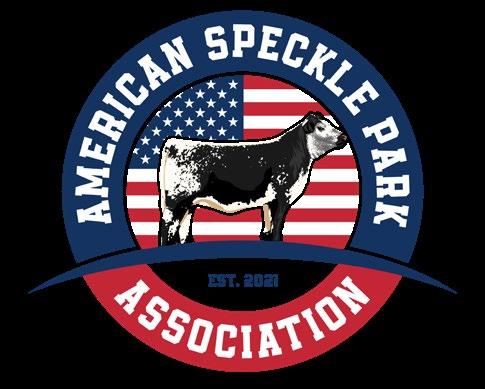
American Speckle Park Association www.americanspecklepark.com 3201 Frederick Ave, Suite 500B St. Joseph, MO 64501 (816) 652-2220
The American Speckle Park Association mourns the loss of Keith Kissee. Keith was known for his strong passion for the breed and his dive to see it’s success in the United States. A founding member of ASPA, a wealth of knowledge, and always willing and ready to talk about the cattle he loved. He is truly missed.

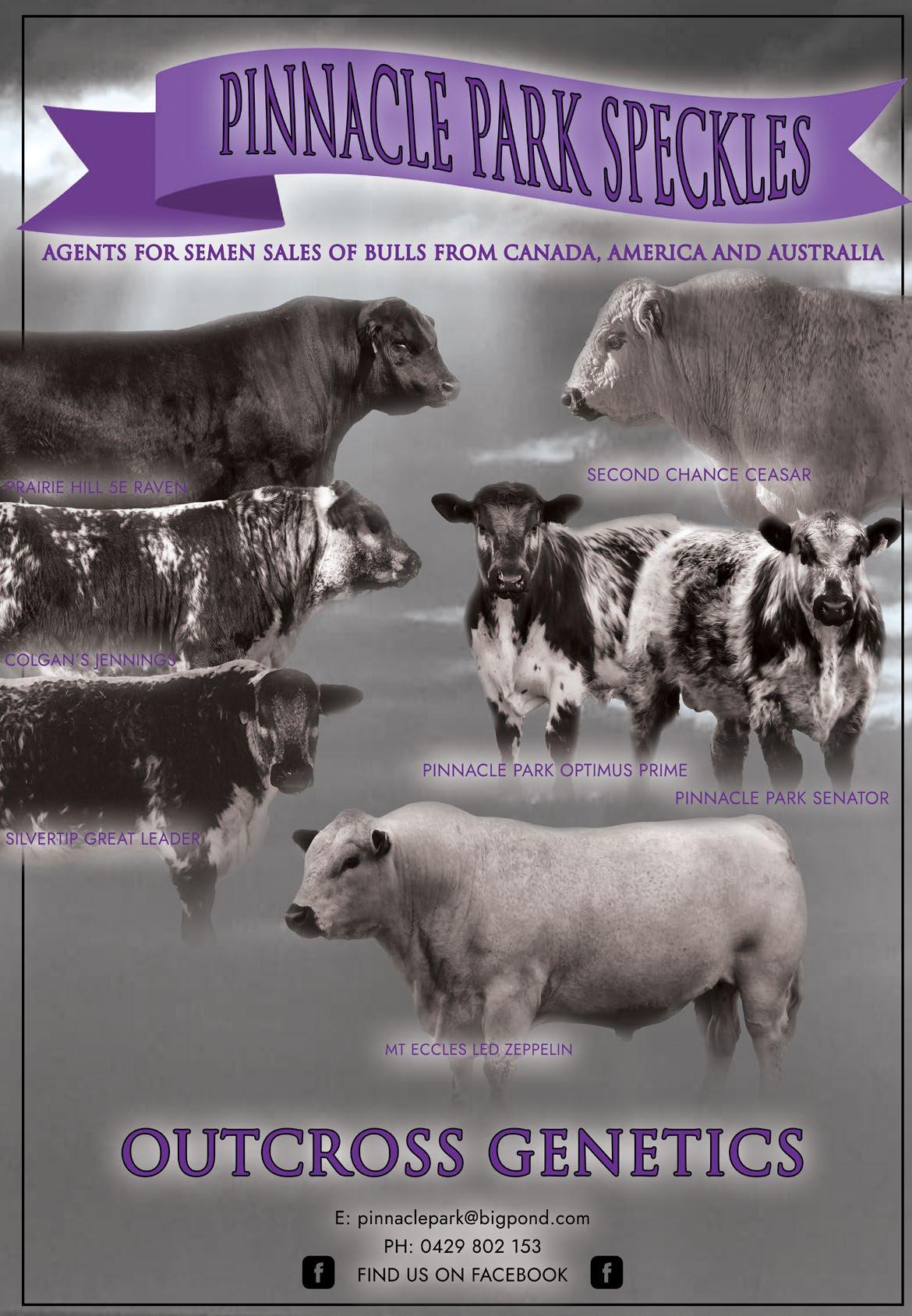
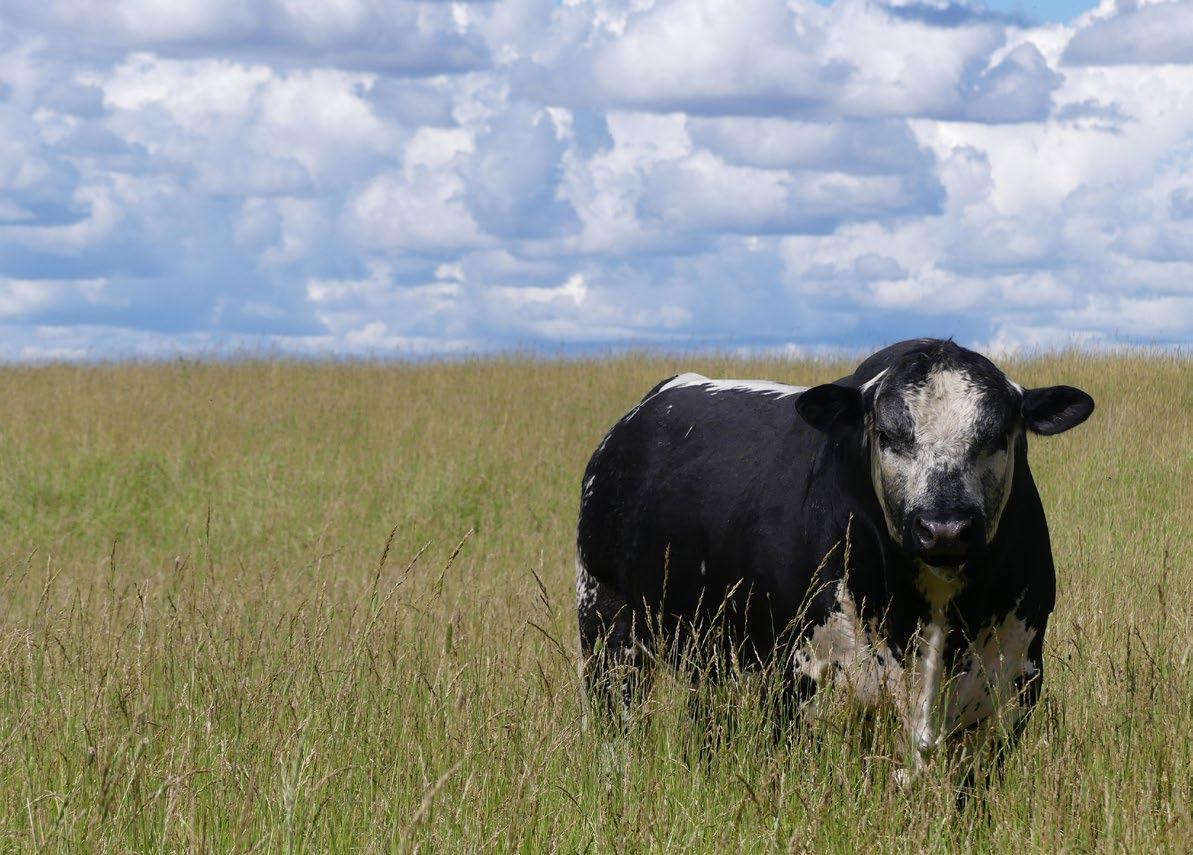
How many times have you heard an auctioneer say, “He’s all semen tested, and 70% on the morphology, anyway there buyers, kick him away there, $50,000?”. Magically, as if the agent has guaranteed the everlasting soundness and fertility of this bull, we jump into bidding because we like the look of this amazing young sire, and the agent said he is “70% on the morph”. Amazingly, this has became the “norm”, and not for one second does the agent or the average buyer fully know what “Morphology” is, nor what is the minimum percentage requirement or how to correlate the information to their breeding program, just the fact the bigger the percentage, the better he must be.
Whilst morphology is highly important, and I will outline further of its relevance, often the overall soundness evaluation of a bull is over looked by bull breeders. It’s just a case of wanting to meet the minimum requirements for a sale, and bull buyers not demanding greater information to assist with their decision making.
Some years ago, I was part of a pastoral company that adopted the “Australian Cattle Vets (ACV), Veterinary Bull Breeding Soundness Evaluation (VBBSE)” as part of their yearly bull purchasing and sire testing (pre-putting bulls out with the herd). The adoption of the VBBSE for all bulls prior to joining was brought about by poor herd reproductive performance.
A change in genetic diversity was introduced by purchasing 8 young bulls from the Dubbo bull sales. These young sires were selected and purchased solely on type and EMA information, without soundness evaluation. Therefore, on arrival to the station, these eight 2 year old bulls underwent the VBSSE.
When tested, 5 of the bulls had seminal infections, 3 passed motility, and only two of those 3 passed morphology. All bulls passed their physical examination, and on service ability, 7 of the 8 could physically serve a cow correctly, the 8th bull did a lot of mounting but was unable to actually service a cow. This bull, whenever in the position to thrust, would back off the cow. Even following a retest 2 weeks later, and after being out with females, this bull failed. Had all this information been available at the auction, clearly only 2 of the 8 bulls would have been purchased.
Honestly, it is a lucky dip without having something tangible to go by, and the VBBSE when conducted on your sale bulls, provides the best information for your catalogue, and for the buyer the reduced rick of purchasing a bull that could be sub-fertile.
Understandably, we all look for something different in the physiology of our bulls to suit our herd, and not all of us will agree on the choice of bull - just look at show ring judging and the varied opinions. This is all subjective and left to the eye, that is our individual choice, but it’s what you can’t see with the eye that produces the offspring, and too often we let our hearts rule our heads in this area.
At Beef Breeding Services, we collect and process a lot of semen at our collection centre in Rockhampton and our semen processing and testing laboratory in Brisbane. Not to mention the hundreds of bulls our vet soundness tests on farm, as well as our on-farm semen collection and processing service. We get to see it all, including sub fertile bulls that would not have passed a VBBSE.
So, what does a VBBSE consist of? Importantly, the ACV provides certification to their affiliated members, who have inspected and examined 500 or more bulls, passed both a theory and practical exam, the standing of an “accredited” VBBSE Vet.
A physical examination not only includes the structural soundness and appearance of a bull, but includes his tractability and gait, scrotal circumference, and an examination of the internal and external genitals.
Simple things such as a scrotal circumference are important, as under normal working conditions, a bull can lose 2cm in circumference in a 6-8 week joining period.
Why is this significant? Once a 2 year old bulls testicular circumference hits 28 cm, he can become sub fertile.
A crush side collection is taken by either electroejaculation (most common) or manual palpation, and then assessed under a microscope. By viewing the collected semen under the microscope, the vet is able to ascertain if the semen is viable to obtain fertilisation. During this assessment the vet evaluates the motility, which is the activity of the sperm, generally referred to as the swirl, and the progressiveness of the sperm. Colour and density of the collection is recorded as well as evidence of infections (Pus).
During the crush side assessment some morphological issues may be identified, however a detailed report provided from laboratory analysis is the only way to ensure the percentage of good viable sperm are present with minimal defective sperm. The AVA has determined through research that for a sample to pass their testing, it must have a minimum of 30% progressive motile sperm.
Through the use of a laboratory microscope, laboratory staff view the structure of the sperm cells to determine the percentage of normal sperm to the percentage of abnormal sperm in an ejaculate. This evaluation provides valuable information as to the viability of a sire to produce calves, to which the AVA have set standards for sire mating based on the percentage of normal live sperm.
>70% Single sire mating and Semen collection for AI >50% Suitable for multiple sire joining groups
Semen morphology is regarded as a heritable trait, and research has linked it to a number of key reproduction traits:
Indicator of bull fertility. Maturity and fertility of daughters. The ability of daughters to return to oestrus after calving.
As producers, by utilising this information in your breeding objectives, and identifying and using bulls of good fertility/morphology, you can reduce the anestrous period of your females, which can potentially increase the ability to have more calves born at the beginning of your calving cycle. Obviously seasonal conditions and animal health must be accounted for.
Depending on breed, it has been noted that 20-40% of bulls will fail a morphology test, therefore while a bull may pass a crush side motility test, he may fail a full VBBSE. A bull must pass both fertility tests to be deemed “fertile”.
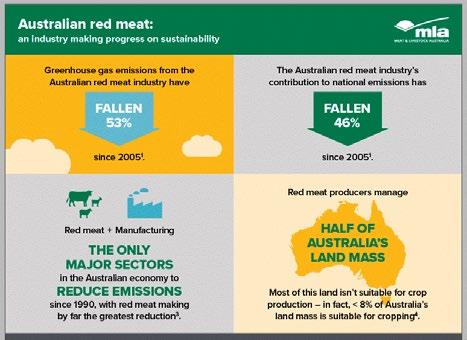
There are two terms related to this topic - “serving ability”, and “serving capacity”. I’d like to delineate between these, as animal ethics is of high importance to us all, and consideration must be placed upon how either can be achieved. Within the VBBSE, the serving ability component is often not applied, mainly due to the time required for the testing as well as the equipment for heifer restraint.
Serving ability, is best referred to as, “ensuring a bull can mount properly, penetrate and trust to ejaculate semen”. This can be simply done with a cow or heifer in heat. There is no need for restraints, but depending on the amount of bulls to be tested, the amount of females required may not be practical. The relevance of serving ability testing was evident earlier, as in the 8 bulls purchased, one bull was able to mount cows repeatedly, but unable to penetrate and trust to deliver the semen into the vagina. If this bull had been noticed in a paddock mounting without testing, highly likely he would be considered as a high worker, until the pregnancy test results came in at a later date.
Service capacity is “the study of how many times a bull serves over a given period of time”, namely a ten or fifteen minute period. As an example, one service by a bull in this period, would indicate a low capacity bull that could be mated to 25 cows. A bull
a bull serving 5 or more times in that period are regarded as high capacity and capable of covering 75 cows. To conduct this testing, females not cycling are used, and need to be restrained. Therefore, it is rarely utilised and impractical under general circumstances.
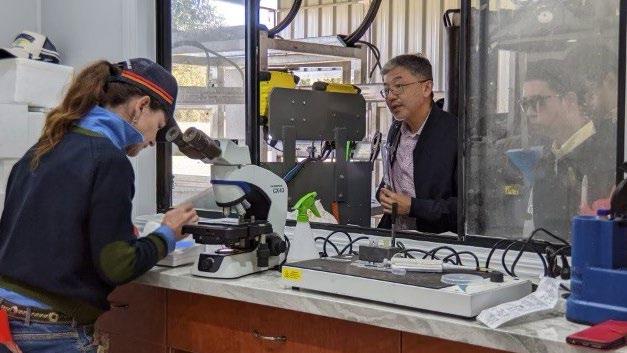
With consideration to the above explanations, producers can do simple testing of their own to help ensure their sires are sound. Utilising synthetic prostaglandin, cycle some females of each joining mob for when the bulls first go in. This is a simple way to take a little time to watch your sire serve and for you to be confident he will remain sound post serving. In my experience, it’s just not selling or buying a bull where this information is useful. Results from sire testing by the pastoral company previously mentioned, they identified 2% of their herd sires to have serving issues annually, generally these issues were due to the onset of arthritis. It is important to mention that some of these sires showing arthritic signs, were as young as 3 years old. These younger sires were loosely identified as the ones that had been finished on high grain rations for sales.
There is no exact science of a good bull vs a dud, or which one will have the most profound effect on your breeding - sometimes it is trial and error. Generally, we place a high focus on EBV’s to seek the traits we require to suit our objectives. As for fertility, we just buy a bull and put him out for joining, expecting
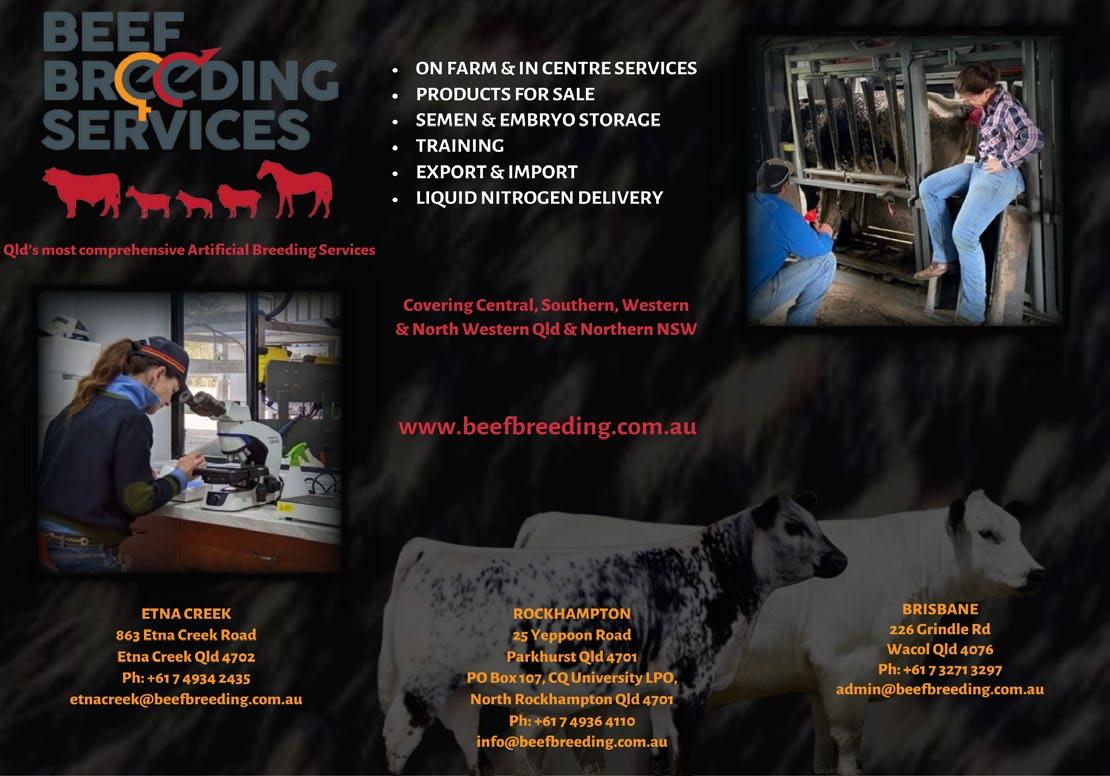


Good teat and udder quality are essential to the functionality of cows, particularly in commercial operations. With any impact to cow functionality equating to lost time and money, the importance of these traits should not be underestimated.
While significant focus is placed on a cow’s ability to produce milk, the delivery system is every bit as critical. Newborn calves who experience difficulty drinking due to poor udders and teats can be detrimentally affected by little or no colostrum intake and otherwise have their growth and overall health impacted by reduced milk consumption. Ultimately, poor teats and/or udders require human intervention to not only ensure the calf survives and thrives but often to also assist the cow in fending off or overcoming infection (i.e. mastitis) that may be directly attributable to these traits.
As research has revealed, udder and teat characteristics are hereditary, and positive changes can be made through considered selection. Increases in teat and udder quality can be achieved through the use of bulls who routinely produce daughters with high teat and udder quality and by culling those that don’t meet these specifications, and acquiring females that are positive for these better traits. While culling based on udder characteristics may be viewed as convenience or even cosmetic trait selection, ultimately, increasing the udder quality within a program will result in increased longer-term profit due to increased calf health and performance, increased cow health and longevity with fewer burdens on labour and management resources.

Routine scoring can prove a useful tool in this important aspect of any cattle program. Both udder and teat characteristics should be reviewed within
24 hours after calving to assess the overall quality of the milk delivery system. Scores recorded should be based on the weakest quarter of the udder being reviewed:
Assessments are made of udder support with scores ranging from 1 (very pendulous) to 9 (very tight). Poor udder suspension indicates a lack of ligament support which can result in the udder increasingly hanging further away from the body making it difficult for a calf to drink and potentially resulting in injury to the udder or teats.
Assessments are made of teat circumference and length with scores ranging from 1 (very large and bulbous) to 9 (very small). Teats that are either too large or too small create difficulties for calves to nurse, impacting on the intake of colostrum and milk.
An example of uneven quarters and bottle teats
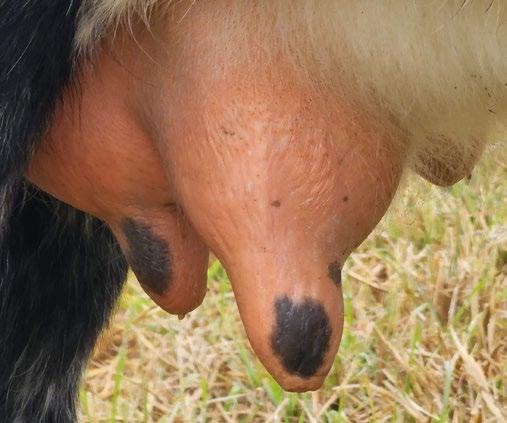
For both traits:
Ideally a cow will score in the middle of the range for both udder suspension and teat size.
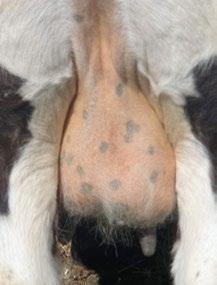

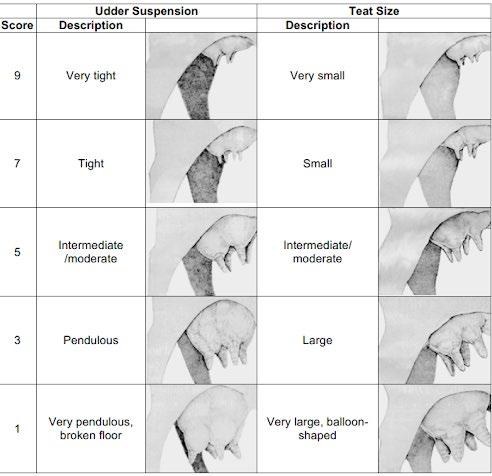
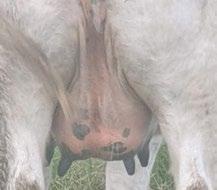
A score of 4 or 6 represents a small variation from the ideal, but is consistent with most animals;
A score of 3 or 7 shows a larger deviation from the ideal however, may be considered acceptable in some commercial breeding programs. Seedstock producers may exercise greater caution within this score range;
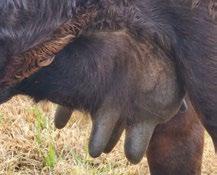
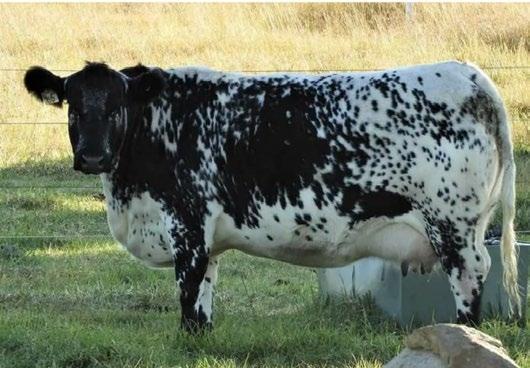
A score of 2 or 8 is considered poor. Careful consideration should be given to retaining an animal within this score range for breeding purposes;
A score of 1 and 9 would not be considered acceptable to be retained for breeding purposes.
price within his 1st breeding season ”

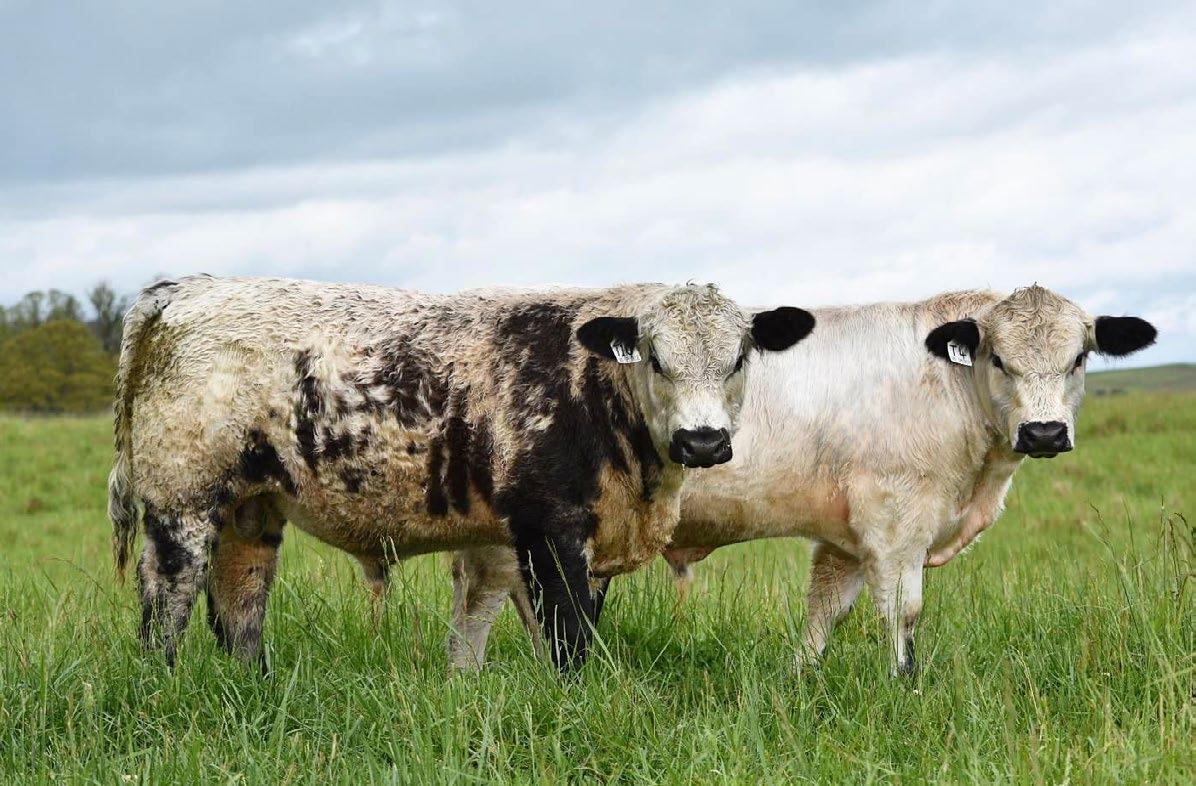
Purchase price of Bull Weight of calves & price/kg at time of sale

$8,000
$10,000
$15,000
$20,000
$25,000

$30,000
Total price per calf Total number of calves to sell to recoup purchase price
250kg @ 645 c/kg $1,612.50 4.97
300kg @ 585 c/kg $1,755.00 4.56 350kg @ 515 c/kg $1,802.50 4.44 400kg @ 495 c/kg $1,980.00 4.04
250kg @ 645 c/kg $1,612.50 6.05 300kg @ 585 c/kg $1,755.00 5.70
350kg @ 515 c/kg $1,802.50 5.55 400kg @ 495 c/kg $1,980.00 5.05
250kg @ 645 c/kg $1,612.50 9.30
300kg @ 585 c/kg $1,755.00 8.55 350kg @ 515 c/kg $1,802.50 8.33 400kg @ 495 c/kg $1,980.00 7.58
250kg @ 645 c/kg $1,612.50 12.41 300kg @ 585 c/kg $1,755.00 11.40 350kg @ 515 c/kg $1,802.50 11.10 400kg @ 495 c/kg $1,980.00 10.11
250kg @ 645 c/kg $1,612.50 15.50 300kg @ 585 c/kg $1,755.00 14.25
350kg @ 515 c/kg $1,802.50 13.87 400kg @ 495 c/kg $1,980.00 12.63
250kg @ 645 c/kg $1,612.50 18.61
300kg @ 585 c/kg $1,755.00 17.10 350kg @ 515 c/kg $1,802.50 16.65
400kg @ 495 c/kg $1,980.00 15.16

JACKUNGAH QUIET ACHIEVER (AI) (P) (LEOPARD) HOMOZYGOUS POLLED RGF, NT821F
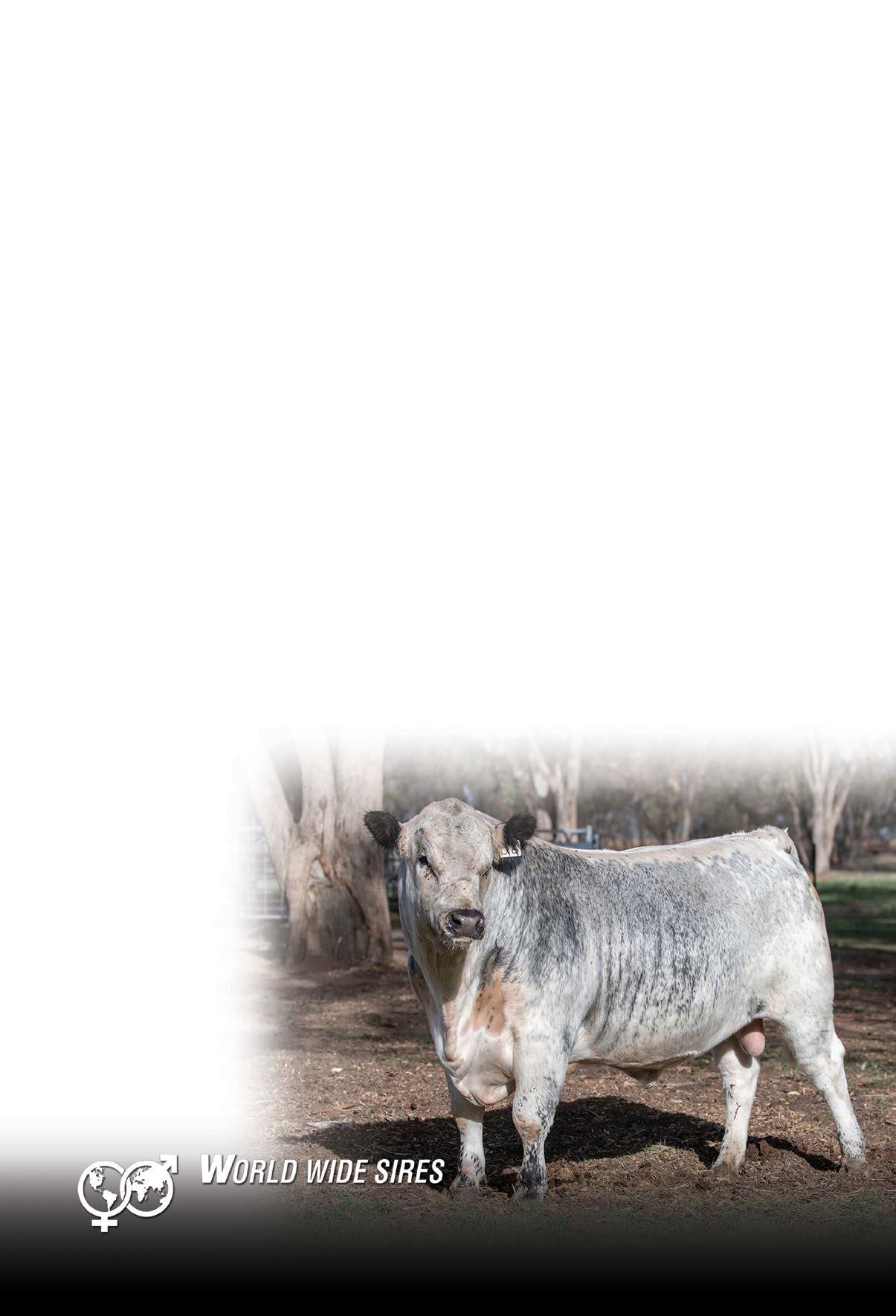
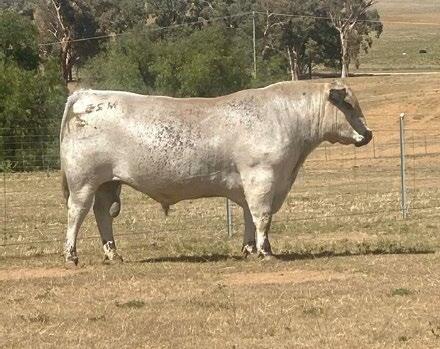
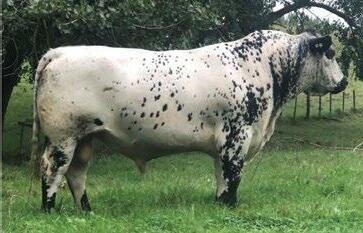
MAUNGAHINA
NEON (P) (WHITE)

• Son Premier Magnus R4 Topped Premier Bull Sale 2021
• Top 10% Scrotal sire, to improve fertility in your herd
RRP
MONTEZUMA M25 (AI) (LEOPARD) HOMOZYGOUS POLLED RGF, NT821F
MINNAMURRA
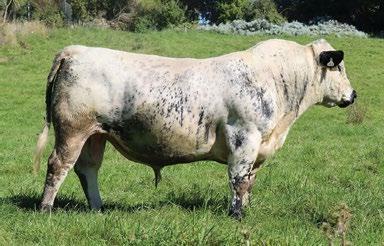
POLLED RGC, NT821F
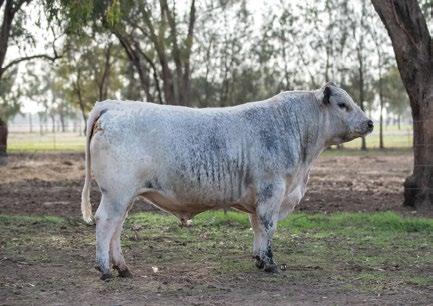
• Semen sold for $500/straw at Maungahina Bull Sale 2022
• Stamped the breed like no other for IMF% at 2.4% highest bull in the breed for IMF, nearest bull is 1.7%
$400 RRP
RAMBO: we call him Game Changer. Short gestation,
Please tell us a little about yourself. (Age, other family members, location and are you currently still at school and if so what year, what are your interests for the future)
My name is Sophia, I’m 15 years old, completing year 9 in school. I live in Muswellbrook NSW with my Mum Jess, brother Lachlan, my dog Taz, my horse Comet and my heifer Randy. I grew up with horses and ever since Randy made her way into my life I’ve had a passion for agriculture and training animals. I also love drawing and design which led me to my own clothing line ‘Speckles Chose Me.’ I hope to combine all my passions by continuing to grow my business JSL Livestock and Design by offering more opportunities for logo design, clipping/fitting/showing and photography in the future.
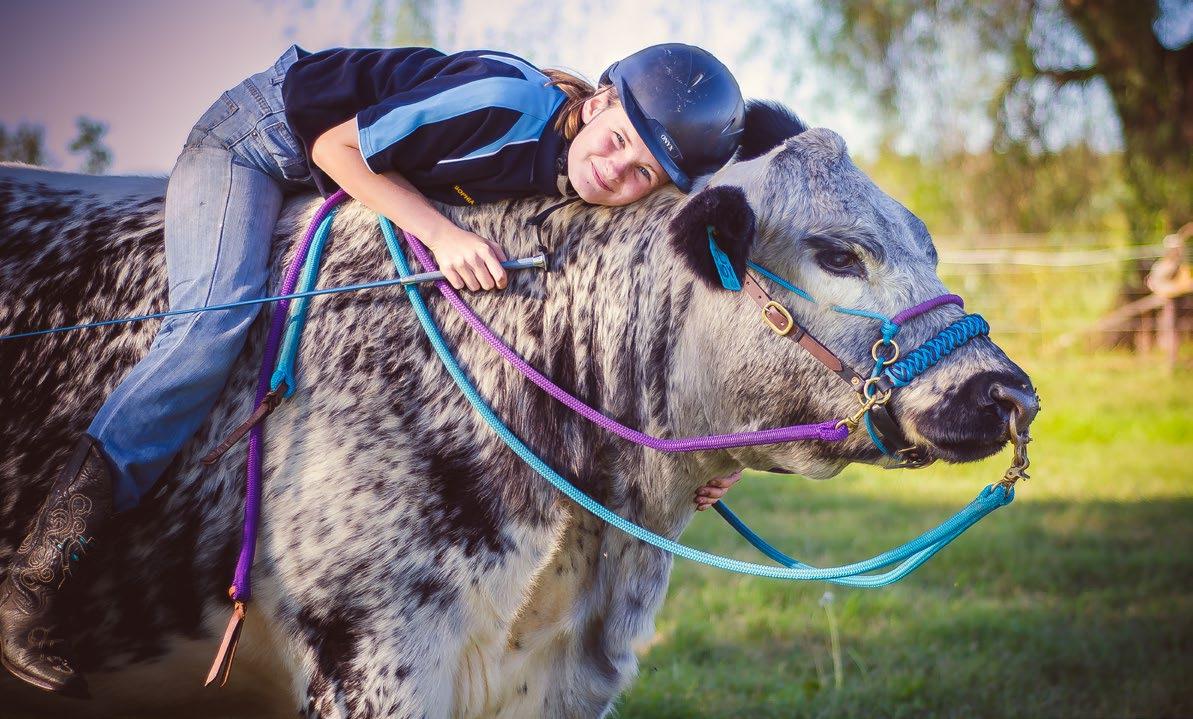
What initially attracted you to Speckle Park?
I didn’t really ‘choose’ Speckles, Speckles chose me! It was never really planned we hadn’t had any cows of our own at the time and agreed to buy a bull for the partner mum had at the time. The partnership fell through, and we bought the bull home. The decision was to buy a stud heifer of our own. We short-listed 3 heifers. Randy was one of these 3. When I saw her, something clicked and I convinced my mum that ‘yes, she’s definitely the heifer we need!’ It wasn’t really until I had seen Randy that I became serious about working with cows. As I spent more time with her and learned more about cattle and breeding, I found Speckles were just right for me.
I love the idea of quiet cattle so in the beginning it was just Halter training and we didn’t really think anything beyond that but I was really dedicated to spending time with her. During the drought we would let her out to graze (while still on the halter) and I’d lean over her back as she ate, moving with her. She grew on me. It had turned into a joke really, that she was so quiet, I’d be riding her next. We had sold the bull after losing our rental so all my time was spent with her as our only cow so when her breeding career didn’t work out I couldn’t imagine just letting her go, I felt there was something special about her. The joke set a fire in me and I decided I had to at least try to ride her and give her a different purpose. It just grew from there!
Randy just turned 4 years old! She is out of SIX STAR RENDEZVOUS D27 and by SPOTS AND SPROUTS STANDS ALONE 300X. She’s a total ‘Diva’, she’s quiet and calm and, honestly, I could trust her with my life most of the time and yet she still has a way of strutting around with a ‘holier than thou’ attitude! Mum always says Randy is constantly doting on me and only has eyes for me. She can still be very stubborn and respectfully lets you know when she doesn’t like something and she always thinks she’s hungry. She laps up attention and acts like it’s what she deserves.
What sorts of things have you taught Randy to do, how long did it take to teach her, did she find any of those things particularly challenging or easy?
I’ve taught Randy everything from leading to long reining and riding. She knows about the same things a horse her age would know. She picks things up quite quickly, however, the most challenging thing would be when she decides she has other ideas. You can’t force a 750+kg cow to do anything they don’t want to! Like when she puts all her weight on the foot I’m trying to pick up. When working with cows youfunnily enough-have to be more stubborn than an actual cow.
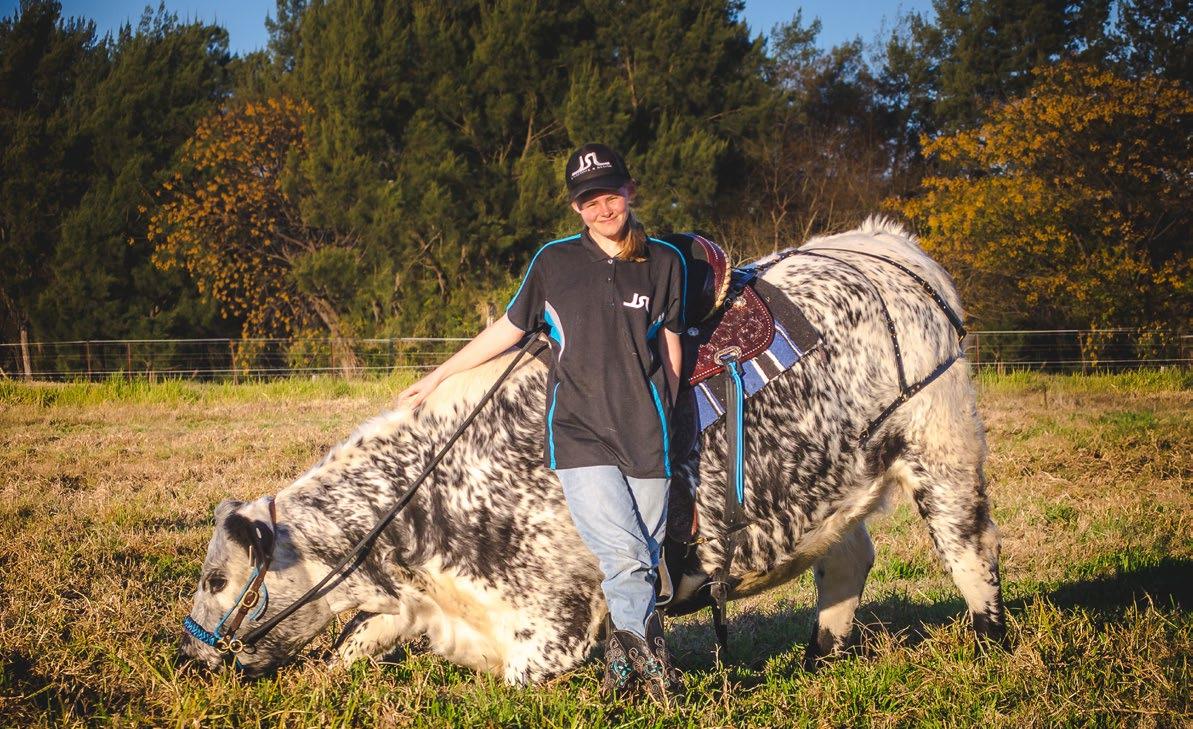
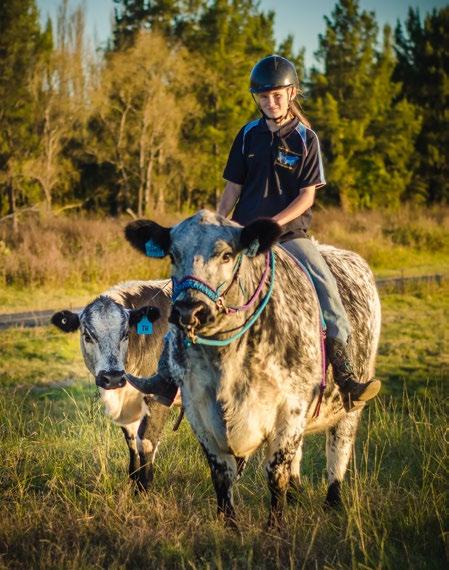

When Randy came off the stock trailer 3 years ago, you couldn’t touch her. She was quiet, yes, and would let you within a meter radius of her but she wasn’t a pet or show cow. She was just any other heifer out in the paddock. Now I have people asking whether she was raised as a poddy calf and are surprised when I tell them she wasn’t. But perhaps the most rewarding thing about training her was giving her such a unique purpose that she would have never had that we can share with everyone. It really has taken on a life of its own! Whenever I ride her out near the road or in town people’s faces just light up! I love that she has become such a unique cow in her own way. I find it so rewarding that she makes people’s day, including mine.
“You can’t force a 750+kg cow to do anything they don’t want to!”
Is there much of a difference between riding horses and cattle? (ie slower/faster/more comfortable etc), was it hard to find equipment to fit Randy?
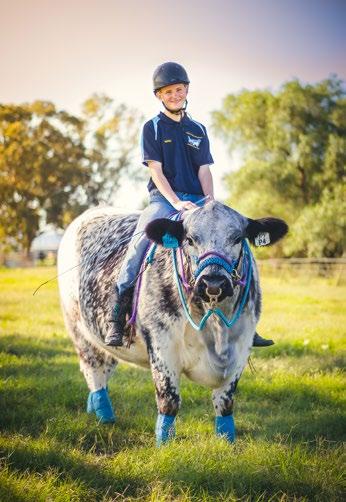
Honestly, I could write a book about the differences/similarities between horses and cows. I much prefer riding Randy to my horse Comet, she’s a lot more comfortable (at least in my opinion), almost like a lounge chair. The movements are more exaggerated due to the size of her shoulders and there’s not much stopping you from flying over their head. Cows are always going to be a bit slower than horses but they still keep up as best they can. Cattle are a lot safer in the regard of trail riding and temperament as they tend to think before they react, while horses are more likely to react first. Cattle are definitely less prone to spook. Our horse still spooks at traffic after 15 odd years of work and training whereas Randy doesn’t bat an eye after only a couple months.
It took us some searching and experimenting to know what we needed equipment wise. After some research I had found I had to import a treeless barrel saddle as I couldn’t find any in Australia. There still were some challenges to combat her round and flat figure and still found I needed a breeching strap. I was lucky enough to have mum, who has made rope tack (Jesskah’s Rope Tack) for some time to custom make to my request (with some sweet talking) my bridle, reins, breeching strap and breastplate.
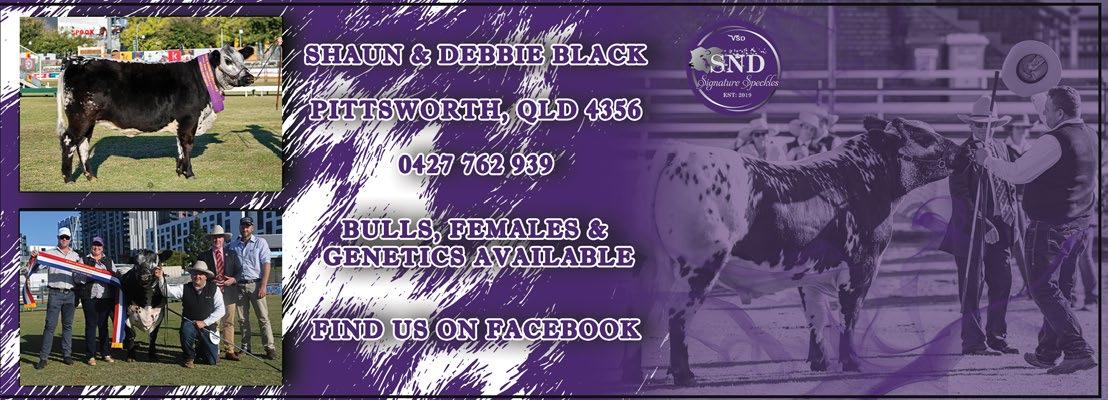

What are your future dreams with Randy and/or other Speckle Park cattle?
In the near future I’d like to do performances with Randy to save money for our own property so I’m able to get more cows, as we are currently only agisting. Later on, I’d like to start my own stud and training center. I’d like to breed cattle that perform well all around. Breed well, work well and produce high quality hide, milk and meat. I want cattle that can be used to check a fence line or cart supplies when they aren’t breeding. Why muster cattle when you can hop on the lead cow and go for a ride down to the yards? I don’t want to raise ‘pets’ I want to breed and train efficient animals for work, performance and pleasure.
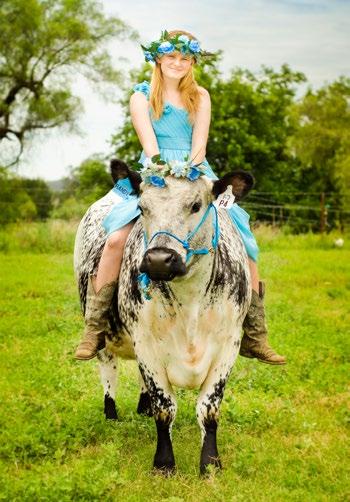
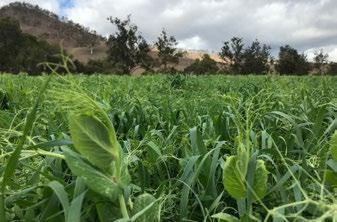 Written by: Brendan McGee, Agronomist, Elders Beaudesert
Written by: Brendan McGee, Agronomist, Elders Beaudesert
Over the past year the cost of production has increased due to factors off farm, like a drought that causes the price of grain and fodder to increase to prices never seen before; covid causing disruption in the supply chain; or a foreign war causing uncertainty around fuel and fertilizer supply causing once again prices to spike, all things which the Australian farmer has no control over. What if you had better balanced pastures that could minimise your exposure to these events? The growth of regenerative agriculture over the past decade has been enormous and is now considered mainstream to the point that most people have heard of the term but perhaps aren’t sure what it actually means.

A quick definition of Regenerative Farming is “Farming techniques and methods of land management that are designed to restore soil productivity by measures such as crop rotation, planting ground cover,
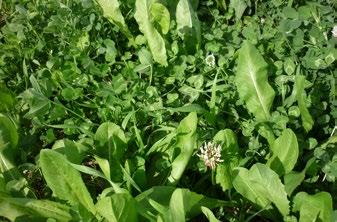
protecting the surface with mulch, and reducing the input of synthetic chemicals and mechanical compaction”. In other words - getting the most out of your biggest and most consistent asset on your farm - the soil.
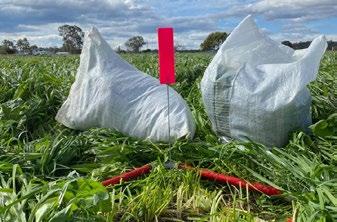
So, what things can you do to make these systems a reality on your property? There are a lot of simple ways that you can make better use of your grazing pastures like the use of fencing to improve pasture utilisation to stop stock from preferentially grazing pasture and wasting feed by walking it in. Pioneer Regen grazier, Gabe Brown says you need a balance - “You want to use two thirds of the pasture for the critters above the ground and a third for the critters below” meaning, you want to feed the soil biology as well as the animals that are grazing the paddock.
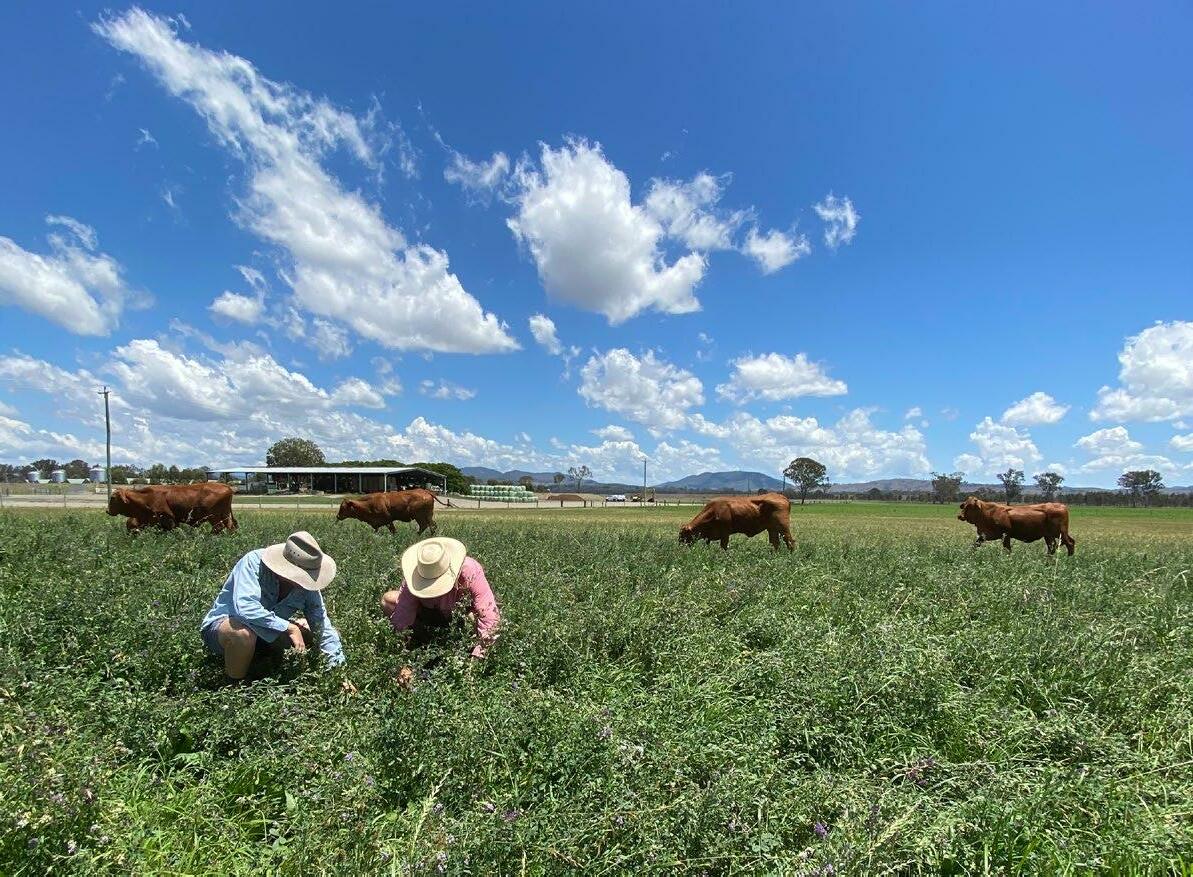
“You want to use two thirds of the pasture for the critters above the ground and a third for the critters below” - Gabe Brown
The diversity of pasture species is important to soil biology as well as production. The pastures we create for clients are made to suit specific needs of their production system; for example, the use of turnips to build soil and break up soil compaction or including legumes that fix nitrogen into the soil. During the drought these pastures were out-yielding other pastures in dry matter but also, they were able to still achieve good weight gains with little to no additional water from irrigation. When it was dry, the use of pastures with herbs like Chicory and Plantain had higher protein levels that worked well with the low protein hay that was being feed at the time.

The biggest pushback that we get when doing these types of mixes are the initial costings to plant the mixed species in comparison to a standard monoculture crop like oats and barley. Initially these pastures tend to be more expensive however, they also persist for multiple years following establishment and last longer than 6 months unlike traditional pasture species. In most cases the cost of these pastures is usually close to the same as 2 seasonal plantings. One main benefit with using perennial pastures is that they regenerate from the seed that is dropped in the previous season. Therefore, reducing the cost of seed, labour, and overall running costs.
There are so many advantages for both soil and animals from using Regen practices and more pasture diversity.
If you would like more information about anything or to talk about what would suit your grazing systems, Brendan can be contacted via: Mobile - 0422 317 828 and Email - brendan.magee@elders.com.au

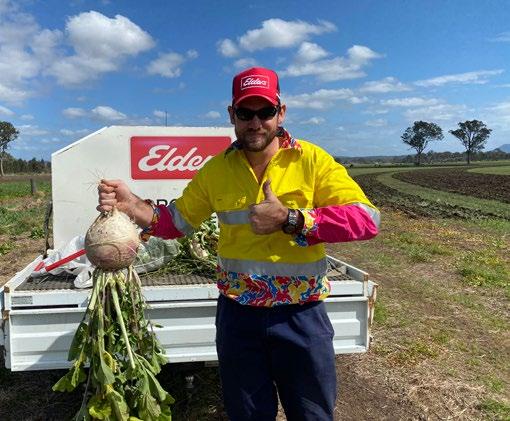
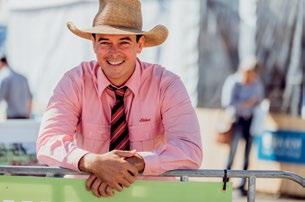
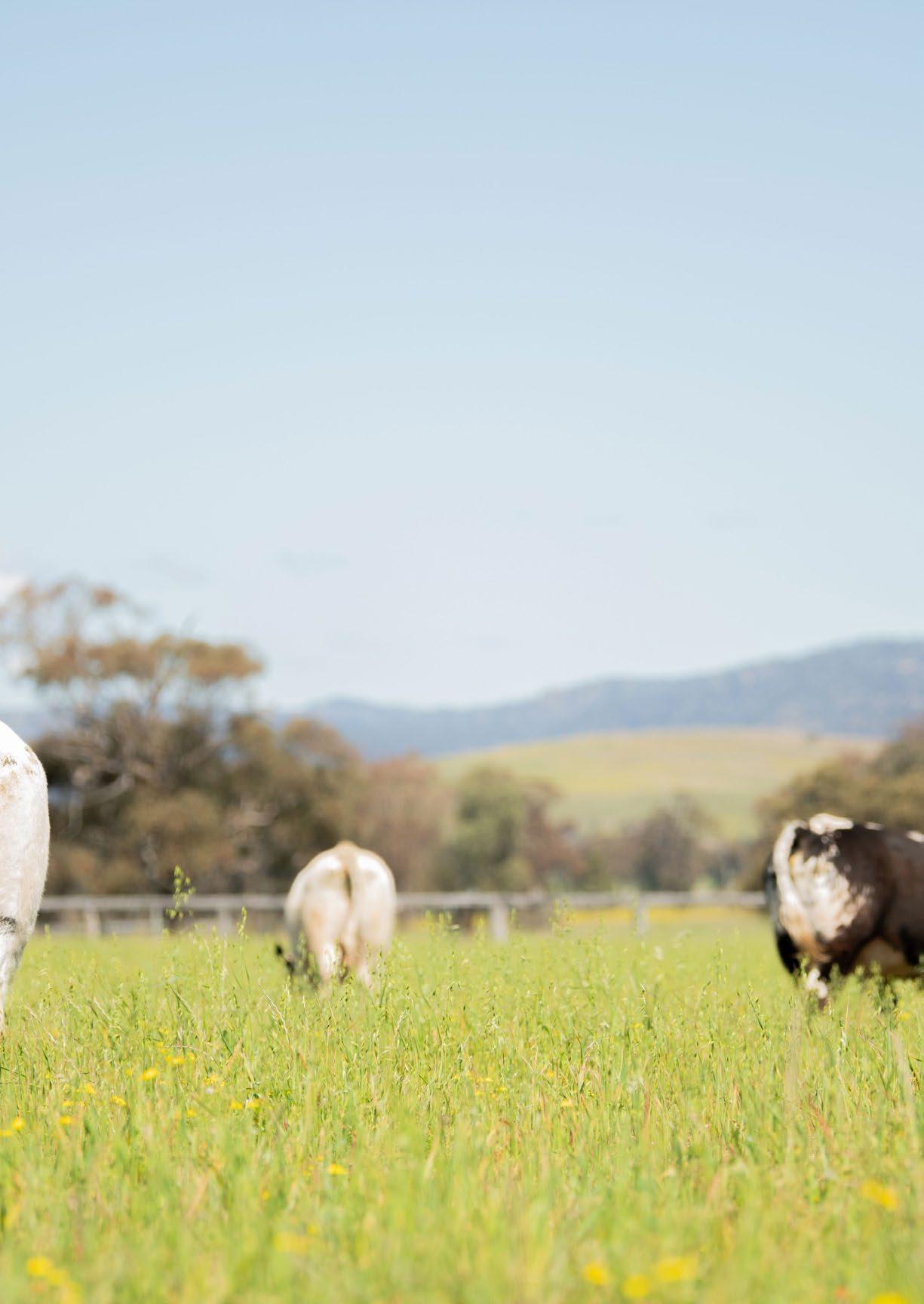
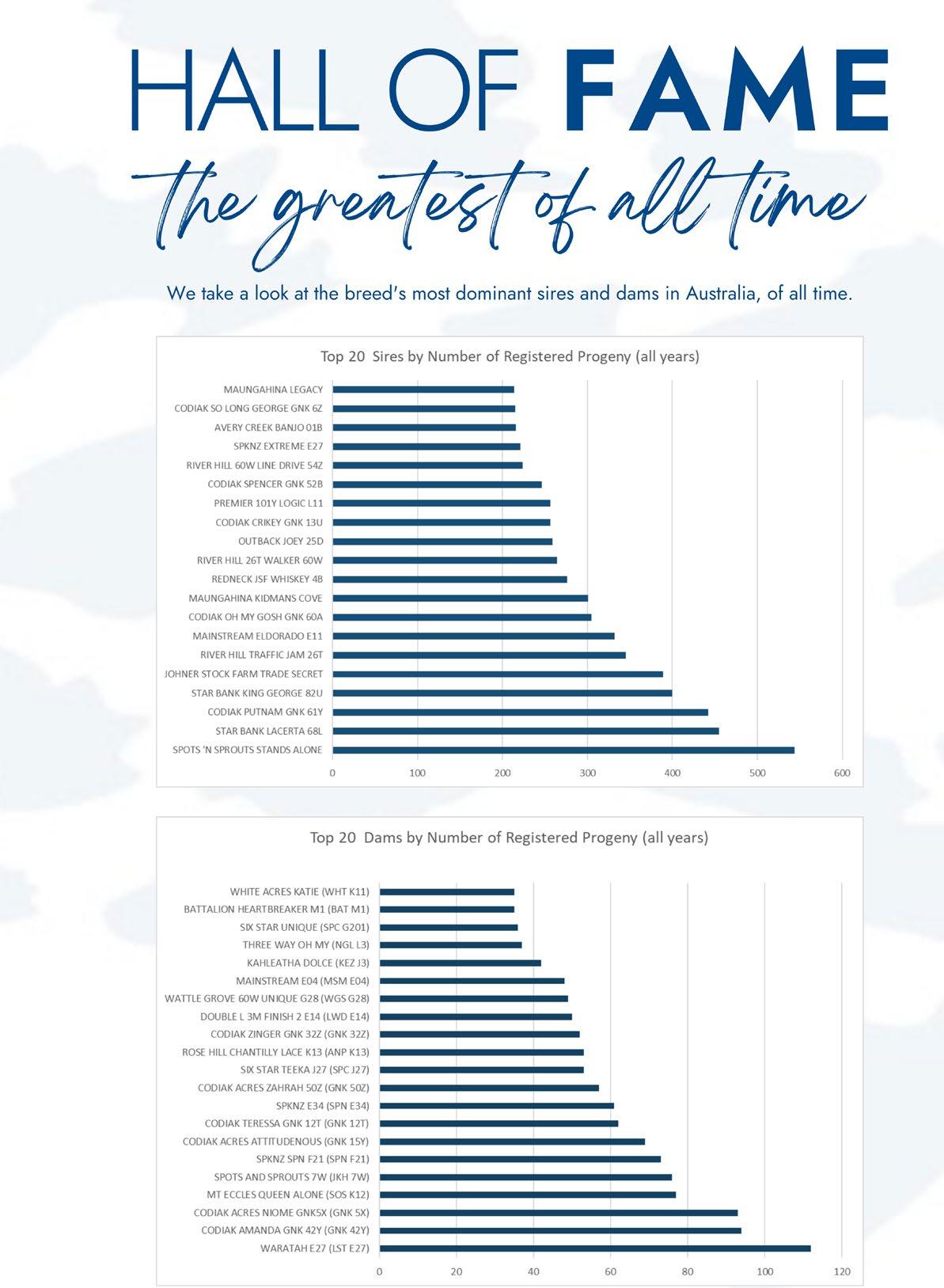
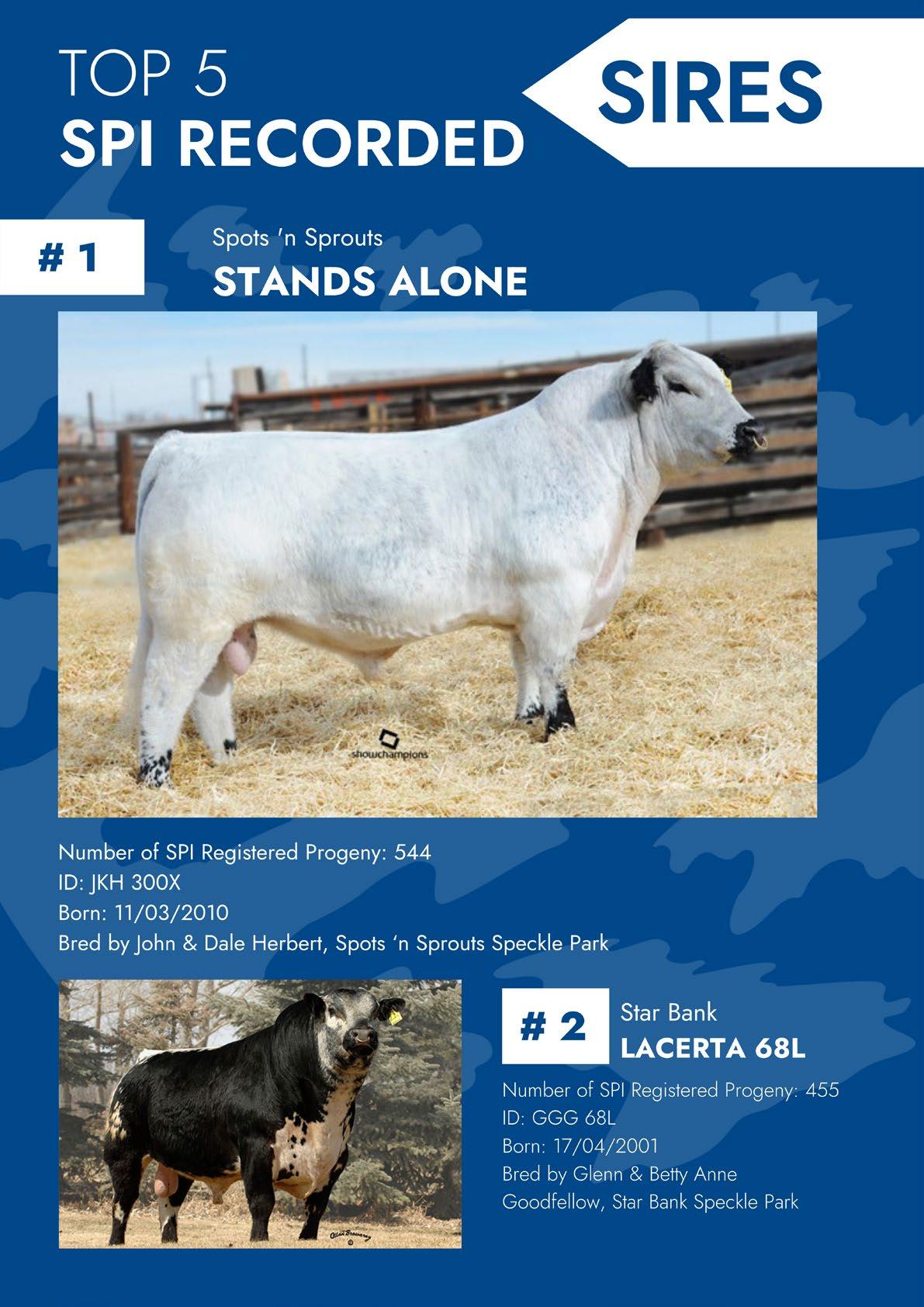
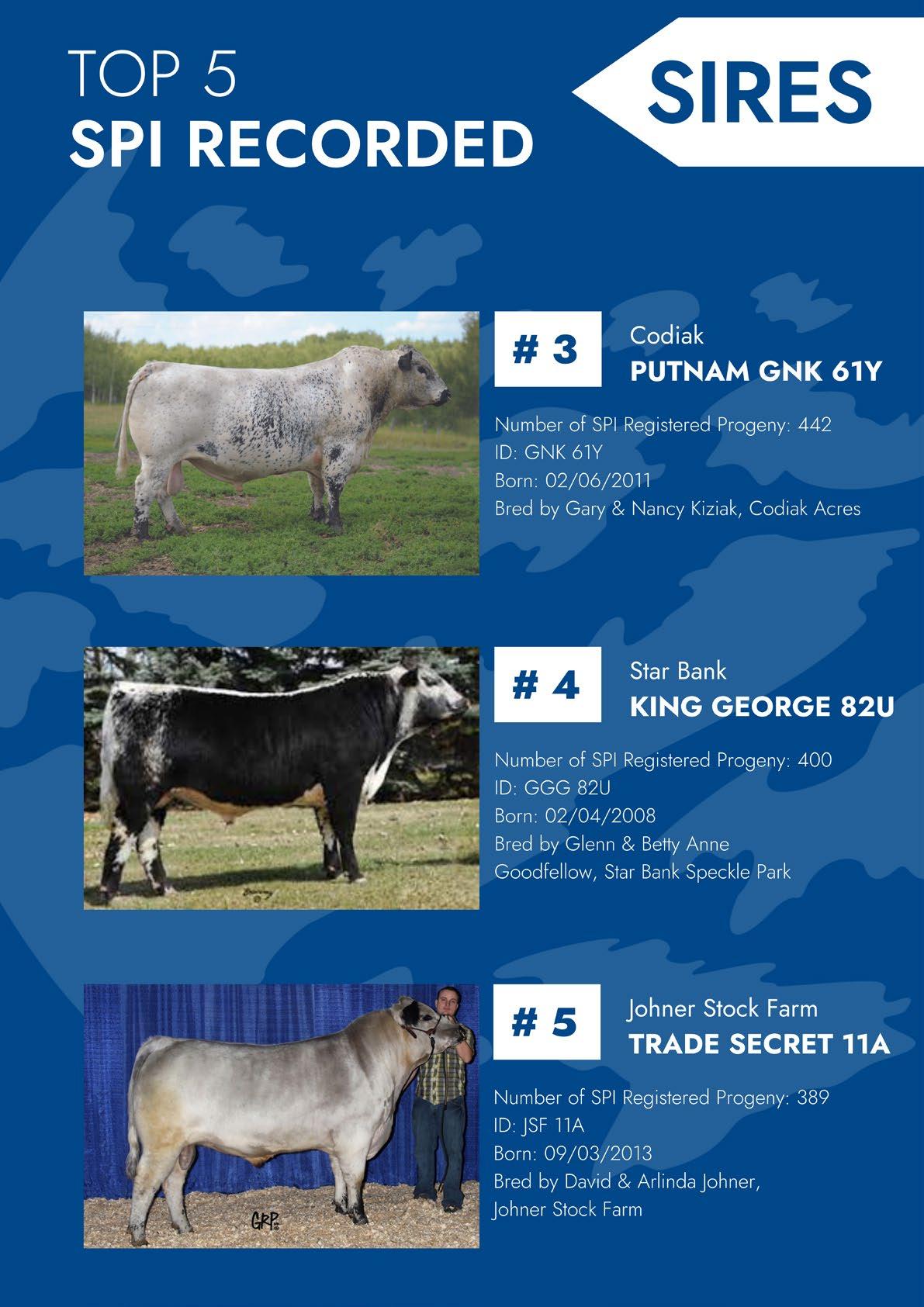
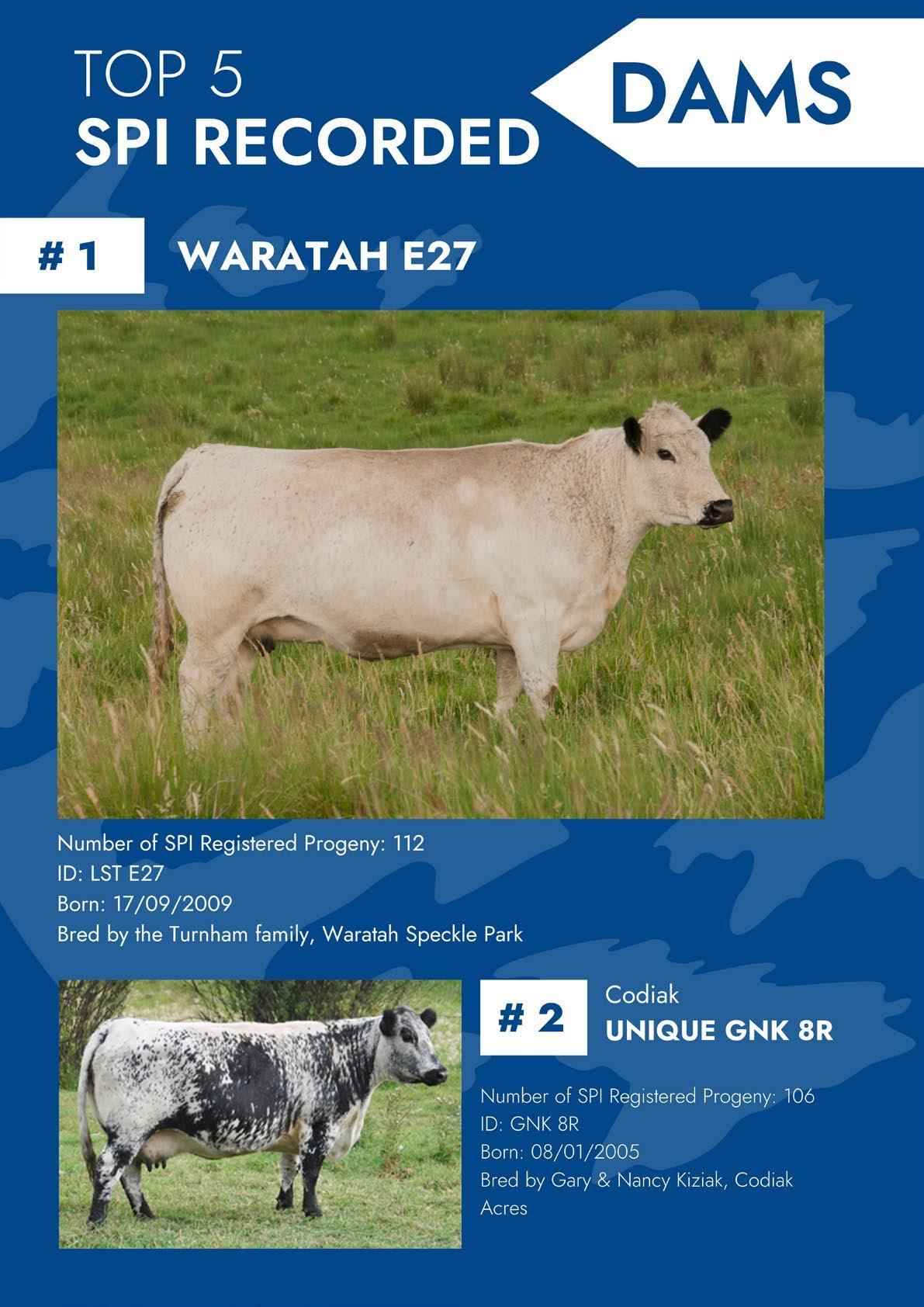
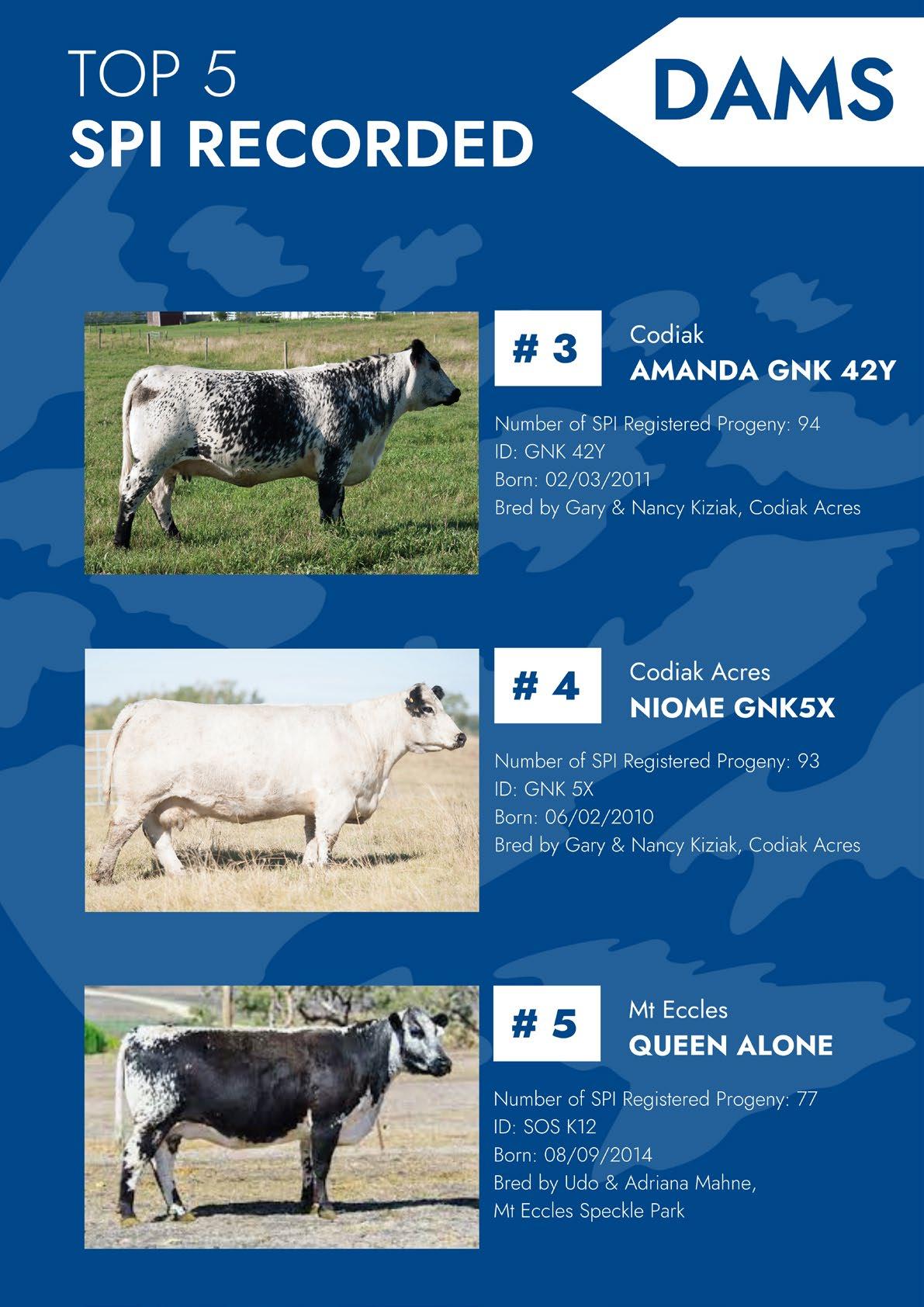
Source: Meat & Livestock Australia. 4th November 2021
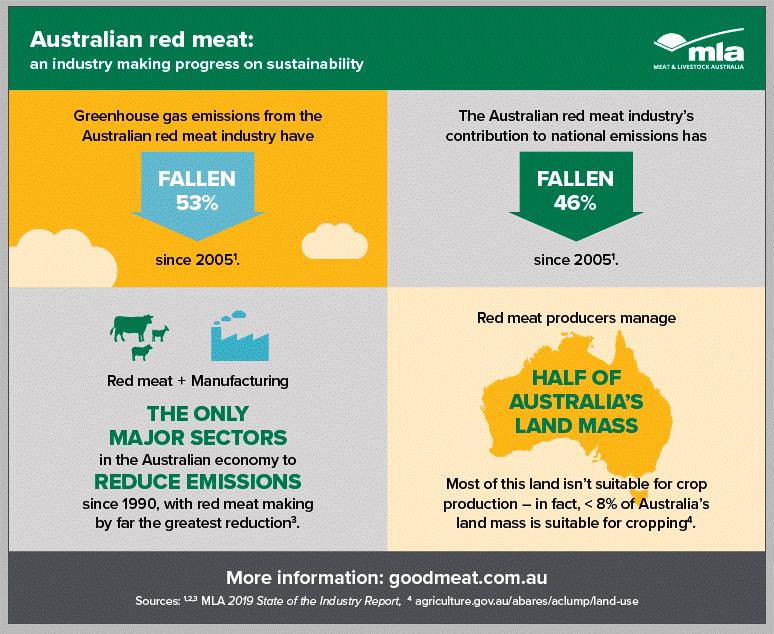
With emissions targets dominating news headlines and COP26 underway in Glasgow, MLA has compiled these FAQs around the red meat industry’s ambition to be carbon neutral by 2030 (CN30).
When did the red meat industry set its carbon neutrality target?
Striving for carbon neutrality is nothing new for our industry – we’ve been on the journey towards net zero emissions since 2017. With ongoing investment in this area, the industry is confident it can achieve its ambition by 2030.
Is this target even possible?
CSIRO modelling has demonstrated CN30 is achievable and is compatible with industry’s target of doubling the value of red meat sales by 2030, with much of the science and practice change under investigation or already available for adoption.
MLA launched the CN30 Roadmap in 2020. It provides industry with enterprise-level pathways and practices that reduce GHG emissions, improve carbon storage and sequestration and provide tools to calculate enterprise-level GHG emissions.
The red meat and livestock industry has already more than halved net greenhouse gas emissions since 2005, which is more than any other sector in Australia.
CN30 means the Australian red meat and livestock industry will make no net release of greenhouse gas (GHG) emissions into the atmosphere by 2030, as measured by the Australian Government’s National Greenhouse Gas Inventory (NGHGI).

The NGHGI reports Australia’s emissions annually, from 1990 to present, in keeping with Australia’s international GHG emissions reduction commitments, with 2005 set as the baseline year. The NGHGI reports GHG emissions as total carbon dioxide equivalent (CO2e) and the amount of carbon dioxide (CO2), methane (CH4), and nitrous oxide (N2O) for each sector.
Our industry’s major GHG emissions are enteric methane (CH4), a by-product of ruminant livestock digestion, carbon dioxide (CO2) from soil and vegetation change, and nitrous oxide (N2O) from soils.
Methane (CH4) is the primary source of GHG emissions from livestock. The gas is a high contributor to global warming but also has the shortest lifespan of all emissions.
The Global Warming Potential (GWP) is the most used and internationally accepted metric to report GHG emissions and is a measure of how much energy a greenhouse gas traps in the atmosphere in a given time period. The GWP of other gases, including methane, is converted to equivalent amounts of carbon dioxide (CO2e) for accounting and reporting purposes.

There are alternative metrics that are being explored for accounting and reporting of short-lived GHGs, such as methane. One is GWP(1), which factors in the atmospheric lifespan of GHGs. MLA is currently exploring using both GWP100 (GWP over a 100year period) and GWP(2) in future reporting on emissions from the red meat industry.
The electricity, energy and transport sectors are significantly larger emitters of GHG than the red meat industry.
The largest emitters are electricity generation (33%), stationary energy (20%) and transport (18%), while the red meat industry makes up approximately 11.8%(3). You’re emitting almost twice as much carbon by driving a car than you are eating beef 3–4 times per week.
The average car travels 13,500km in a normal year and emits 2,443.5kg CO2(4), whereas if you eat beef as per the Australian Dietary Guidelines, the emissions would be 1,131.8kg CO2-e per year.
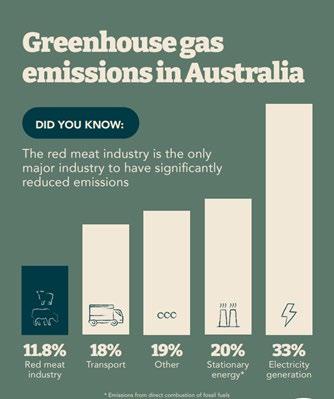
But what about all the methane produced by cattle – isn’t that contributing to global warming? Cattle can actually be part of the climate solution.
It’s true that cattle emit methane, a strong greenhouse gas (GHG), but methane is very different to CO2, which is the most abundant greenhouse gas in the atmosphere.
Methane emissions from cattle break down in the atmosphere, whereas carbon dioxide from burning fossil fuels continues to build up over centuries.
Methane emitted by cattle is recycled within 12 years, whereas carbon dioxide emissions from energy and transport sectors burning fossil fuels remain for thousands of years(5)
Sources: 1 & 3 National Greenhouse Gas Inventory Quarterly Update, 2020. 2 & 4 Carbon Dioxide Emissions Intensity for New Australian Light Vehicles, 2018. 5 University of California, Davis, Methane, cows and climate change, 2020.
Originally published: www.mla.com.au/news-and-events/industrynews/carbon-neutral-by-2030-your-questions-answered2/
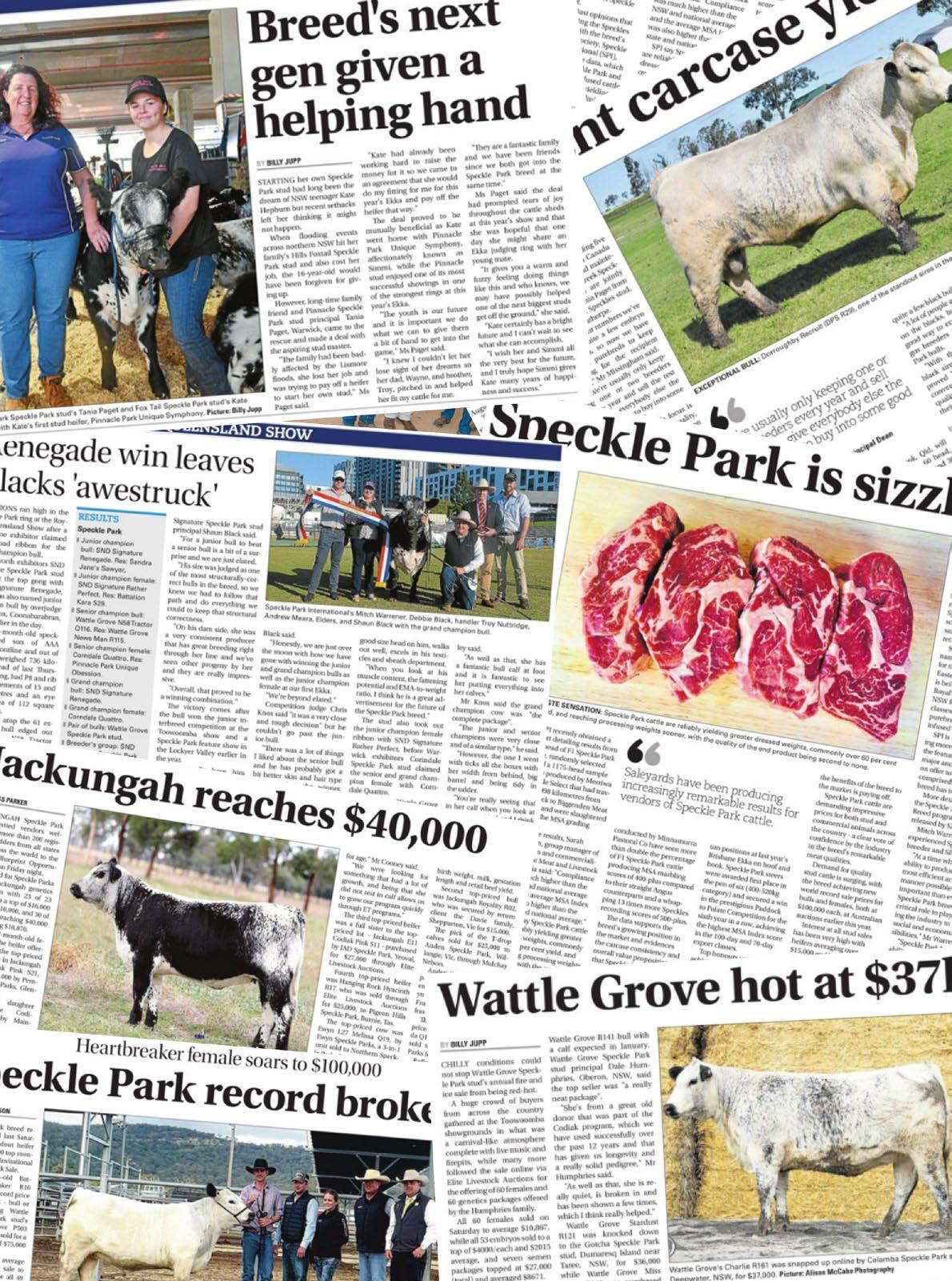
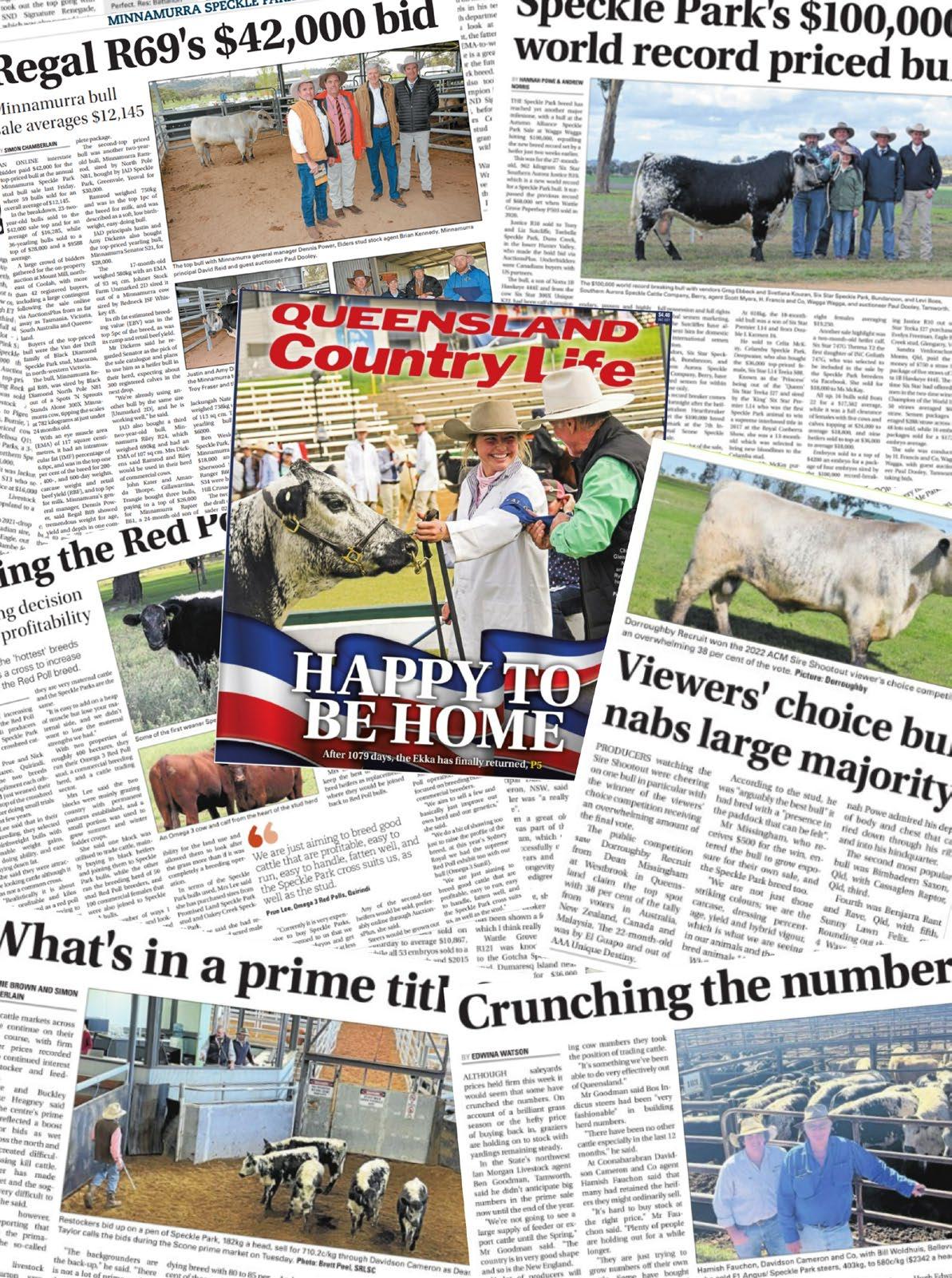
The federal Government has confirmed Australia will join more than 120 countries pledging to reduce methane emissions by 30% by 2030.
It is estimated that approximately half of Australia’s methane emissions are produced by the agriculture sector. Opposition Leader Peter Dutton says the pledge will result in a “tax on cattle” with Leader of the Nationals party, David Littleproud saying the pledge will drive up beef prices. However, the Government has said no taxes or levies will be introduced to reduce livestock emissions and that the Government will be working closely with energy,
resources, agriculture and waste sectors in relation to the reduction of methane emissions.
Climate Change Minister Chris Bowen says “Our country’s focus will be on research and development, on investment, on collaboration and partnership with key sectors.” The Government has awarded $5 million worth of grants for research and development into low-emissions feed supplements. Up to a further $3 billion will reportedly be invested by the Australian Government to support investment in low emission technologies.
While the high rainfall has presented significant challenges across the Country, experienced pasture agronomists are reporting this spring and summer as being the ideal time to plant improved pastures. High subsoil moisture and follow-up rain is fundamental to the successful establishment of pastures. With recent events and current predictions, Queensland and Northern NSW farmers are likely to be well positioned.
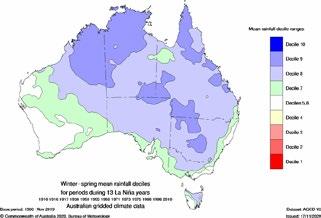
“I haven’t seen as favourable conditions as this for more than 10 years – now is the time to get new pasture in, the odds really are in producers’ favour,” Rockhampton agronomist Ross Newman said. “The key thing is to reduce competition with other plants because it’s hard to get them established when they’re
competing with something else for their water. You can reduce competition with either mechanical or chemical interventions, then plant into the mulch with a good legume-based species mix, and then let the rain do its work. The payback from a good established new pasture is very high.”

Source: www.bom.gov.au
After reopening only 6 months ago, Kimberley Meat Company’s abattoir in Northern WA will undergo a $35 million expansion to increase its processing capacity by approximately 60%.
The only major abattoir in Northern WA, the expansion will include extensions to its boning room, cold storage capacity, yard size and see the addition of a rendering plant. Plans also include the opening of a butcher shop in Broome.

A WA farmer who believed he was purchasing 30 cattle on Facebook Marketplace has been conned out of over $16,000 after transferring money online. After sending a transport company to collect the cattle, the would-be buyer was informed the farm owners were not aware of the sale.
The scammers were using photos of cattle taken from other Facebook pages and posting sale advertisements to various livestock sale pages. Going a step further than the typical Facebook scammer, the fraudster had been engaging in video calls with prospective buyers, purporting to show the cattle in the background.
Police have said they suggest people do not buy goods unseen, if at all possible and encourage users to report scammers to the National Cyber Security Centre.
Source: www.haveagonews.com.au
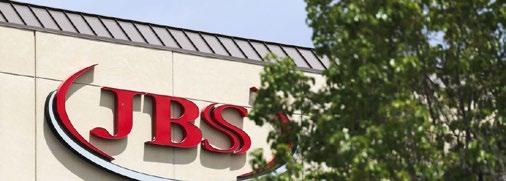
At the beginning of October, the world’s largest meat processor, JBS, closed its plant-based protein manufacturing site in Colorado after less than 2 years in operation.
The closure is reportedly as a result of weakening demand for plant-based proteins, with supply demand failing to achieve originally anticipated growth rates. In America, shares in Beyond Meat

Inc, pioneers in the industry, have fallen more than 75% this year due to softer sales.
Source: www.bloomberg.com
Bali’s Agriculture and Food Security office claims there have been no cases of Foot and Mouth Disease for almost 2 months with the last officially reported case being on 1 August 2022.
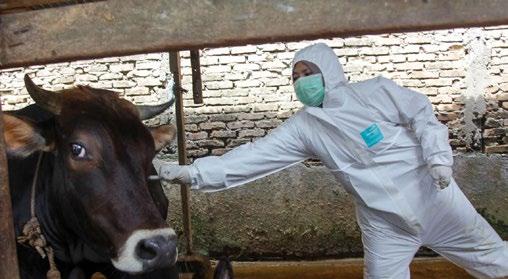
The doubt case on these claims by experts is supported by claims by the ABC that it saw and filmed cattle with clear signs of FMD in September 2022 and reports that officials in Denpasar have confirmed more than 60 head were slaughtered at the start of September due to FMD.
As of late September, almost half of the Balinese herd had received at least one of two FMD vaccinations. Dr Ross Ainsworth, an Australia vet based in Bali
says “I initially was extremely concerned that this disease was going to get to Australia. I thought it was perhaps a 50-50 change. But now I think the threat is much lower.”
Source: www.news.com.au
from
suite
One of the key factors underpinning the accuracy of EBVs is the quantity of performance information that has been recorded with BREEDPLAN. The “Completeness of Performance” product summarises the quantity of pedigree and performance information that has been submitted to BREEDPLAN by an individual seedstock herd.
The “Completeness of Performance” product is one component in a suite of quality assurance products that have been developed by staff at the Agricultural Business Research Institute (ABRI), in association with both Southern Beef Technology Services (SBTS) and Tropical Beef Technology Services (TBTS), in order to maintain the ongoing integrity of BREEDPLAN EBVs.
The standard “Completeness of Performance” product is comprised of two major components:
(i) Annual distribution of “Completeness of Performance” reports to each individual BREEDPLAN member
(ii) Production of a “Completeness of Performance” star rating for each individual BREEDPLAN member
The “Completeness of Performance” reports provide a summary of the information that the seedstock herd has submitted to BREEDPLAN. A range of statistics are provided within the reports including details of the pedigree, weight, carcase, birth and fertility information that has been recorded.
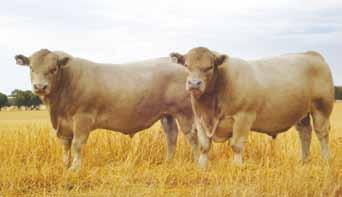
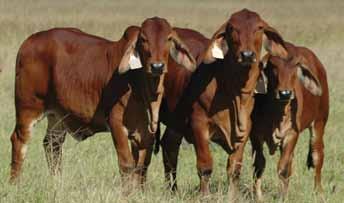
The “Completeness of Performance” reports allow members of BREEDPLAN to assess how “complete” the information is for their animals and importantly identify areas in which additional performance information could potentially be recorded.
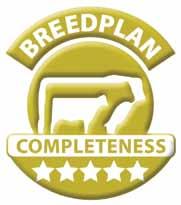
The “Completeness of Performance” star rating is an extension of the reports and can be implemented at the discretion of each individual Breed Society conducting a GROUP BREEDPLAN evaluation. The star rating for each herd is calculated based on the proportion of calves within the herd born in a fixed 5 year period that have performance recorded for each trait. Different criteria are used within each individual breed depending on the traits for which EBVs are calculated within the breed. Each herd receives a star rating on a 0 – 5 scale (including half stars) that summarises the “completeness” of their performance information. Herds with a star rating of “5” are considered to be gold standard and are recording “complete” performance information for all traits for which EBVs are available.
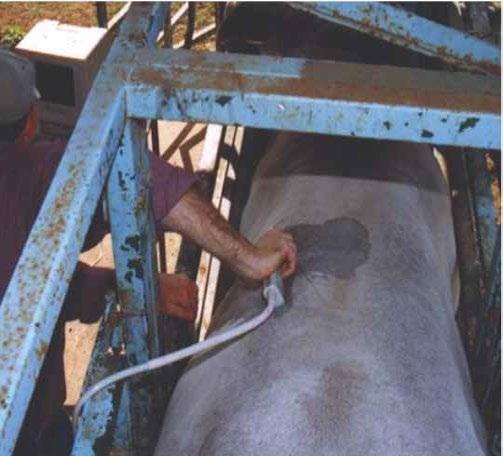





While ultimately EBV accuracy values provide an indication of the reliability an animal’s EBVs, the “Completeness of Performance” star rating provides both seedstock and commercial producers alike with an assessment of how much performance has been submitted to BREEDPLAN by a herd when looking at the EBVs for animals within their herd.
The publication of “Completeness of Performance” star rating information differs slightly between each Breed Society, however the “Completeness of Performance” star rating is generally provided to each herd within their “Completeness of Performance” report, plus displayed on the member enquiry facility within each breed’s online database system. Users have the ability to limit animal and EBV searches based on a herd’s star rating.
Each herd receives a star rating on a 0 - 5 scale (including half stars) that summarises the “completeness” of their performance information
Ph: +61 (2) 6773 3555 Fax: +61 (2) 6772 5376 Email: breedplan@abri.une.edu.au Web: http://breedplan.une.edu.au

Can I register and transfer animals via the website?
Yes, you can!
From the SPI home page (www.specklepark.org), click on ‘Studbook’, then ‘ILROnline login’. If you don’t know your login details, please email MSO, Heather Apps at mso@specklepark.org and she will send your details.
Once you have logged in, you will be able to bring up a list of your animals, your member details, and pending registrations.
Under the ‘Actions’ tab you can enter your registrations
and transfer animals to their new herd. At this stage, only natural calves can be entered for registration this way however, we are working on the capacity to store recipient dam information. Stay tuned for future updates!
As it is a relatively new system, we appreciate it can take some time to become comfortable using ILROnline. For help, there is a button found at the top right-hand side of the page which contains information and step by step guides on how to complete tasks. Alternatively, a video tutorial can be found on the SPI website as pictured below, with further videos available by searching “ILROnline” on YouTube.
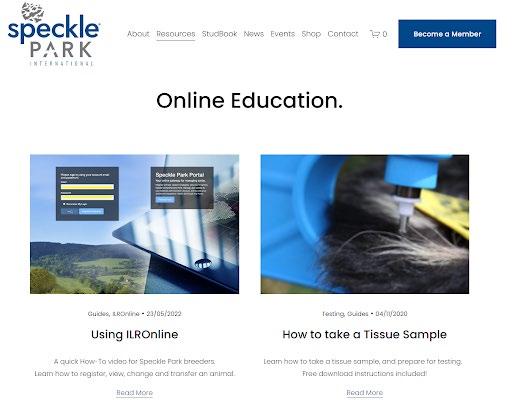
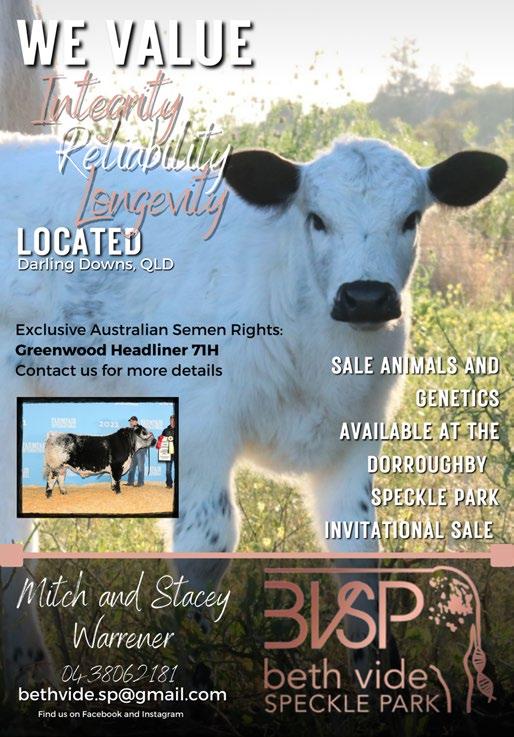
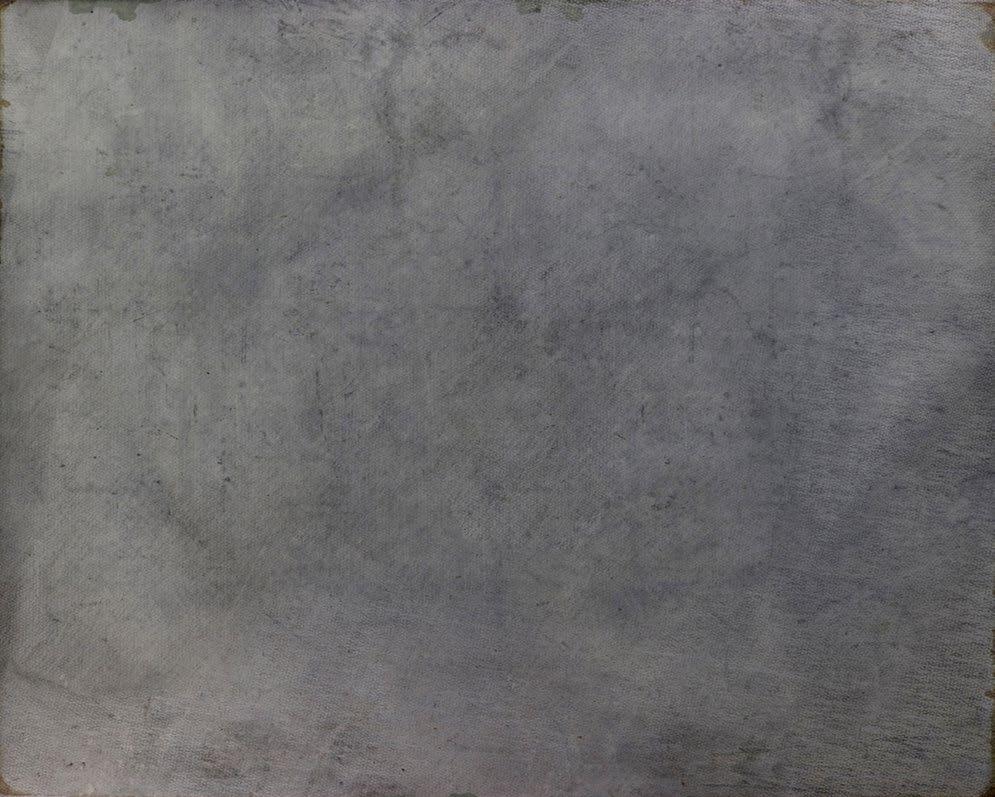
The registration process of Speckle Park calves is a 4-step process. Steps 1 and 2 can be completed simultaneously:
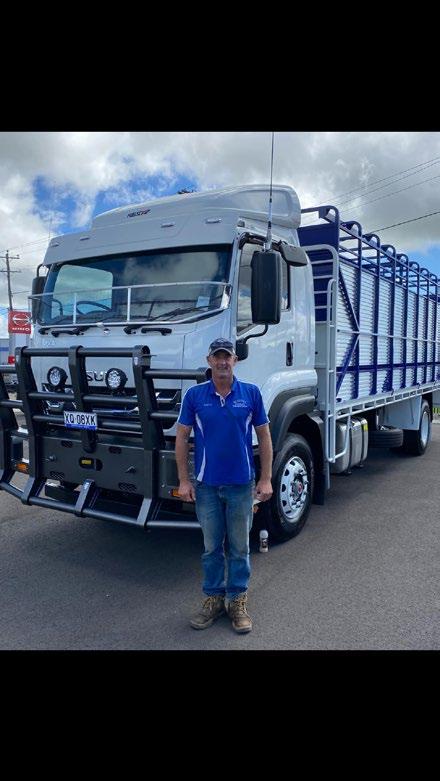
Record the animals with PBB (either using ILROnline for natural calves, the excel spreadsheet located under the “Resources/Forms and Resources” tab on the SPI website, or through your stock recording software).
Complete the DNA Submission form (Neogen for AUS) located under the “Resources/Forms and Resources” tab on the SPI website (you will need to request the SKSTD_BDL test to meet all registration requirements). Email the completed Submission form to dna@pbbnz.com and you will be provided with the relevant paperwork. Do not send your samples away without this paperwork.
Once you have received your paperwork back from Step 2, enclose the received paperwork with the tissue samples and send them to Neogen.
The DNA results will be matched with your registration applications, and if all tests are completed successfully your pending registrations recorded in Step 1 will be accepted as processed registrations.

Further information is contained in the DNA Flowchart located in the “Resources/Forms and Resources” section of the website and in the “Instructions” tab at the bottom of the DNA Submission form spreadsheet or contact our Member Services Officer, Heather Apps mso@specklepark.org anytime or 0491 226 990 (Mon-Thur 8.30am to 1.30pm EDST).

2022 - 2023

26
Speckle Park International Youth Sub-Committee Education Day
Gotcha Speckle Park Dumaresq Island, NSW
DECEMBER
10
Multi-vendor
Going for Gold Genetics Sale - genetics and PTIC recipients
Katandra, VIC On property and via Elite Livestock Auctions
FEBRUARY
2
Whiteline Speckle Park Open Day
Winchelsea, VIC
5
Gin Gin Speckle Park Stud Open Day Benger, WA
9
Gin Gin Speckle Park Stud Bull Sale
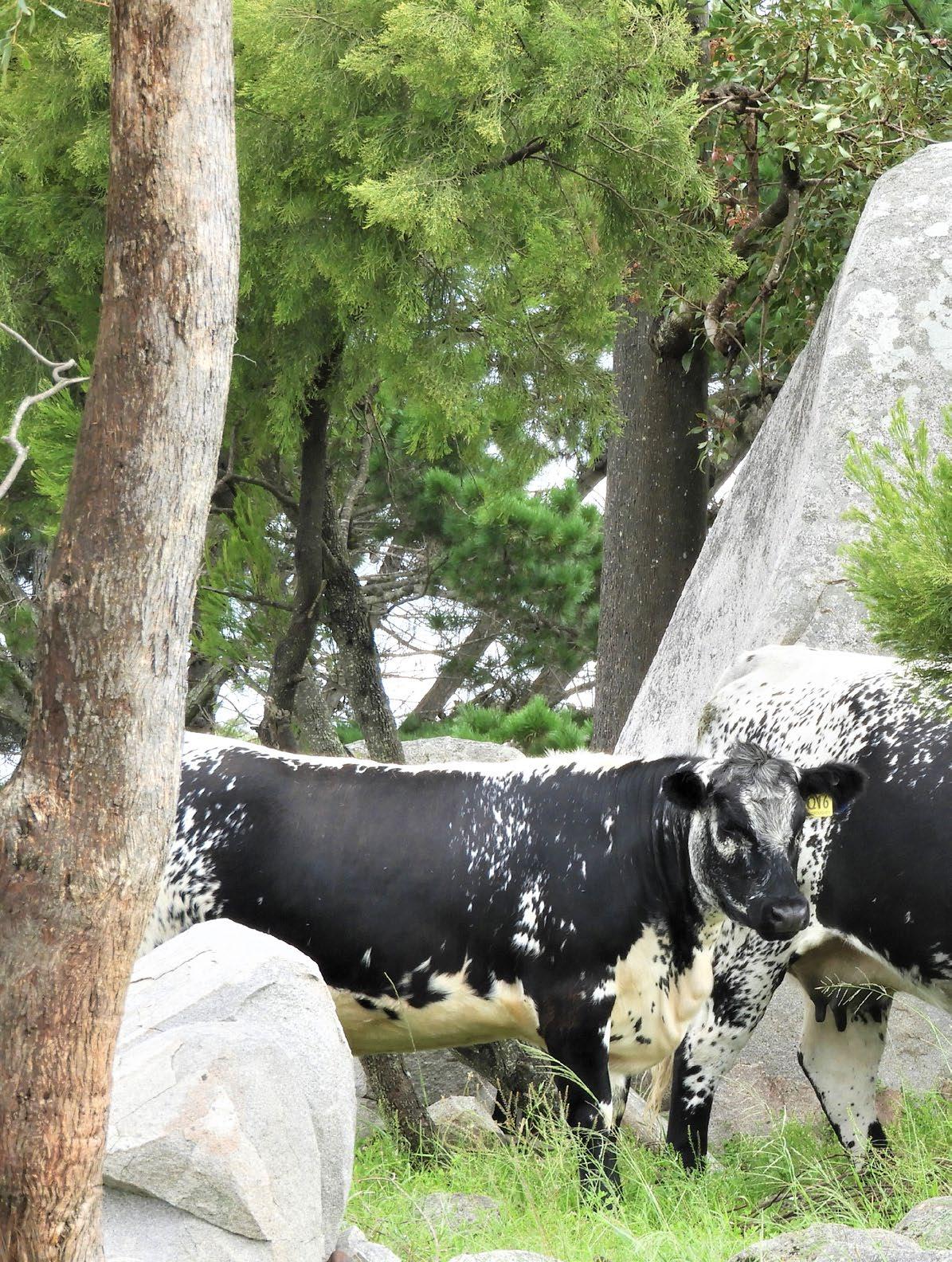
Brunswick Showgrounds, WA On site and via Auctions Plus
MARCH
2
Te Mooi Speckle Park
The Performance Sale - Bulls, females & genetics Londrigan, VIC On site and via Elite Livestock Auctions
4
Keiross Speckle Park Inaugural Sale - Bulls, females & genetics Hay, NSW On property and via Auctions Plus
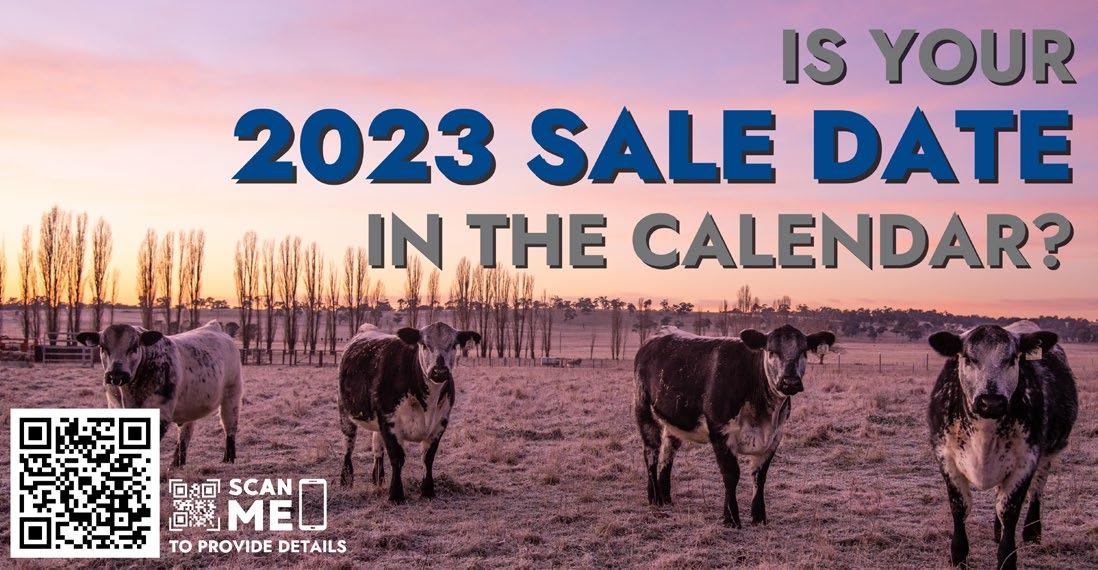
10
Panorama Farms Speckle Park Bull and Female Sale Narrabri, NSW On property and via Elite Livestock Auctions
31
JAD Speckle Park
5th Annual Sale - Bulls & females Yeoval, NSW On property and via Auctions Plus
APRIL 1
Multi-vendor
Speckles in the Mist Sale - Bulls, females & genetics Southern Highlands, NSW On property and via Elite Livestock Auctions
2-10 Sydney Royal Easter Show Speckle Park feature breed classes and events Sydney Show Ground
22
Multi-vendor
Scone Speckle Park Sale - Bulls, females & genetics Scone, NSW On site and via TBC
28
Alinjarra Speckle Park
Annual Sale - 50 Bulls & 50 females Hernani, NSW On property and via Elite Livestock Auctions
MAY
TBC
Black Diamond Speckle Park
Diamonds Are Forever Sale TBC
12
Multi-vendor Blueprint Opportunity Sale - Bulls, females & genetics Pine Lodge, VIC On property and via TBC

AUGUST 12
Oakey Creek Speckle Parks Annual Sale - Bulls & females Manilla, NSW On property and via Elite Livestock Auctions
12/13
Beki Speckle Park & Millstream Springs Cattle Co. Tablelands Better Beef Open Days
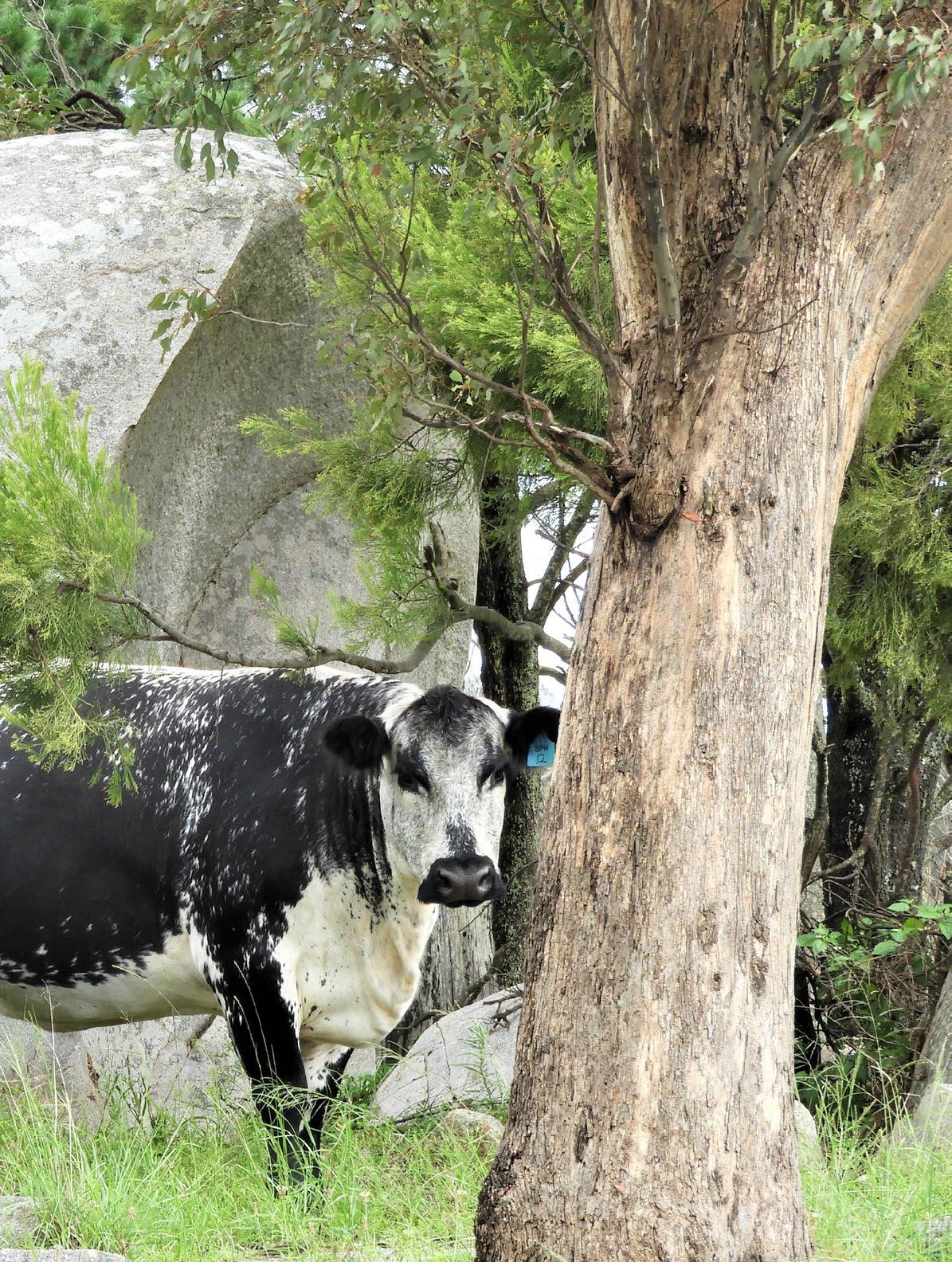
Far North Queensland On property 26
Multi-vendor Dorroughby Speckle Park Invitational Sale - Bulls, females & genetics Westbrook, QLD On property and via TBA
SEPTEMBER
23
Multi-vendor
Hot Spot Speckle Park Sale - Bulls, females & genetics Colinton, QLD On property and via TBA
OCTOBER
6-7
Hillview Speckle Park
Online Timed Auction - Bulls, females & genetics Via Elite Livestock Auctions
Mitch & Stacey Warrener
298 Cronin Rd, Mt Tyson, QLD 4356 Ph: 0438 062 181 E: bethvide.sp@gmail.com
Greenwood Headliner 71H (DJP 71H) Speckle (Caja Zeppelin 1B x Wren of P.A.R) Myostatin Free, PcPc, EDED $ POA
Semen stored at United Cattle Breeders, QLD
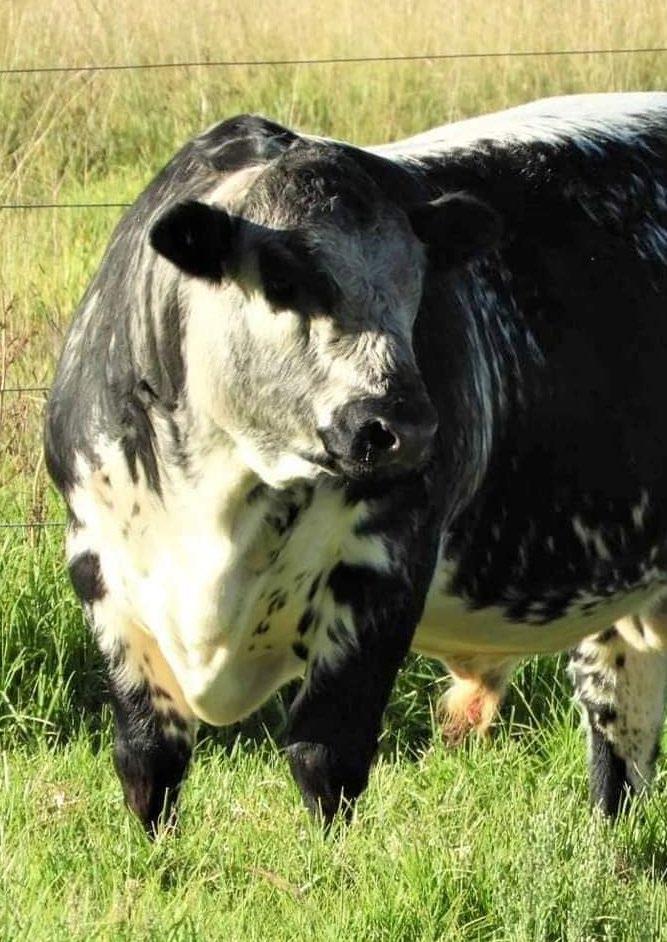
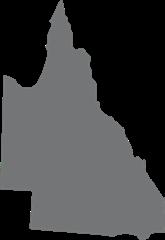
Dake & Stacey Jones 115 Turners Rd, Colinton, QLD 4314 Ph: 0407 679 660 E: stacey@iverydowns.com.au
Wattle Grove He’s A Natural (WGS M120) Leopard (Wattle Grove 31K Eagle K1 x Wattle Grove E41 Unique J135) Myostatin Free, PcPc, EDED $220/straw Stud Use
Battalion Apollo R51 (BAT R51) White (Underhill All Out 1D x Battalion Gracelands P3) Myostatin Carrier, PcPc, EDED $220/straw Stud Use
Wattle Grove Qualify Q926 (WGS Q926) White (Moovin Zpotz Falcon 3X x Codiak Acres Niome GNK 5X) Myostatin Carrier, HPc, EDe $220/straw Stud Use
JAD Quaintly (JAD Q66) Speckle (Maungahina Kidman’s Cove x JAD 61Y Fancy Free N66) Myostatin Carrier, PcPc, EDe $220/straw Stud Use
Wattle Grove Flyer Q842 (WGS Q842) White (Codiak Monument GNK 107D x Codiak Acres Zahrah 50Z) Myostatin Free, PcPc, EDED $220/straw Stud Use
**All straws stored at Beef Breeding Services, QLD
Tania Paget PO Box 50, The Summit, QLD 4377 Ph: 0429 802 153 E: pinnaclepark@bigpond.com
Colgan’s Jennings (CCCC 37J) Speckle (JSF Wall Street 36E x Colgan’s Callie CF 03C) Myostatin Free, PcPc, EDED $POA
Mt Eccles Led Zeppelin (SOS P36) White (Caja Zeppelin 1B x White Acres Katie) Myostatin Free, PcPc, EDED $165/straw Stud Use
Second Chance Ceasar 3C (SCSP 3C) White (Legacy Devito 44X x Tia-Rose of Sara Lee 3T) Myostatin Free, PcPc, EDED $220/straw Stud Use
Silvertip Great Leader (STS 22G) Speckle (Steele Front Runner 5E x Silver Tip Desera 41D) Myostatin Free, PcPc, EDED $POA
Pinnacle Park Shooting Star (PPS P23) Speckle (Mt Eccles Meteorite x Ink Specks Stardust L002) Myostatin Free, PcPc, EDED $110/straw Stud Use
** All straws stored at United Cattle Breeders, QLD
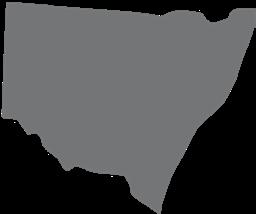
Alexandrea & Peter Munday
160 Loudoun-Shand Rd, Caloola, NSW 2795 Ph: 0435 713 683 E: specklepark-8mile@outlook.com
8 Mile Ironhide (ALC R02) Leopard (Ravenworth Invictus 103C x JAD 61Y Ultra N63)
Myostatin Free, PcPc, EDED $88/straw Stud or Commercial Use
Wattle Grove Fifteen (WGS P7431) White (Avery Creek Banjo 1B x Codiak GNK 16X)
Myostatin Free, PcPc, EDED $88/straw Stud or Commercial Use
** All straws stored at Holbrook Breeders, NSW
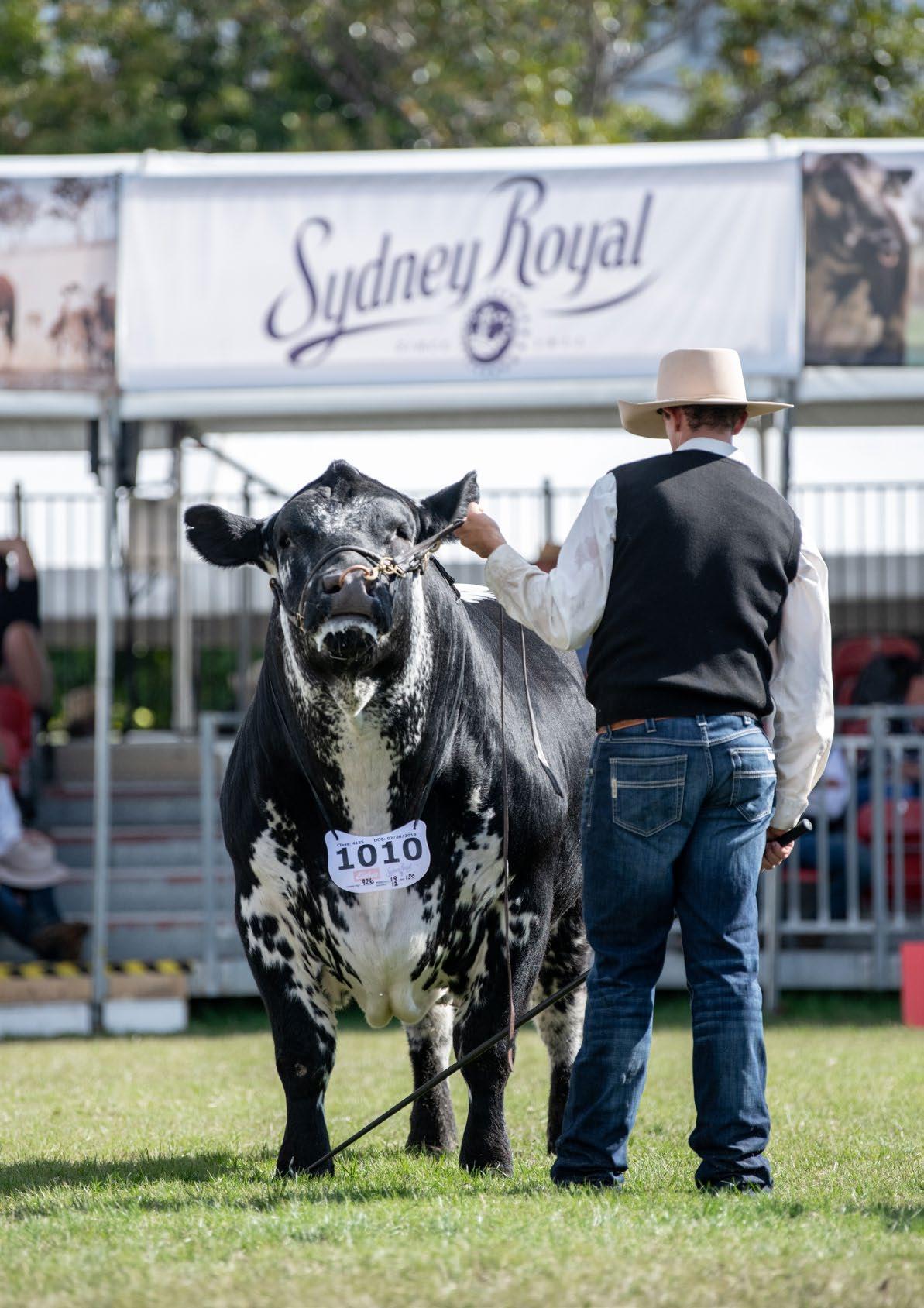
Roz Alexander Ph: 0434 370 839 E: roz.alexander@hvsp.net
Notta 110B Hot Topic 305E (JMG 305E) Leopard (Spots ‘n Sprouts Bart 110B x Star Bank Theta 42T) Myostatin Free, PcPc, EDED $275/straw Stud Use OR $33/ straw Commercial Use
Battalion Stockade (BAT M3) Speckle (Spots ‘n Sprouts Stands Alone 300X x Six Star 26T Lightning Lady E204)
Myostatin Carrier, PcPc, EDED $220/straw Stud Use OR $33/straw Commercial Use
Notta 1B Hawkeye 444E (JMG 444E) Speckle (Caja Zeppelin 1B x Notta 50S Janette 5W) Myostatin Carrier, PcPc, EDED $220/straw Stud Use OR $33/straw Commercial Use
** All straws stored at Holbrook Breeders, NSW
Julie Roberts 2434 Jugiong Rd, Jugiong, NSW 2726 Ph: 0478 606 763 E: hollycott@bigpond.com
Volcanic Plains Majic Mojo M001 (VPS M001) White (Almarlea 68G Lacerta F156 x Waratah Melisa G34) Myostatin Carrier, PcPc, Unknown Colour $220/straw Stud Use OR $27.50 Commercial
Semen stored at Holbrook Breeders, NSW
Dennis & Louise Saint 1409 Namoi River Rd, Manilla, NSW 2346 Ph: 0419 289 754 E: oakeycreekspeckles@gmail.com
Oakey Creek Ulysses (S23 P35) Leopard (Upto Specs Ulysses 25U x Codiak Amanda GNK 42Y) Myostatin Free, PcPc, EDED $275/straw Stud Use
Oakey Creek Cliff Hanger (S23 R34) White (Legacy Cliff Hanger CJT 65D x Legacy Willow CJT 57C) Myostatin Free, PcPc, EDED $385/straw Stud Use
** All straws stored at Holbrook Breeders, NSW
Naomi Hobson 17026 Kamilaroi Hwy, Turrawan Narrabri, NSW 2390 Ph: 0488 423 698 E: panoramafarmssp@gmail.com
Notta 151A Cause ‘n Effect 309C (JMG 309C) Speckle (Notta 101Y Black Cap 151A x Notta 300X Theta 11A) Myostatin Free, PcPc, EDED $165/straw Stud Use
Straws stored in Aus & Canada. NZ Qualified Panorama Effect Q03 (PFS Q03) White (Notta 151A Cause ‘n Effect 309C x Panorama Keller) Myostatin Free, PcPc, EDED $110/straw Stud Use OR $33/ straw Commercial Use
Panorama All There Q19 (PFS Q19) Leopard (Underhill All Out 1D x Underhill Flat Black 12E) Myostatin Carrier, PcPc, EDED $110/straw Stud Use OR $16.50/straw Commercial Use
** Straws stored at Australian Premier Genetics, NSW
Melissa Reddie
2209 Newell Hwy, Biddon, NSW 2827
Ph: 0421 119 872 E: melissa.reddie@gmail.com
Calico Creek Butane 8B (LS 8B) Speckle (P.A.R Throttle 6T x Petula of P.A.R 61P) Myostatin Free, PcPc, EDED $330/straw Stud Use
Semen stored at Holbrook Breeders, NSW
Baw Baw Dark ‘n Stormy (PCJ Q4) Black (Fish Creek Farms Storm M1 x Kahleatha Dolce) Myostatin Free, PcPc, EDED $165/straw Stud Use
Semen stored at Wilkinson Breeding Services, NSW


Dale Humphries
273 O’Connell Rd, Oberon, NSW 2787 Ph: 0429 360 419 E: info@wattlegrovespecklepark
Wattle Grove Player P201 (WGS P201) White (Avery Creek Banjo 1B x Wattle Grove E41 Stardust J33) Myostatin Free, PcPc, EDED $220/straw Stud Use OR $33/ straw Commercial Use
Wattle Grove Road Block N328 (WGS N328) Leopard (Mainstream Eldorado E11 x Wattle Grove Amys Girl E42) Myostatin Free, HPc, EDED $220/straw Stud Use OR $33/ straw Commercial Use
Wattle Grove Smoke and Mirrors L275 (WGS L275) Leopard (Codiak Putnam GNK 61Y x Codiak Good Golly GNK 11U) Myostatin Free, Unknown, Unknown $220/straw Stud Use OR $33/straw Commercial Use
Wattle Grove N58 Tractor Q116 (WGS Q116) Speckle (Wattle Grove Theodore N58 x Wattle Grove E11 Unique N25)
Myostatin Carrier, PcPc, EDED $220/straw Stud Use OR $33/straw Commercial Use
Wattle Grove Dust ‘n Smoke P07 (WGS P07) Leopard (Wattle Grove Smoke and Mirrors L275 x Wattle Grove Stardust E2)
Myostatin Free, PcPc, EDED $220/straw Stud Use OR $33/ straw Commercial Use
** All Straws stored at various places in QLD & NSW
CF & HM Spencer 642 Hancock’s Bridge Rd, Kotupna, VIC 3738 Ph: 0408 777 261 E: spencer@activ8.net.au
Wattle Grove 34R Oscar J93 (WGS J93) Speckle (Codiak Oscar GNK 8S x Codiak Ronnie CDK 34R) Myostatin Free, PcPc, EDED $220/straw Stud Use
Straws stored at National Herd Development OR Ovasem, VIC
Aaron & Allison Potter 230 Treadwells Rd, Poowong North, VIC 3988 Ph: 0428 599 273 E: aaronallison@dcsi.net.au
Mt Eccles SOS Gladiator (SOS P21) White (Caja Zeppelin 1B x Mt Eccles Queen Alone K1) Myostatin Free, PcPc, EDED $88/straw Stud Use OR $22/ straw Commercial Use
Straws stored on Farm
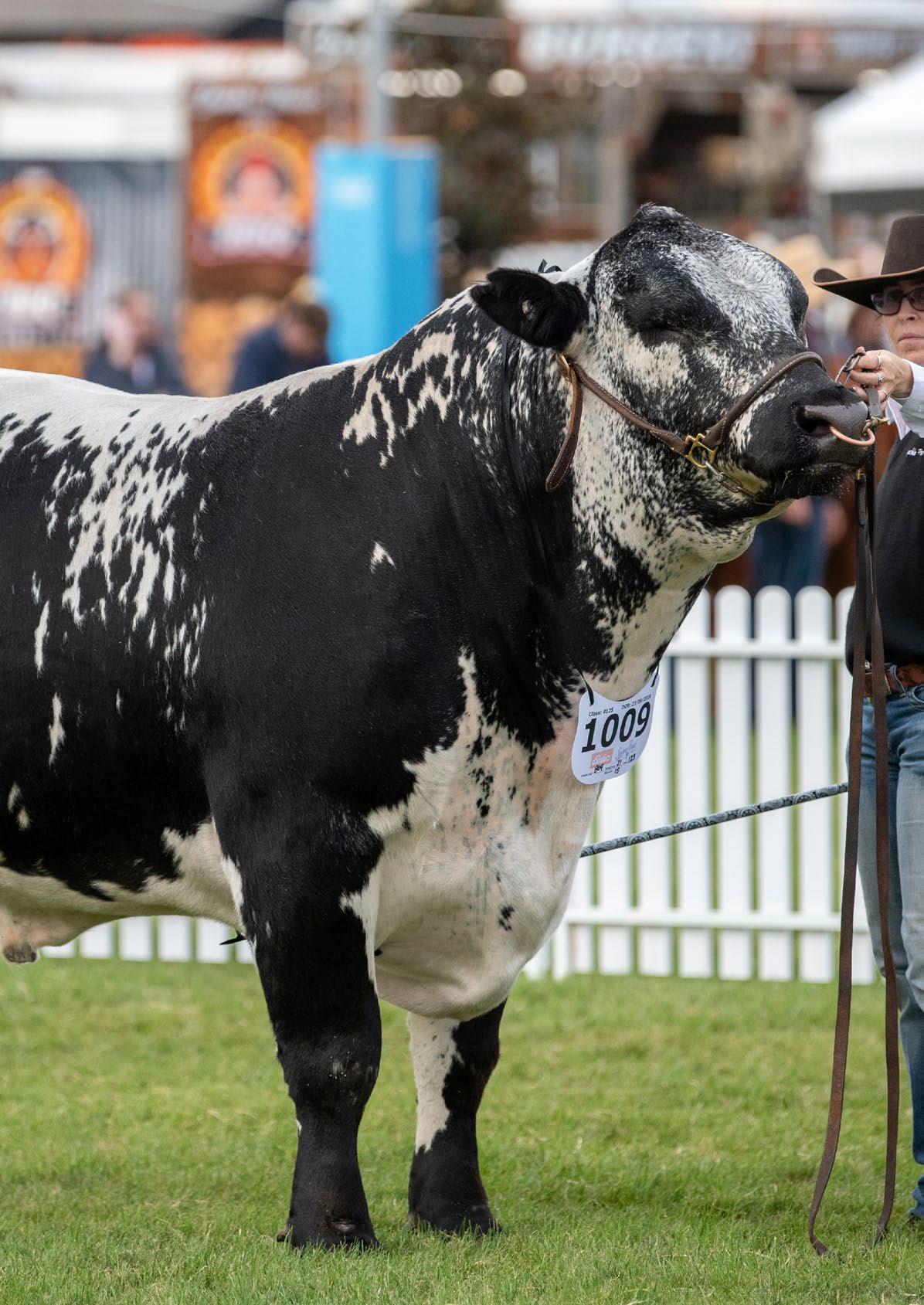


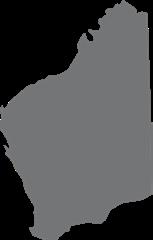
Lucille Macreadie 970 Pipers Brook Rd, Pipers Brook, TAS 7254 Ph: 0429 891 748 E: lucille@birdsfarmtas.com.au

Birds Farm Tas L11 Qadir (MAC Q06) Speckle (Premier 101Y Logic L11 x Wattle Grove 82U Teeka G64) Myostatin Free, PcPc, EDED $165/straw Stud Use OR $38.50 Commercial Use
Hillview S A Rick (RLB N11) Speckle (Spots ‘n Sprouts Stands Alone 300X x Six Star 3M Rendezvous D27)
Myostatin Free, PcPc, EDED $165/straw Stud Use OR $38.50 /straw Commercial Use
** Above Straws stored at Robertsons Livestock Services, TAS
Roscrea Polar (JRS K1) Leopard (Codiak Eagle GNK 46Y x A & W 18U) Myostatin Free, HPc, EDED $132/straw Stud Use OR $33/ straw Commercial Use
Straws stored at Bovine Breeding Services
Peter Gordon
399 Ridgley Hwy, Mooreville, TAS 7321 Ph: 0428 522 119 E: nickland399@bigpond.com
AAA Walker Frontline M24 (AAA M24) White (AAA Ace J6 x Mt Rankin Teasher G5) Myostatin Free, PcPc, EDED $POA
Straws stored at TLG or Holbrook Breeders, VIC
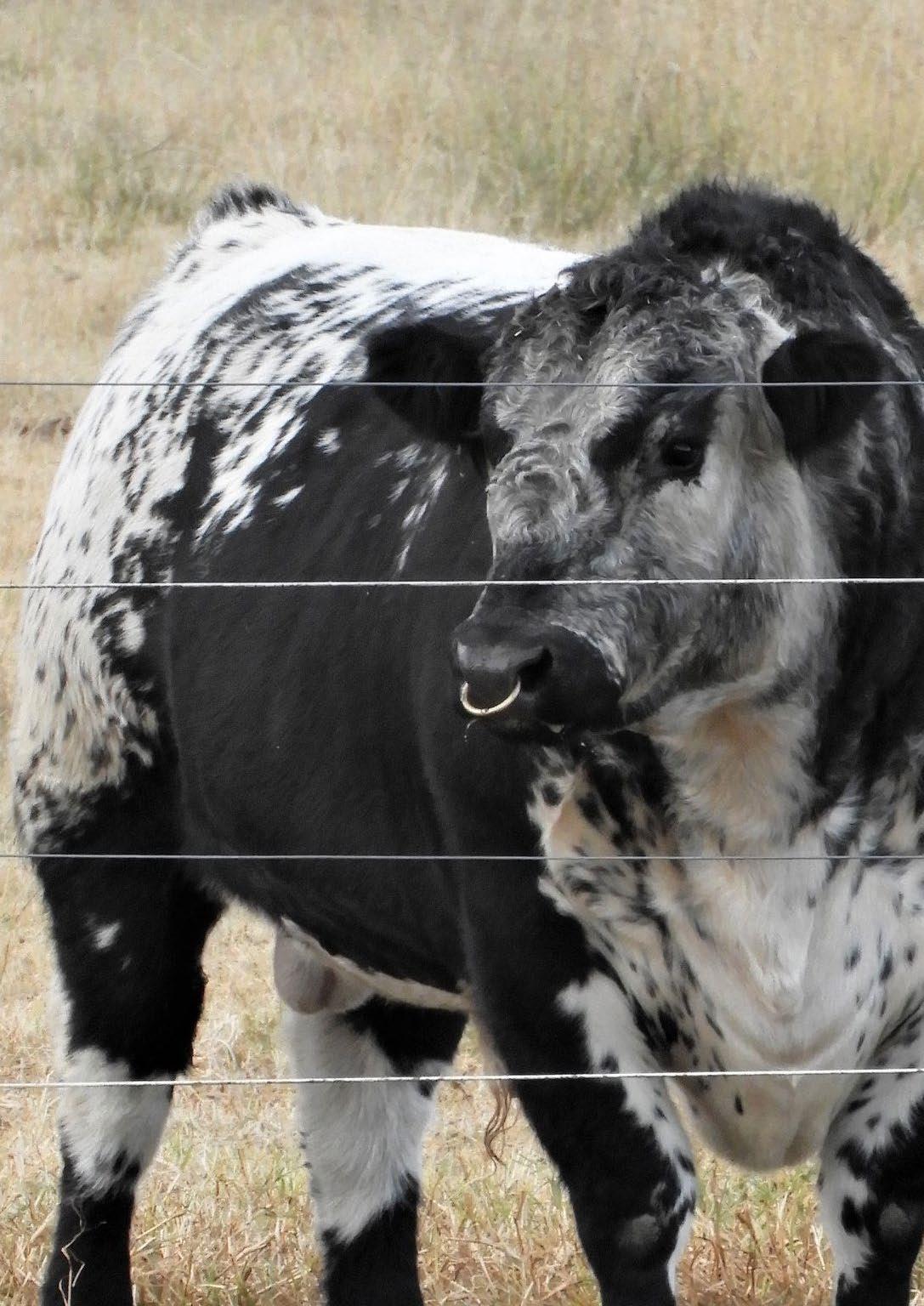
Mark Woollett
12 Millicent Rd, Penola, SA 5277 Ph: 0417 852 051 E: loch-sloy@bigpond.com
Epic Marvel M8 (ESM M8) Speckle (Almarlea 28K Lacerta E7 x Star Bank 300X Janette H2) Myostatin Free, PcPc, EDED $88/straw Stud Use OR $44/ straw Commercial Use
Straws stored at Nationwide VIC
Anthony Trainor
P.O Box 46, Bullsbrook, WA 6084 Ph: 0407 775 818 E: tonytrainorpersonal@gmail.com
Gin Gin Hulk (AST H1) Speckle (River Hill 26T Walker 60W x Styals Passion Star 15P) Myostatin Free, Unknown, Unknown $220/straw Stud Use OR $44/straw Commercial Use
Gin Gin Ned Kelly (AST N105) Speckle (Mainstream Eldorado E11 x Wattle Grove Amys Girl E42) Myostatin Free, HPc, Unknown $220/straw Stud Use OR $44/straw Commercial Use
** All straws stored at Bos Vet Rural, WA
